
- Bosnia + Herzegovina
- Faroe Islands
- Philippines
- South Africa
- French Polynesia
- Solomon Islands
- Work With Me

17 Helpful Things To Know Before Visiting The Solomon Islands
8 September 2019.
When it comes to tropical island destinations, it can be far too easy to paint them all with the same broad brush strokes, pigeonholing them as either the extravagant all-inclusive Bora Bora bunch or the wild, party-all-night Thailand variety.
The Solomon Islands, however, march to a very different drum, abandoning these all too common stereotypes in favour of a raw, rustic and more authentic island experience.
Pristine reefs, dreamy castaway islands and soaring volcanic peaks sit alongside slow-paced village life, a strong cultural identity and a rich, sometimes turbulent past.
What’s more, this gorgeous string of islands remains virtually undiscovered by the hoards of tourists that flock elsewhere in the region.
For anyone starting to plan their trip, these are my top tips to help you prepare for travelling in the Solomon Islands, the essential things to know, the amusing quirks and a few helpful hints on what to expect from your visit.
* This post includes affiliate links and any purchases made through these links will earn me a small commission at no extra cost to you. *
The Solomon Islands receive less than 30,000 visitors each year making it one of the least visited tourist destinations in the world.
Compare that to the more than 800,000 that touch down in neighbouring Fiji or 6.5 million that flock to Bali each year.
For intrepid travellers seeking somewhere offbeat and remarkably untouched by mass tourism, where adventure is at your fingertips and uncrowded beaches, reefs and waves are in full supply, then this tiny island chain adrift in the South Pacific is a perfect choice
In this age of over tourism and doing it for the ‘gram, it also makes a wildly refreshing change to explore a place where tourism is still very much in its infancy and that you haven’t already seen a thousand times peppered throughout your Instagram feed – sadly something that has become increasingly difficult to find in recent years.

The Solomon Islands are one of the last frontiers of unspoilt reef with its warm waters and the mingling of currents bringing an explosion of life to this corner of the Pacific.
Its seabeds are littered with wreckages from WWll, its lagoons are frequented by many larger creatures like manta rays, turtles and whales alongside numerous pelagics and it’s home to some of the world’s most pristine reef which conceals countless tiny critters.
Munda is an excellent place to begin your underwater exploration boasting spectacular reef dropoffs, vibrant coral gardens rich in macro life and several wrecks, while Gizo to the north is incredibly biodiverse and home to the second-highest fish count in the world.
In short, for inquisitive divers and snorkellers, it’s absolute heaven and should not be skipped on your Solomon Islands itinerary !
Keen divers can also attend the Solomon Islands Dive Festival in October 2019 which will celebrate the fantastic underwater world of the western province.
For more information, start with Dive Munda and Dive Gizo , the two premier dive shops in the region, or for a full-on dive adventure, consider a Solomon Islands liveaboard experience.

The Solomons may be most famous for their spectacular underwater world, rich in marine life and with more wrecks than you can shake a stick at, but that certainly doesn’t mean there’s nothing to do up on land.
These volcanic islands, blanketed in lush fertile forest, are ripe for exploration.
Just beyond Honiara, dense jungle and rugged ridgelines sprawl across the interior of Guadalcanal, concealing spectacular waterfalls, muddy trails and the archipelago’s two highest peaks. Further afield, it’s possible to clamber up Kolombangara Island, a challenging 2-day trek that involves fording rivers, tackling jungle vines and traipsing the mossy forests of the now extinct crater. The twin peaks on nearby Rendova Island also make for adventurous hiking.
For those seeking something more slow paced, birdwatching, historic WWll sites and local village tours are also an option.

Malaria infection is a risk throughout the Solomon Islands and it’s a good idea to take antimalarials for the duration of your stay and following your trip as prescribed.
Overall, I didn’t find mosquitoes to be much of an issue, however, it’s always a good idea to take preventative measures like covering up in the evenings when insects are more prevalent, using repellent as needed and a mosquito net when available.
Atovaquone-proguanil (brand name Malarone), Mefloquine hydrochloride (brand name Lariam) and Doxycycline are all effective in this region. Consult your doctor for the best option and make yourself aware of the possible side effects. Some may have psychiatric effects, while others, like Doxycycline, can make your skin more sensitive to light meaning you’ll need to be extra careful to cover up when in the sun.

DON’T MISS: A PERFECT ONE WEEK ITINERARY FOR THE SOLOMON ISLANDS
Any proper trip the Solomon Islands will mean a great deal of time spent lazing on castaway islands or kicking back in your remote jungle hideaway – hardly the kind of place where you’d expect to find an ATM.
Try to pay for your big-ticket items in advance – like flights , accommodation and dive trips – but be sure to withdraw enough cash when you can for meals, market visits and other spontaneous activities.
Some of the larger island resorts do accept credit cards, otherwise you’ll find plenty of ATMs in Honiara (though note that there are none at the airport) along with a few in Gizo and Munda. As ever, try to swap your big bills at the larger establishments in town before setting out to the far-flung islands.
You’ll also find a handful of money changers at the airport and in the larger towns, though in my experience the rates weren’t great and the bills available were rather limited so I’d suggest reserving this option only for emergencies. Aussie Dollars are best for exchanging.
TOP TIP | Many ATMs in the Solomon Islands do charge a withdrawal fee. For Aussies, the ING Everyday Debit Card is great for travel as they refund all international ATM and transaction fees provided you fulfil a few straightforward requirements each month.
Banana boats and propellor planes will be your bread and butter of travel in the Solomon Islands.
Solomon Airlines offer a wide network of domestic routes that connect Honiara with key hubs in the outer islands. In fact, my flight from Honiara to Munda, tracing the verdant hills of Guadalcanal and the iridescent thread of fringing reef leading the way north, was one of my favourite experiences in the Solomon Islands.
Chances are, you’ll be starting your trip in much the same way before transferring to a boat.

This speck in the South Pacific plays host to just shy of a thousand islands – everything from hulking jungle-clad volcanoes to the teeny, patch-of-sand-sprouting-a-single-palm-tree variety. Out here, the ocean is the crucial lifeline that connects them all and the communities they support and the best and really only way to fully experience that is by zipping about on the water.
Thankfully, travelling within the lagoons generally means calm seas accompanied by spectacular views, but as you leave the protection of the outer reef things can get rather choppy. I’d suggest always having a dry bag on hand to protect your valuables, just in case ( I use one like this! ).
For most short distance boat trips and tours, your accommodation will be happy to help you organise your transportation.
Across longer distances, there’s a weekly ferry service that departs Honiara on Sunday morning bound for Gizo via Munda. The 2-day crossing can be rough but is a decent option for those on stricter budget and looking to avoid the costly internal flights. Visit the Honiara port for bookings.
TOP TIP | Flights are occassionally overbooked so be sure to confirm your tickets before hand and arrive at the airport with plenty of time to spare to avoid missing out.
I know, I know, I just said that flight was a highlight, but these internal flights do also come at a considerable cost.
Thankfully for your wallet, it’s now possible to fly direct from Brisbane to Munda with Solomon Airlines which departs every Saturday morning, returning in the afternoon. You’ll still be able to enjoy the stunning aerial views as you descend over the reef, as well as saving yourself a couple of hours of waiting in airports and a few hundred dollars in the process.
Munda acts as an excellent base from which to explore and is just two hours by boat from Gizo for those looking to venture further across the western province.
These flights, however, are in high demand so be sure to book well in advance.
Search for the best Solomon Islands flight deals here.

Underwater camera | With diving and snorkelling being the must-do activity in the archipelago, you’ll want a decent camera to capture all the underwater action. After kicking myself for not taking a suitable camera for my last few months in Asia, I wasn’t about to make the same mistake again. Now equipped with the Olympus TG-6 , I was super impressed with the image quality, especially using the specialised underwater and macro settings which are excellent for photographing the small critters. It’s also waterproof up to 15m (so perfect for snorkelling) and has a large LCD screen so you can actually see what you’re doing. For those wanting to take it diving, the PT-059 Underwater Housing extends its depth capabilities to 45m and supports external flashes and lens accessories.
Light rain jacket | A rain jacket may not be the first thing that comes to mind for a beach holiday, but in the Solomons it’s an absolute essential! Despite being dry season, I had plenty of rain during my trip and while I often managed to find shelter, if you’re unlucky enough to be clambering about in the jungle or on an extended boat ride, a rain jacket will definitely come in handy. I love my Patagonia Torrentshell which is lightweight and packs down small when you’re not using it.
Reef safe sunscreen | If you’re here to see the reef, you wouldn’t want the chemicals in your sunscreen to destroy it. Honestly, I’m still trying to find a brand of sunscreen that I love, but these are a few that come recommended: Stream2Sea , Sun Bum Mineral , Tropical Sands and Blue Lizard . I was also very impressed that Dive Munda provides reef-safe sunscreen at their shop for all divers.
Antimalarials | Malaria is a risk throughout the Solomons so don’t forget to take your antimalarial medication. To be effective, most treatments need to begin a day or two before you arrive, be taken every day of your trip and continuously for a period following your return.
Sun protection | The sun way out here is blazing hot and you can definitely get horribly sunburnt, even if there’s a light layer of cloud and especially if you’re taking antimalarials like doxycycline. Along with your reef-safe sunscreen, a hat, polarised sunglasses and a long-sleeved shirt are essentials for any outing.
Reusable bottle and water purification | Generally, it’s not recommended to drink the tap water in the Solomon Islands, so to avoid churning unnecessarily through dozens of plastic bottles during your stay, be sure to plan ahead. Bring a reusable water bottle (I use Klean Kanteen ) and a way to purify your water. I normally use a SteriPen , but for this trip stuck to water purification tablets.
A dry bag | Most boat trips are thankfully contained within the lagoon but if the wind picks up or you need to take a detour across the open ocean, expect to be hit by plenty of ocean spray. Add in a bout of rain or two and chances are you’re going to get a little wet. Always take a dry bag – like this one – with you just in case to avoid damaging your camera or smartphone.
BE INSPIRED: LIVING ON ISLAND TIME – THE SOLOMON ISLANDS IN PHOTOS
Helpfully, the Solomon Islands grant access to 72 countries visa-free or with an entry permit upon arrival.
If you’re from Australia, New Zealand, Canada, the UK, the United States and most countries in Europe, you’ll be able to enter with no fuss for up to 90 days.
A few nations from Asia, the Middle East, South America and the Carribean are also granted visa-free access.
The wet season runs from November to March with the rest of the year falling under the dry season, though weather can be temperamental at any time of year. In late August, for example, we received plenty of rainfall across the week.
Temperatures are deliciously hot and humid throughout the year, usually hovering around 30 degrees.
That said, many locals did also note that as climate change intensifies, the seasonal shifts have been increasingly unpredictable over the past few years. Basically, this is the tropics and wet weather can occur at any time so don’t forget to bring that rain jacket.
The peak tourist season is December and January coinciding with the major school holidays in Australia and New Zealand, followed by June and July when many in the southern hemisphere choose to escape winter in search of warmer climates.

Given their remote location in the middle of the ocean, it should come as no surprise that seafood is a staple of the Solomon Islander diet.
And they do it so. damn. well!
Fresh sashimi, lime and coconut cured reef fish, garlic buttered crayfish and honey barbecued squid are just a few dishes that will have your mouth watering.
While there are some larger scale fishing operations, in the outer islands it’s mostly local villagers who aim to catch only what is needed, selling it directly to the various island resorts or at the local market.
Most meals are accompanied by locally-sourced root vegetables, like sweet potato, taro or cassava, and a serve of tropical fruit, but if you’re a vegetarian or not a big seafood eater, be sure to communicate this with your accommodation before arrival so that they can accommodate you.
Now, all the fruit I ate in the Solomons was a big step up from what we get in Australia (special mention to the pineapple and papaya which were absolutely delicious) but the bananas were without a doubt the best I’ve ever tasted. They’re much smaller than your usual supermarket variety and are packed full of flavour.
Fun fact, the Solomon’s Makira Island grows almost 100 different species of banana, and if you’re really bananas… for bananas (sorry, I had to) they also hold a banana festival.

The Solomon Islands are not the place to come expecting oversized mega-resorts and extravagant luxury.
Instead they’ve put their very own spin on the all-inclusive ideal, focussing on small locally run establishments woven with a touch of adventure, cultural immersion and much-needed relaxation, and honestly, it’s one of the things that makes a trip here quite so special.
Here you’ll find charming beachside bungalows and simple cabins tucked up in the rainforest, all united by a focus on sustainability and a simply spectacular setting.
Oh, and the best part, you’ll likely have the place all to yourself!
Find out more more about where to stay in this guide to Solomon Islands accommodation .

GET PLANNING: YOUR GUIDE ON WHERE TO STAY IN THE SOLOMON ISLAND
So, I won’t beat around the bush – the wifi way out here in this remote corner of the Pacific ain’t great.
But instead of getting frustrated with a slow (or nonexistent) internet connection, it’s a far better idea to embrace this rare opportunity to disconnect altogether. Ignore the mounting email notifications, forget about updating your Instagram feed, order yourself another round of drinks and sink a little deeper into that blissful island life you’ve come in search of.
That said, if you do desperately need internet, you can find it at most big hotels in Honiara, however, even at the best spots, you’ll be limited to a kind of fast connection for about an hour or a painfully slow one for as long as you like. As you move toward the outer islands, some of the bigger resorts do offer internet, at least that’s what their websites say, but honestly, it’s barely fast enough to check and reply to emails so I wouldn’t recommend you rely on it for anything urgent.

You’ll most likely see the signs of betel nut before you see the fruit itself – the bright red smile of a friendly local, the hotel and shopfront flyers demanding ‘No Betel Nut’ and the rust-coloured splatters along the roadside.
Found in the fruit of the areca palm, a small green thing you’ll see piled up at any local market, chewing betel nut is a universal past time in the Solomon Islands, akin to a social beer or coffee in the western world, though with a bit more of a kick.
“World War ll was not our war. It was the war of two countries who came to fight on our land.”
It’s a desperately sad sentiment of a time that brought about irreparable change to the Solomon Islands where some of the war’s most brutal battles raged in the hopes of gaining control over this strategic outpost in the South Pacific.
Today, the souvenirs of conflict are scattered across the islands, both in the warm waters of the Solomon Sea and on land, including the numerous Japanese-built airstrips, many of which are still in use today. Beyond the battles, however, perhaps the most famous tale to emerge from this savage period, and one you’ll see recounted many times across the islands, is the rescue of John F Kennedy, before he became, well, just the President, helped by the heroic efforts of two local scouts.

Brutal as it was, this war was merely a few years sandwiched between centuries of change, from the days of trading and headhunting expeditions, to British colonisation and missionary infiltration, to their eventual independence and a period of violent civil unrest.
Despite it all, Solomon Islanders maintain a strong cultural identity, where some indigenous communities, like the Kwaio people on Malaita, still live largely separate from the modern world upholding their traditional practices and social structures. Elsewhere, other remote villages continue to live largely off the land, often trading goods for services.
In the face of sweeping modernisation, however, there’s a constant tug-of-war between innovation and tradition, the old-timers determined that the younger generations will not forget the old ways, and neither will its visitors.
Oh, island time.
Has there ever been a concept so widely embraced as the laidback, slow-paced, it’ll-happen-when-it-happens amble of island life.
It’s endearing, refreshing, and at times a wee bit frustrating, but mostly it’s a timely reminder for us city folk, so often consumed by the keeping of schedules and rushing about, to just chill out and slow the eff down.
In a world where looming deadlines, endless to-do lists and constant distractions fill our day-to-day, simply slowing down is a luxury we rarely afford ourselves these days, so seize the opportunity while you can.
Take your time, wander slowly, savour the moment.

A big thanks to Tourism Solomon Islands for hosting me during my stay. As always, all opinions are my own.

A Solomon Islands Itinerary: One Wonderful Week In Paradise

Solomon Islands Accommodation: Where To Stay In The Solomon Islands

Living On Island Time: The Solomon Islands In Photos
Leave a reply cancel reply.
Your email address will not be published. Required fields are marked *
Save my name, email, and website in this browser for the next time I comment.
Post comment
This site uses Akismet to reduce spam. Learn how your comment data is processed .
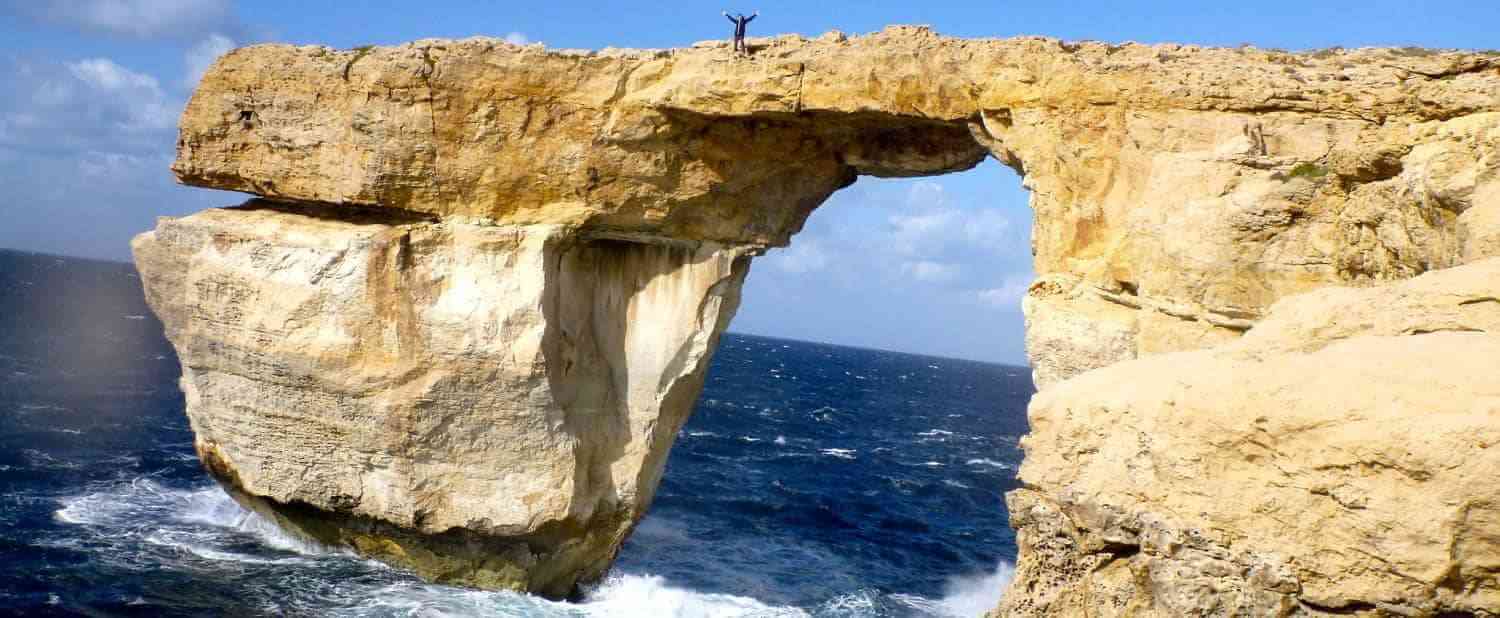
Out of Your Comfort Zone
The art of backpacking & adventures to get out of your comfort zone – tips and advice, the ultimate guide to visiting the solomon islands in the south pacific.
Last Updated on February 23, 2024 by Talita
Planning a trip to the Solomon Islands? Wondering what to do, where to stay, what islands to visit, how to plan your Solomon itinerary, and more? Read on for all you need to know!
The Solomon Islands is a special place.
Because a trip to the Solomons will give you a chance to:
- Explore a rugged Pacific island nation virtually untouched by tourism (the Solomons consistently rank among the top 10 countries with the fewest tourists each year worldwide)
- Scope out some of the most spectacular, pristine dive sites – for wrecks and reefs – in the world
- Journey through the nation’s haunting World War II history by visiting the many sites and relics scattered across the country (including monuments, abandoned bunkers, anti-naval guns, downed planes, and more)
- Visit traditional Polynesian villages , participate in rich cultural events, see the saltwater crocodiles, and perhaps even make your way to Skull Island (the final resting spot for the last of the Solomon headhunting chiefs)
- Meet some of the friendliest and most welcoming locals you’ll find just about anywhere (there’s a reason why they call themselves “the Happi Isles!”)
All that said…
Tourism in the Solomons is still very much in its infancy. Which means the Solomons are *not* the easiest place to travel.
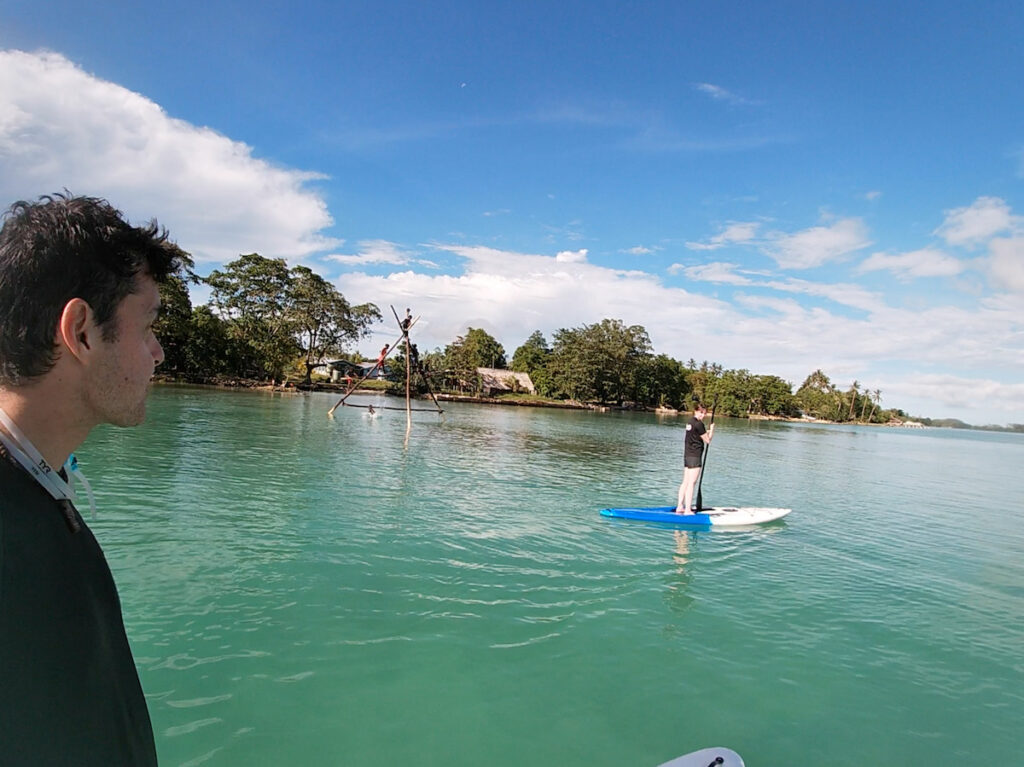
Somewhere in Munda, Solomon Islands
And although that’s certainly a part of the allure for those who choose to make the trek here…
It also makes it difficult to plan!
As we found out the hard way, much of the information you need to know simply isn’t published online (at least not yet!).
Before our own trip to the Solomon Islands, our internet searches for “what to do in the Solomon Islands,” “Solomon Islands itineraries,” and “how to plan a trip to the Solomons” didn’t turn up a lot of results.
So now that we’ve had the chance to visit ourselves, we wanted to share all that we learned to help you on your trip to the Solomon Islands.
Let’s get to it!
Table of Contents
- 1 Solomon Islands Fast Facts
- 2 How to plan your trip to the Solomon Islands
- 3 Transportation in the Solomon Islands
- 4 Guide to visiting Honiara & Guadalcanal
- 5 Guide to visiting Munda and the Western Province
- 6 Final tips and things to know before visiting the Solomon Islands
- 7 In conclusion…
- 9 Planning your next trip?
Solomon Islands Fast Facts
1.1. Where are the Solomon Islands?
The Solomon Islands is a country located in the southwestern Pacific Ocean .
It’s situated to the east of Papua New Guinea (close enough that you can take a boat between the two countries) and several hours northeast of Australia by plane.
The archipelago stretches over a large area of ocean, covering approximately 11,000 square miles (28,000 square kilometers) of land and consisting of hundreds of islands.
The capital city is Honiara, which is located on Guadalcanal, one of the country’s largest islands.
1.2 How many islands are there in the Solomon Islands?
Calculations vary, but estimates clock in at 900-1,000+ islands.
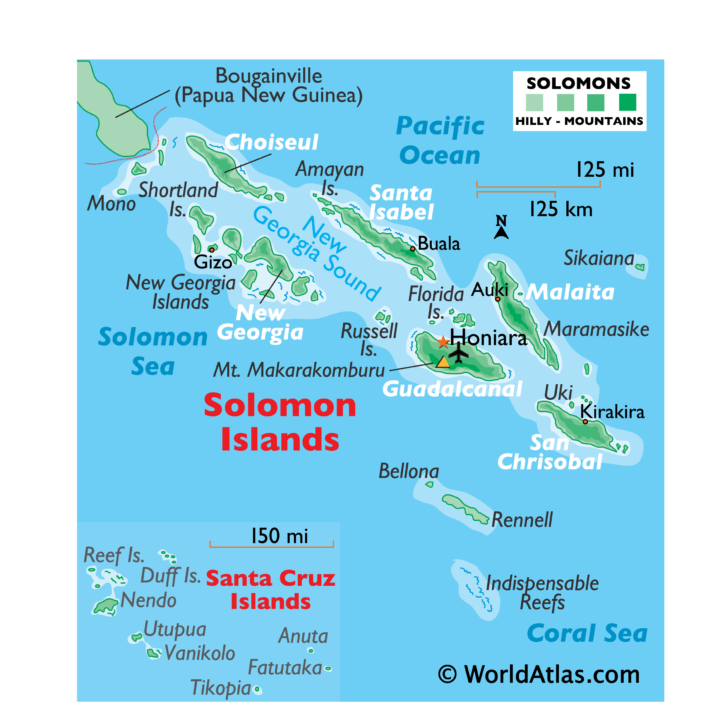
Image credit: www.worldatlas.com
Of these islands, only a fraction of these are inhabited, with the major population centers located on larger islands like Guadalcanal, Malaita, and New Georgia.
1.3 What language do they speak in the Solomon Islands?
The official language of the Solomon Islands is English, which serves as the language of government, education (at least in the capital city of Honiara), and business.
However, English is not the first language for the majority of the population, as there are dozens of indigenous languages spoken throughout the various islands of the archipelago.
One of the most widely-spoken indigenous languages is Pijin, which is a creole language derived from English with its own unique vocabulary and grammar. Pijin, rather than English, is what’s most commonly used as the lingua franca among different ethnic groups.
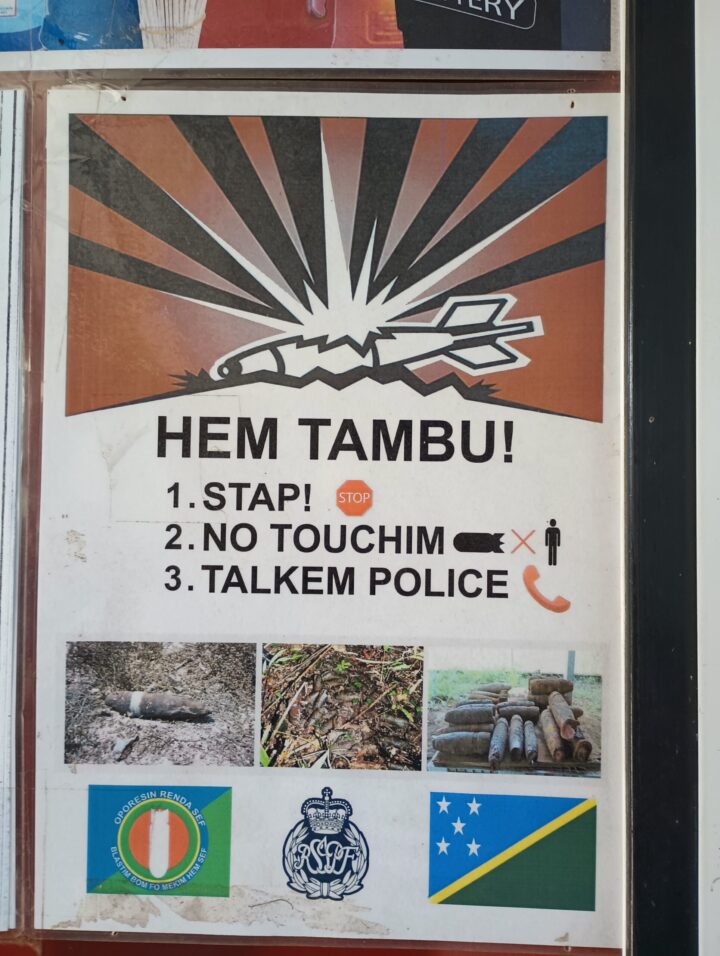
Solomon Islands Pijin (quite similar to English, as you can see!)
1.4 Are the Solomon Islands safe to visit?
Personally, we felt very safe in the Solomon Islands.
Crime tends to be focused in the capital city of Honiara on the island of Guadalcanal. We’ll talk more about safety in Honiara in section 5.2 below.
But elsewhere in the Solomons, crime rates are very low.
1.5 Is it easy to visit the Solomon Islands?
It depends on your definition of easy!
As I mentioned in my introduction, tourism in the Solomons is still very much in its infancy. While this is certainly part of the island’s charm for many visitors, it also means that there is minimal tourist infrastructure and that your trip may require a bit of “roughing” it.
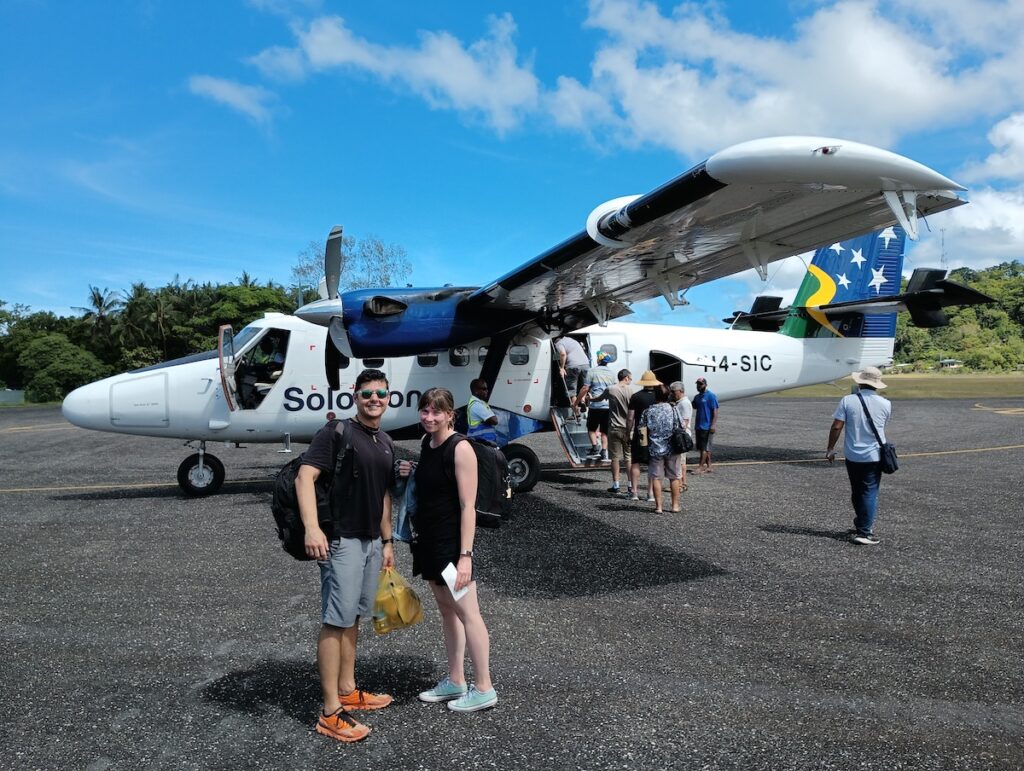
The tiny one-room (and hot!) airport in Munda
Plus, there’s also the challenge of actually planning your trip itself.
You can book many of the larger hotels and resorts online. But the more budget-friendly accommodation options will require you to email them directly.
You’ll likely find that tours and activities in the Solomons are very hard to book in advance, as most of the options are not published anywhere online. So, you have to be comfortable with a bit of spontaneity on your arrival. 🙂
(Note: Make sure you read section 2 below for important info and tips on organizing your trip!)
1.6. Are the Solomon Islands expensive?
Due to the lack of tourism and very low local salaries in the Solomons, I mistakenly believed that it wouldn’t be an expensive place to visit.
Turns out, I was very, very wrong!
In general, the cost of just about any “tourist” activity or accommodation is very high.
There are a few factors at play here – including the fact that these activities/hotels are primarily catering to an expat population of aid workers who earn high western salaries, the low demand of tourists like us, and the outrageous price of fuel and electricity in the country.
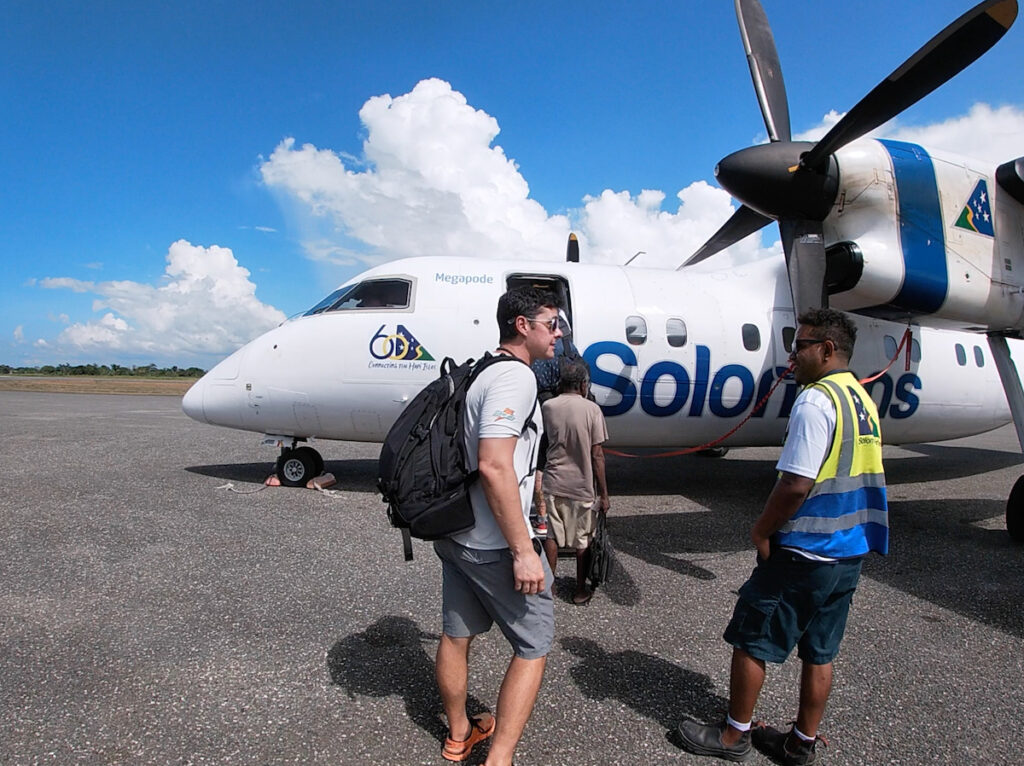
(Surprise! The Solomon Islands has the most expensive electricity in the world.)
This means you’ll definitely want to set aside some padding in your budget. Not just for accommodation (which isn’t cheap!), but also for excursions or other activities. Because much of the Solomons is so remote, you’ll be limited in how much you can do independently.
1.7 Where can I learn more about the Solomon Islands before my visit?
Glad you asked! I recommend watching this “Solomon Islands” episode from one of my favorite Youtube channels, Geography Now.
Otherwise, much of the other content out there focuses on the Solomon Islands’ bloody World War II history.
If you like war movies, “ The Thin Red Line ” is a philosophical look at WWII. The film takes place in (and was filmed!) in the Solomons.
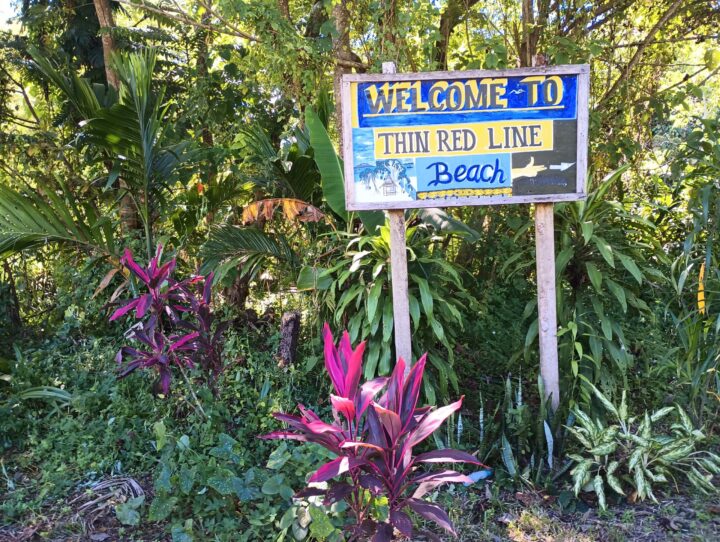
Thin Red Line Beach, Solomon Islands
Otherwise, I’ve heard that “ The Pacific ” mini-series does a great job of capturing the history of Guadalcanal and other battles throughout the country.
How to plan your trip to the Solomon Islands
2.1 How to get to the Solomon Islands
Your trip to the Solomons will likely begin with a flight into Honiara, the country’s capital city, on the island of Guadalcanal. You can find direct flights to Honiara from several cities in Australia. Or if you’re trying to fly into the Solomons from just about anywhere else, you’ll most likely connect in Fiji.
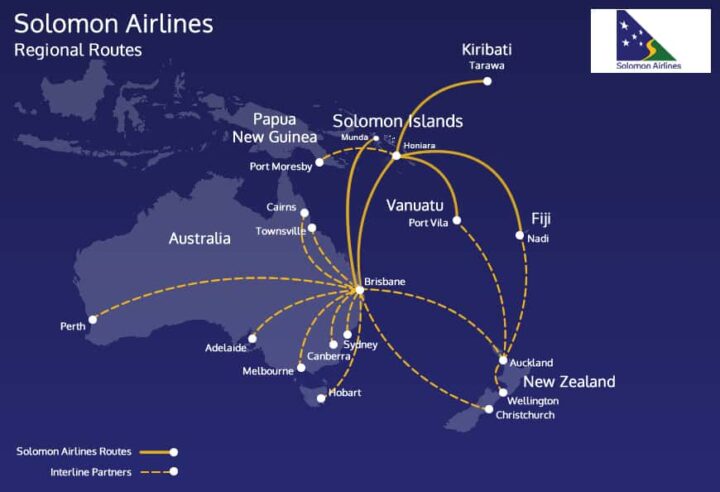
Solomon Airlines flight map (photo courtesy of www.flysolomons.com)
(Note: sometime in 2023, Solomon Airlines is going to be launching a direct flight from Brisbane, Australia to Munda, a tranquil village famous for diving tucked into the Marovo Lagoon. So stay tuned!)
Apparently, it’s also possible to cross into the Solomons from Bougainville, Papua New Guinea. However, we were told there aren’t any official border crossings to verify your entry into the country. So proceed with caution here. Occasionally, you can also find small fancy cruise ships or live-aboard diving vessels that stop in the Solomons.
2.2 How long to stay in the Solomons
There’s really no right answer here.
Personally, we stayed for about 10 days, splitting our time between Honiara/Guadalcanal and Munda. Between those two islands, we felt like we had enough time.
However, if you’d like to spend more time diving, hanging out at the beach, or visiting additional islands, then you may want to add on some days.
Alternatively, if you were to skip Honiara and focus your time exploring Munda and other islands in the Western Province, then a week may be plenty.
2.3 What islands to visit in the Solomon Islands
As I mentioned above, we personally divided up our time between the islands of Guadalcanal (Honiara) and Munda. We took a few day trips to additional islands (we’ll mention those when we dive into the destinations below!), but these are the two islands we stayed overnight on.
We enjoyed Munda a lot, so I’d definitely recommend adding it to your itinerary. Particularly since it really offers everything that usually brings people to the Solomons – sparkling turquoise lagoons, spectacular diving, WWII relics and history, authentic cultural experiences…
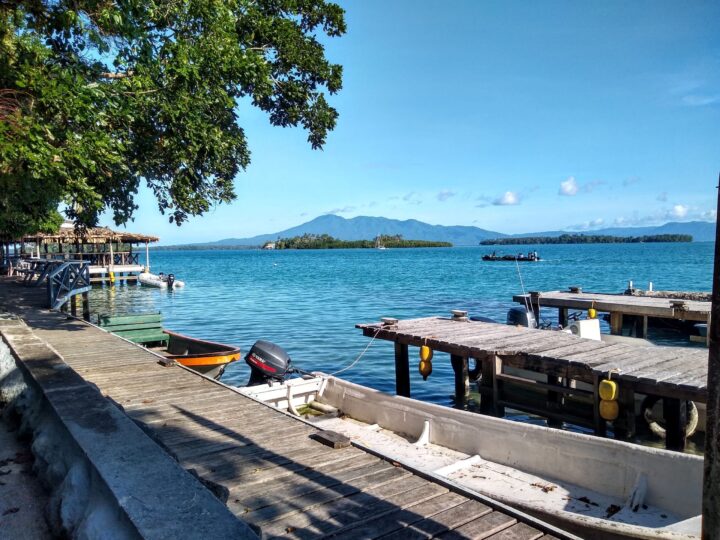
Tranquil Munda, Solomon Islands
Whether or not you add Guadalcanal to your trip is up to you. We’ll chat a bit more about this in the “Is Honiara worth visiting?” below. (Section 5.1)
Although I can’t speak to these other islands from personal experience, here are some of the other “common” (or as common as any tourist experience in the Solomons can be!) islands that people visit:
- Ghizo (home to Gizo, the capital city of Western Province…not far from Munda and with similar attractions to be found)
- Malaita (the Solomon Island’s most populous island, known for its lush rainforests, waterfalls, and traditional village life)
- Tulagi (a small island located between Guadalcanal and Malaita, famous for its diving and WWII sites)
2.4 Where to stay in the Solomon Islands
See the section above!
But to put it simply: I’d probably recommend, at minimum, a night or two in Honiara/Guadalcanal to see the war sites and memorials. And then divide up the rest of your time between other islands like Munda, Ghizo, or Tulagi.
2.5 What to wear in the Solomon Islands as a woman
In general, women in the Solomons tend to dress a little on the conservative side.
Most wear skirts, though I did see a few loose-fitting shorts. However, I don’t think I ever saw anyone wearing a skirt or shorts that went much more than an inch or two above the knees.
On top, a sleeveless or a T-shirt is totally fine. But cleavage or exposed chests aren’t common.
Of course, when you’re at your hotel, you’re free to wear whatever. But these are just some of my observations and the clothing guidelines I stuck to so I could dress respectfully.
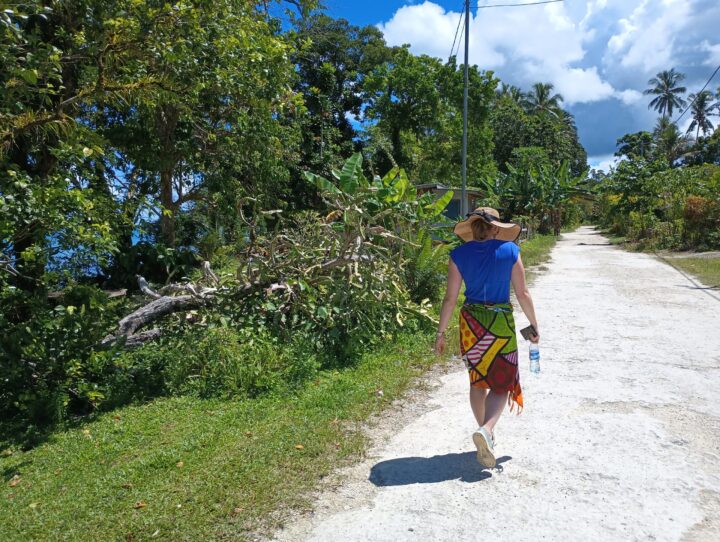
Examples of what to wear as a woman in the Solomon Islands (note your skirt doesn’t need to go quite this long – this was just what I had!)
2.6 Where to go diving in the Solomon Islands
In general, basically anywhere in the Marovo or Roviana Lagoon (near Munda, Gizo, etc.) will be spectacular. This area is known for its WWII wrecks, often submerged in shallow, crystal-clear water. There’s great reef diving, too.
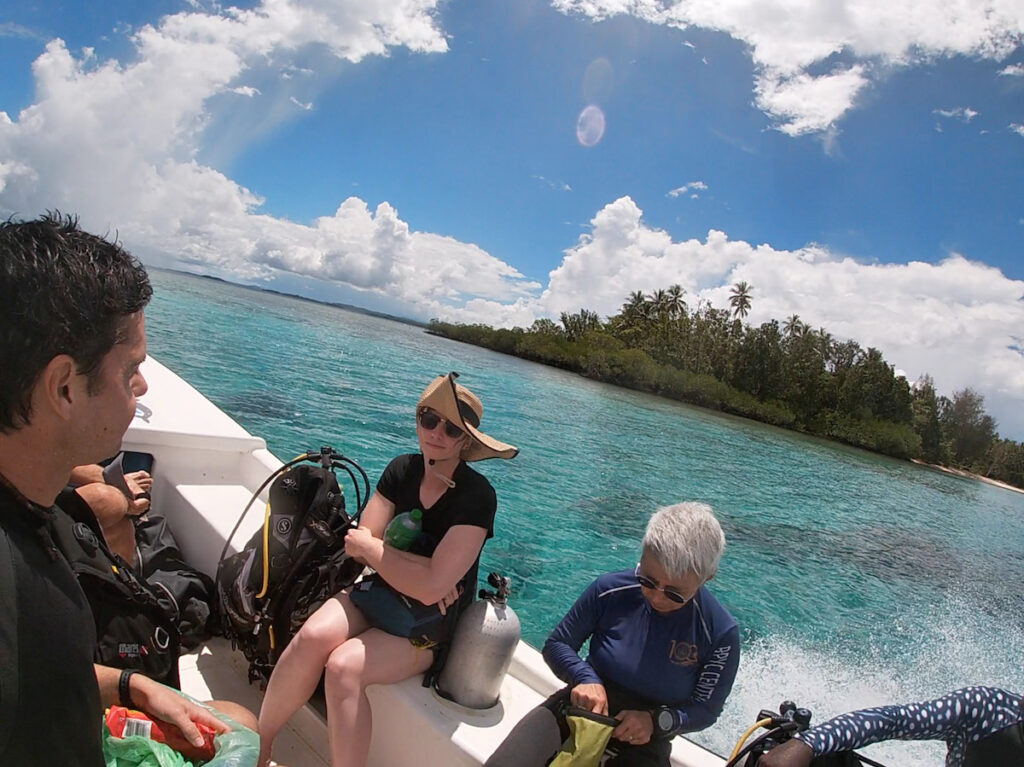
Otherwise, Tulagi’s “Iron Bottom Sound” (so named for its high concentration of sunk WWII planes and ships) is another well-known spot for wreck dives.
Note: At the time of writing (June 2023), Tulagi Dive Shop, which runs out of Honiara and would take you out to dive in Tulagi, isn’t currently in operation after closing down during the pandemic. We spoke with the shop’s owner and it sounds like he hopes to re-open again soon. If you’d like to try diving in Honiara or Tulagi, try reaching out to him here or here before your trip to see if he’s up and running again.
Other than Tulagi Dive, there are no other active dive shops in Honiara.
2.7 IMPORTANT: How to organize your activities and tours in the Solomon Islands
If you’ve tried to do any sort of planning ahead for your Solomon Islands trip, you’ve probably come across a bit of a roadblock – namely, it’s very hard to find information about what to do in the Solomon Islands online!
So, here’s the best piece of advice I can give you. As soon as you arrive in Honiara, make your way to the Solomon Islands’ Visitor Center (it’s located right off the main road in Honiara’s city center, so you really can’t miss it).
The staff here were SO helpful in helping us set up everything we wanted to do.
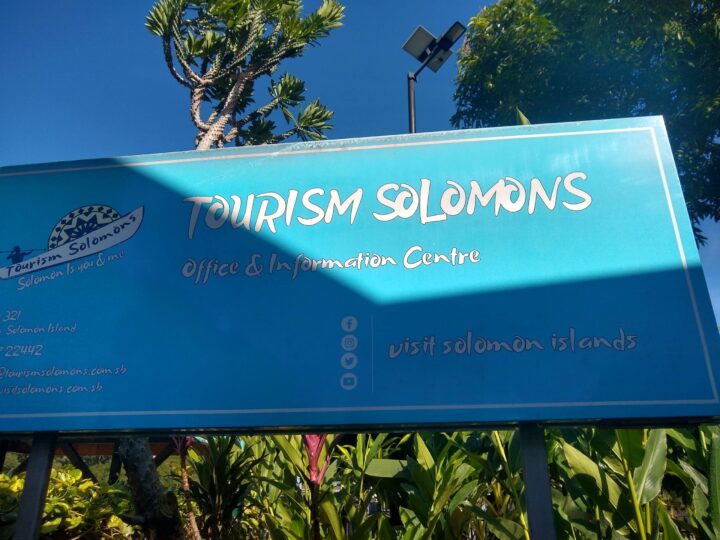
They gave us recommendations, called tour operators and guides to see what was/wasn’t available, and just generally helped us organize our time in the Solomons in a way that we never would have been able to do on our own.
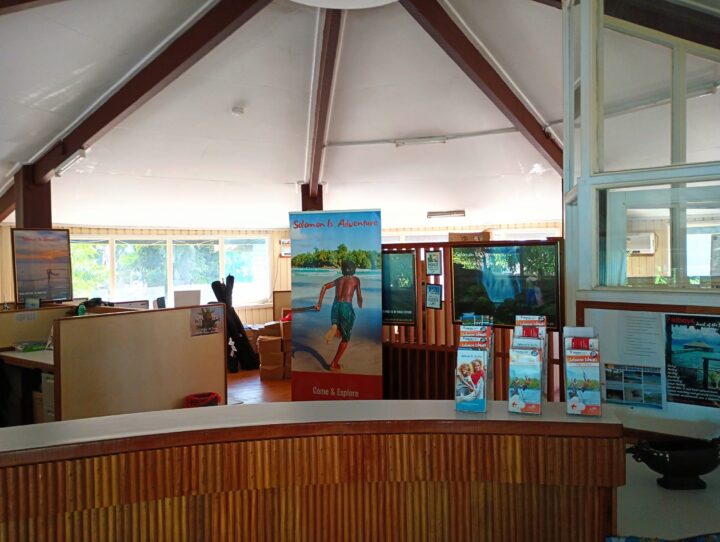
The Solomon Islands tour office in Honiara was a true lifesaver!
Alternatively, rather than waiting to talk to them when you arrive, you can try reaching out ahead of time to see what’s available on their website here (Personally, we never heard back when we emailed them before our trip. But it’s worth a try!)
Transportation in the Solomon Islands
3.1 How to get around on the Solomon Islands
On many of the islands, you’ll be able to find local buses (just look out for the white vans). As far as I can tell, most buses don’t have set schedules.
In Honiara, you’ll also find plenty of taxis that you can catch for reasonable-ish prices.
Outside of Honiara, hitchhiking with friendly locals is a solid option as well.
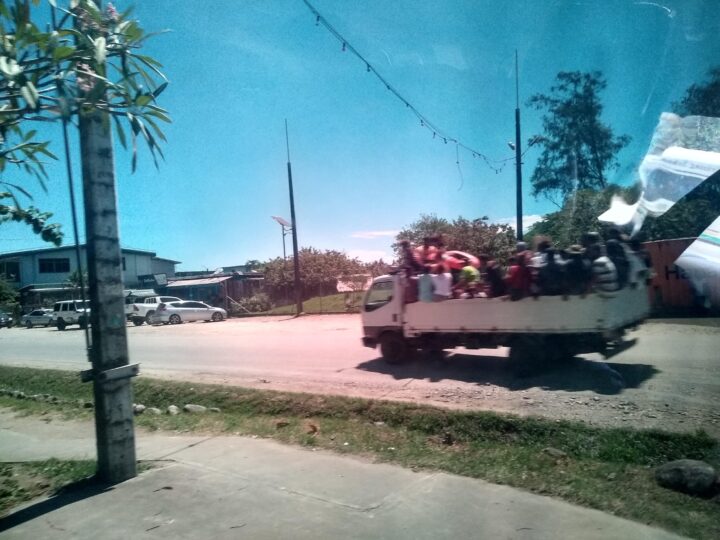
If there’s any space for you in the truck, that is
Personally, we did a combination of going around by ourselves as well as doing tours/going with a guide. Although we generally aren’t big “tour” people…many places in the Solomons are simply impossible to get to without one.
(Plus, for many of the WWII sites, it was nice to have a knowledgeable guide.)
3.2 How to get between the islands in the Solomon Islands
There are a handful of passenger ferries that you can take between islands in the Solomon Islands, including from Honiara to Gizo/Munda/Seghe, Honiara to Auki, Honiara to Malaita, and more.
Pelican Express seems to be the most popular option when it comes to “express” ferries. (Though note that these “express” trips are very expensive…and when we were there, all of their ships were inoperational for one reason or another.)
If you’re interested, you can try (no guarantees they’ll answer!) contacting them here .
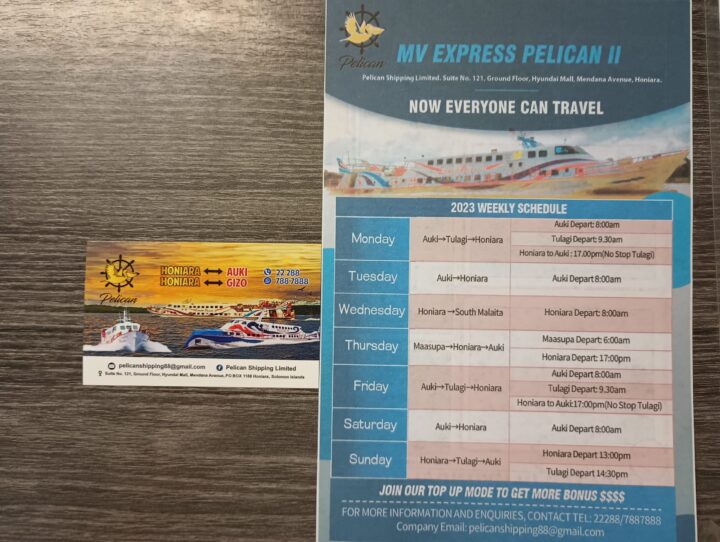
Info about the Pelican Express ferries between the islands of the Solomons
Otherwise, there are a few “slow” ferry options. Be warned that these “slow” ferries operate on limited schedules, are prone to delays, and are known for being a bit “adventurous.” (AKA not a comfortable experience.)
We personally didn’t take any ferries as they didn’t match up with our schedule.
Note that it’s very hard to find up-to-date schedules for the ferries online.
So, I’d highly recommend getting in touch with the tourism board (if you’re lucky enough to get them to answer you by email!). Or simply plan to ask around when you arrive in the country.
Otherwise, you can catch a domestic flight with the national carrier, Solomon Airlines. Though the cost of a ticket is pretty expensive for how short the flights are, they can get you just about anywhere.
Plus, the views are simply incredible.
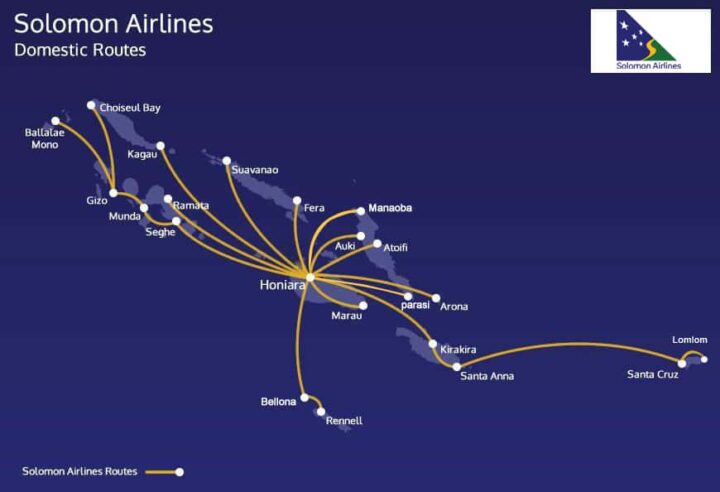
Solomon Airlines’ domestic flight map (image courtesy of www.flysolomons.com)
(Psst! If you fly with Solomon Airlines, keep your eyes peeled for an article I wrote for their in-flight magazine about Munda 🙂
3.3 How to get from Honiara to Munda/Gizo/Western Province
As far as we can tell, there are currently two overnight ferry options between Honiara and Western Province, each leaving roughly once per week.
One is the MV Fair Glory, and the other is the MV Anjeanette.
See 3.2 above for more info on these ferries and other options for getting between the islands of the Solomons.
3.4 How to rent a car in the Solomon Islands
As far as we can tell, Honiara is the only place in the country where you can rent a car . And there’s just one rental car shop, right off Honiara’s main street by the gas station.
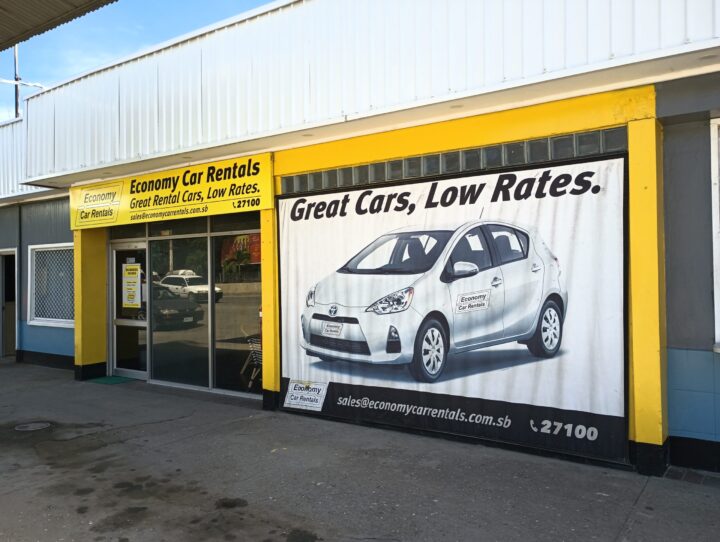
(You should be able to find it on Google Maps…otherwise, just ask! People are incredibly friendly and happy to help.)
They told us they don’t accept online bookings. But here’s a photo we took of their brochure with pricing and contact info:
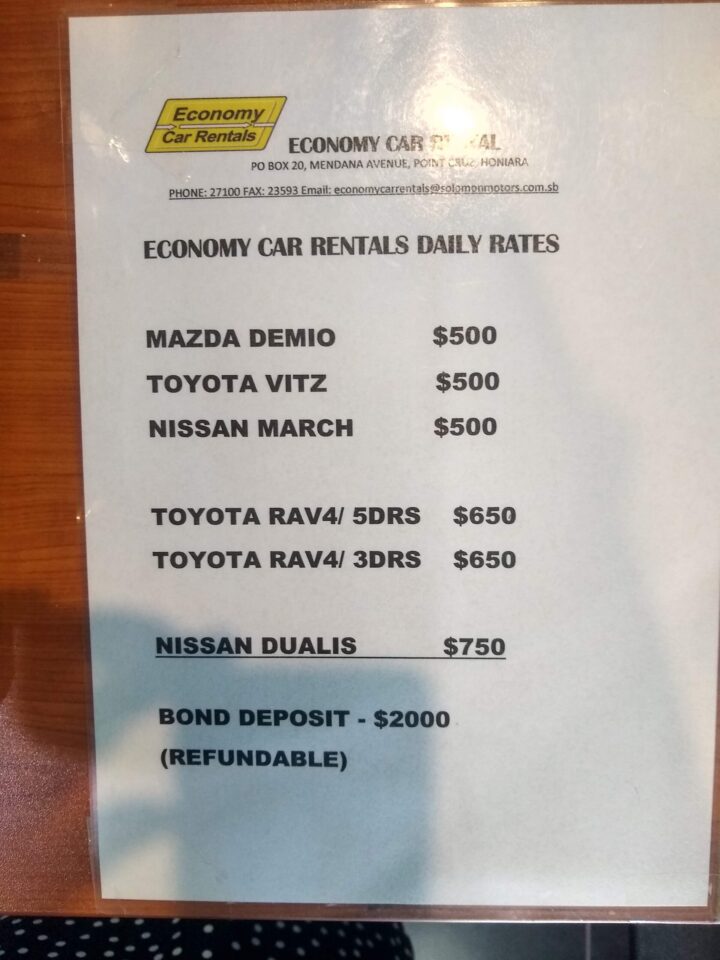
You can try reaching out by email before your trip to reserve a car. Or just chat with them when you get to Honiara, as I don’t get the impression that they often sell out.
Fair warning: the roads in Honiara and Guadalcanal are pretty rough. (Though they are currently redoing many of them for the 2023 Pacific Games…so perhaps they’ll be a little smoother by the time you get there!)
And do keep in mind that they also drive on the left side of the road.
Guide to visiting Honiara & Guadalcanal
4.1 Is it worth going to Honiara?
I’ll be honest here: Honiara isn’t exactly the nicest place to visit.
It’s busy, it’s crowded, it’s not very pretty…and there’s just honestly not a ton to do as a tourist. In general, I would say there are plenty of other more “enjoyable” places to visit in the Solomon Islands.
But that doesn’t mean Honiara isn’t worth a visit.
For one, as the country’s largest city and capital (and as a city made up of Solomon Islanders from all different islands), it can give you an interesting perspective on life in the country.
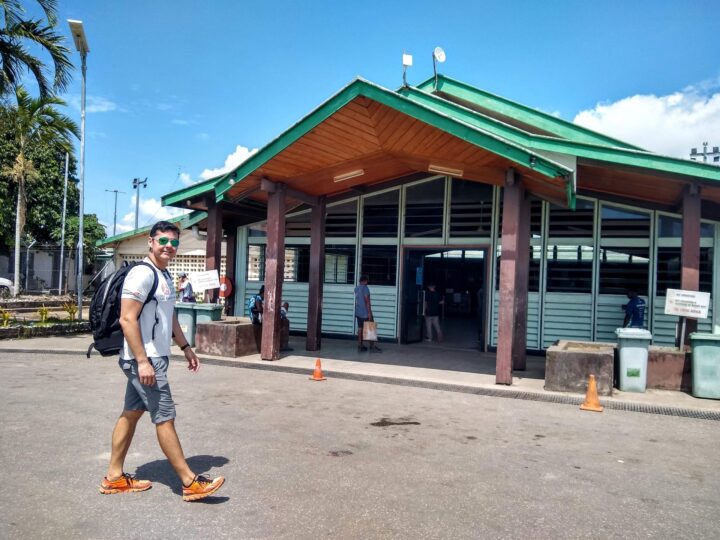
Honiara’s humble airport
Plus, it also serves as a jump-off point for a lot of other unique sites, including the WWII memorials and relics scattered throughout the island of Guadalcanal. Or other nearby islands like Savo, Tulagi, or even Malaita.
Not to mention, you’ll probably end up in Honiara anyway since this is where most international flights land (although there will soon be a direct flight from Brisbane to Munda, so stay tuned for that!).
I think as long as you manage your expectations and make plans for activities outside of the city, Honiara could be worth the stop.
4.2 Is Honiara safe?
Before our visit to the Solomons, we came across a few things online that warned us about safety in Honiara.
Now, obviously our experience is our own and we can’t promise yours will match ours.
But we personally felt very safe and welcome while walking around Honiara, at least in the main area. And most of the other people we spoke to (expats living in Honiara, the staff at our guesthouse, etc.) confirmed that the city was far safer than its reputation suggested.
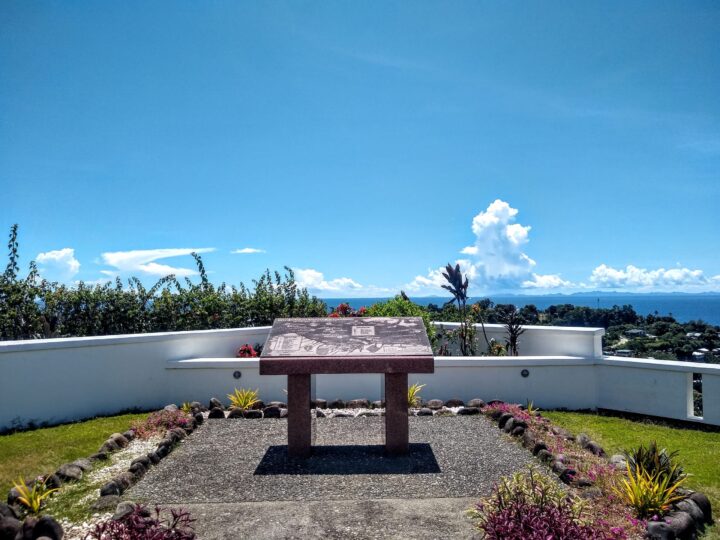
The American War Memorial, Honiara, Guadalcanal
This isn’t to say there haven’t been more serious safety concerns in Honiara’s past. And you do see clear hints of crime prevention – like fences and security guards stationed at most hotels, as well as in the local market and watching over the ATMs.
So, obviously don’t walk around flashing your fancy jewelry or camera. But that’s just good advice anywhere.
4.3 Where to stay in Honiara on a budget
In general, accommodation in Honiara is quite pricey, with the nightly average coming in at over 100 USD per night.
However, you can find some cheaper options…but you won’t find them on Booking.com. Rather, you’ll have to email them directly.
Personally, we stayed at a community-center-turned-guesthouse called St. Agnes Mothers Union Resthouse .
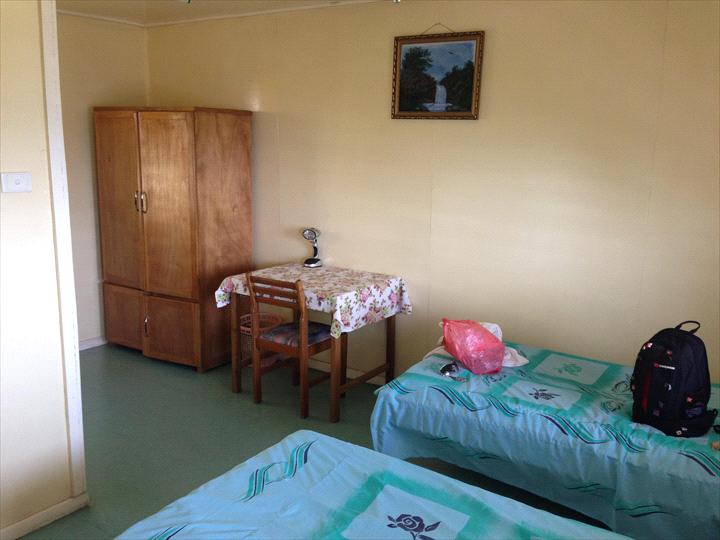
St. Agnes Mothers Union Resthouse, Honiara (photo courtesy of www.visitSolomons.com)
It wasn’t fancy. But it was clean, cheap by Honiara standards (about 60 USD per night), and right near the city center.
They have shared kitchens and a few different types of rooms for you to choose from. Just make sure you pick a room that has A/C!
You can reach out to them here: https://www.visitsolomons.com.sb/tour/st-agnes-mothers-union-resthouse/
Otherwise, here is a list on the tourism website of some other budget accommodation options in Honiara. Though do be aware that many of these didn’t respond back to our emails requesting a quote, so I imagine they didn’t survive the pandemic: https://www.visitsolomons.com.sb/where-to-stay/budget/
4.4 Where to dive in Honiara
Take a look at section 2.6 above for more on diving options in Honiara and the Solomon Islands at large.
4.5 What to do in Honiara/Guadalcanal (and a 3-day Honiara/Guadalcanal itinerary)
To give you an idea of what to do in the Solomon Islands, here’s a quick look at our own itinerary in Honiara and Guadalcanal.
Of course, feel free to customize it however you want. But hopefully, it’ll give you a solid starting point.
HONIARA/GUADALCANAL ITINERARY DAY 1: ARRIVAL + “SITES” OF HONIARA
The truth is that Honiara itself probably won’t entertain you for very long. That’s why on day #1, I highly recommend you make the Solomons tourist office downtown your first stop.
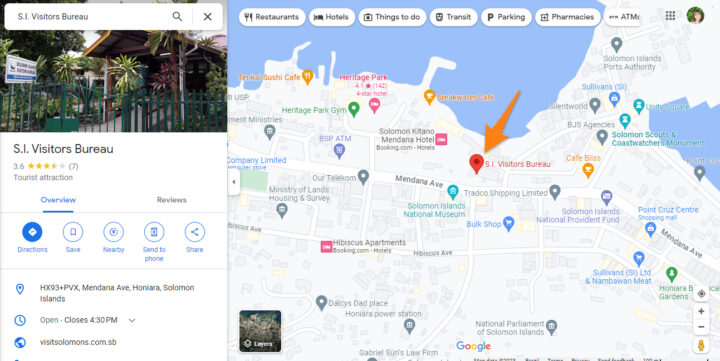
Location of the tourism office in Honiara (called “S.I. Visitors Bureau” if you’re searching in Google Maps)
As I said above (section 2.7), coordinating and booking things in advance is quite difficult in the Solomons. But the tourist office was absolutely amazing in giving us recommendations and helping organize whatever we wanted to do on Guadalcanal and even on other islands.
After you’ve spoken to the tour office, I’d recommend heading straight to the national museum right across the road.
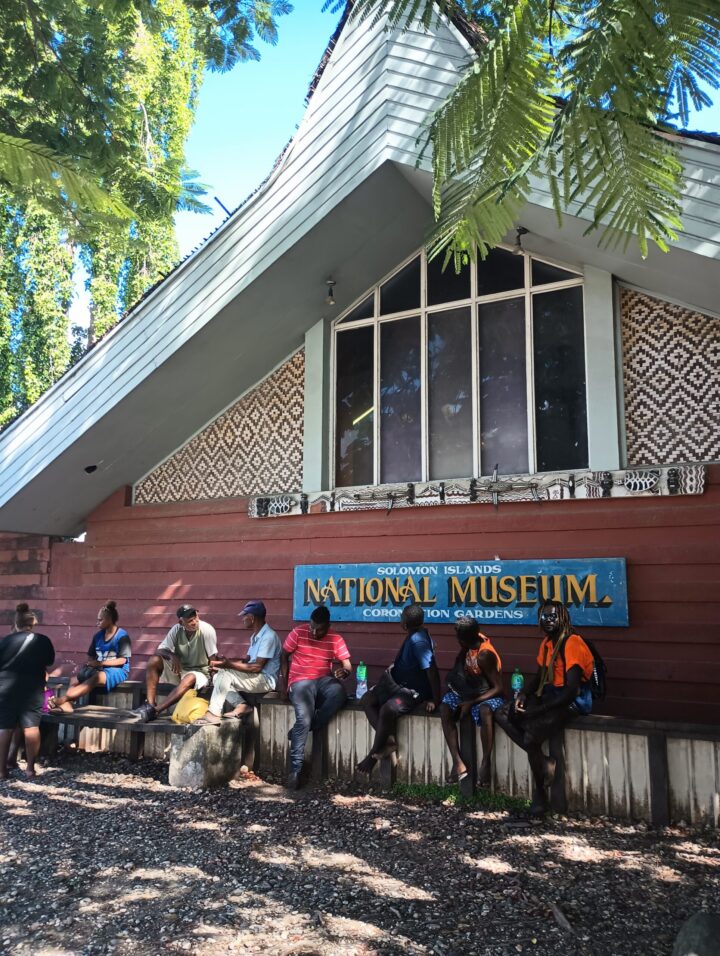
Solomon Islands National Museum, Honiara
From there…there’s not much else to do in Honiara. The ocean and port views from Breakwater Cafe are nice (though the cafe was far too expensive for us!), and there’s a local handicrafts market near Palm Sugar Cafe.
Otherwise, we enjoyed ourselves just generally walking around, saying hi, and taking note of how friendly everyone is.
HONIARA/GUADALCANAL ITINERARY DAY 2: GUADALCANAL WWII TOUR WITH WRECK SNORKELING AT BONEGI BEACH
Some of the largest and bloodiest battles of WWII took place in Guadalcanal, and you can still see many marks of the war today in everything from the current airport (built by the American soldiers) to the dozens of plane and shipwrecks that can be found at the bottom of the bay.
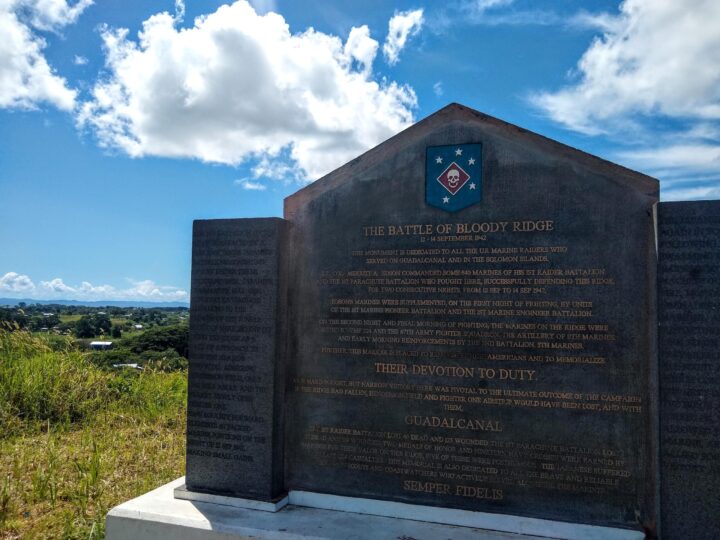
Relics of WWII can be found all over the Solomons
Given that transportation to many of the WWII sites was limited (and that we wanted to hear the history behind all of these sites), we opted for a guided tour that we organized through the Honiara tourist office.
Whether you’re interested in WWII history or not, I still highly recommend making some time to visit some of the Guadalcanal WWII sites. (Particularly as you’ll also get a bit of an island tour, and some great views, as you go.) Here’s a look at just a few of the WWII sites to visit on Guadalcanal.
- The U.S. War Memorial at Skyline Ridge
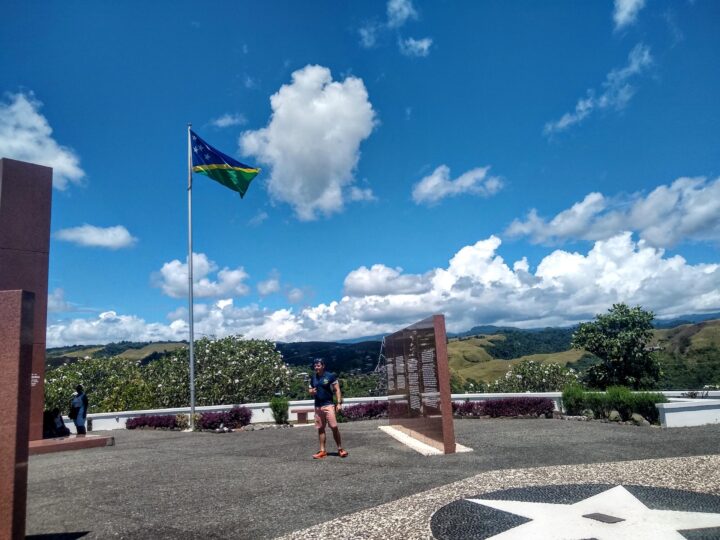
- The Japanese Peace Park at Mt. Austen
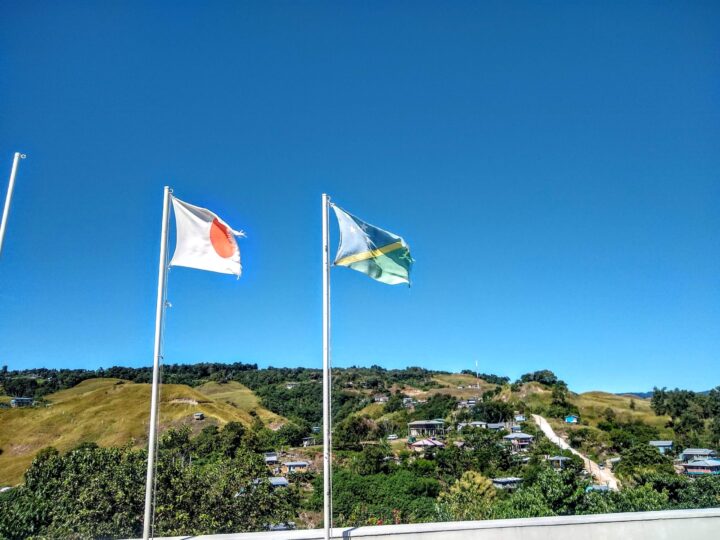
- Bonegi Beach (home to a sunken WWII Japanese freighter, visible from the shore – if you want to snorkel, make sure to bring your own gear as there is nowhere to rent at the beach or even in Honiara!)
- The Vilu War Museum
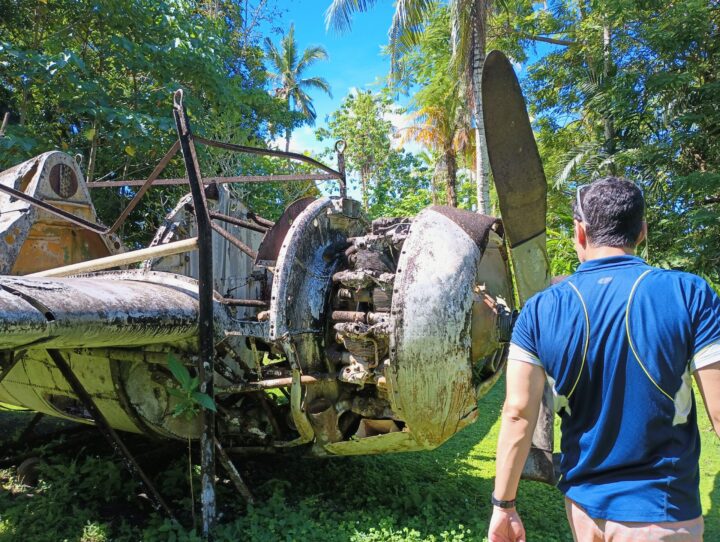
Beyond this, as part of your tour, you’ll likely also see battlefields, Edson’s Bloody Ridge, the CoastWatchers Memorial, and more.
HONIARA/GUADALCANAL ITINERARY DAY 3: DAY TRIP TO SAVO ISLAND BY BOAT WITH VOLCANO HIKE
With our last day in Honiara, we organized a day trip to neighboring Savo, a volcanic island about an hour by boat (weather dependent!) from Honiara.
Although the way back was a little rough (take something for seasickness if you need it), it was a lovely day.

The boat ride to Savo
We saw dolphins, enjoyed the sea breeze (a welcome break from the suffocating heat of the city), and hiked through the jungle along a steaming river toward a volcano.

Into the Savo jungle we go…
As a heads up: this hike might not be for everyone. It requires a good level of fitness, mobility, and balance as you must crisscross a near-boiling river many times. Given that it can burn you, you definitely don’t want to lose your balance or fall in. So, it may not have been the *safest* hike…but it was still a pretty cool experience!

Nearing the volcano (the ground was SO hot that the puddle Rodrigo is pointing to was boiling!)
4.6 Other activities to consider in Honiara/Guadalcanal
All of what you’ll see below are suggestions based on brochures and other information we found from the tourist office in Honiara. We didn’t ask about any of these particular activities, so you’ll have to confirm current pricing and whether or not they are still running with the tour office.
Sorry in advance for the terrible quality of these pictures…but since you won’t be able to find any of these online, I thought it’d be helpful to add them into the article anyway!
- Hike to Tenaru Falls (day trip from Honiara or with optional overnight stay at Parangiji Mountain Lodge)

- Stay at the Tetepare Island Eco-Lodge (Tetepare is the largest uninhabited island in the South Pacific and a very impressive conservation project! Note that this is quite far from Honiara, but you can still ask about it in Honiara’s tour office if you’re curious.)

- Go on a rafting or kayaking adventure through the rainforest

- Go wreck diving in Tulagi if the dive shop is open again (see note in section 2.6 above)
Guide to visiting Munda and the Western Province
5.1 How to get to Munda
Essentially, you have two choices. Either brave one of the ferries from Honiara (not for the faint of heart!). Or fly with Solomon Airlines from Honiara or directly from Brisbane (route available fall 2023, I think).
See section 3.2 on “getting between the different islands of the Solomons” for more details.
5.2 Where to stay in Munda
If you’ve looked at all into accommodation in Munda, then you’ve probably come across Agnes Lodge.
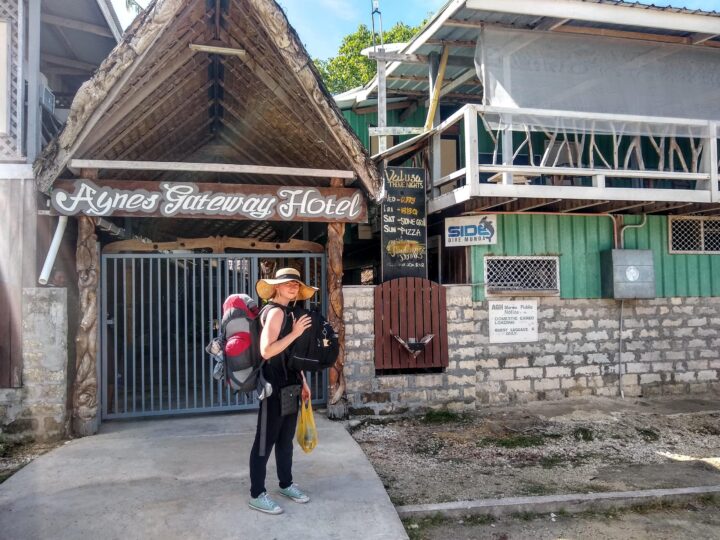
Agnes Gateway Hotel and Lodge, Munda
This lively family-run hotel, located right on the lagoon and about a 7-minute walk from the airport, is one of the best, and most popular, accommodation options in Munda.
This is where we stayed, and we’d highly recommend it!
Unlike many of the other accommodation options in the Solomons, you can book Agnes Lodge directly on Booking.com .
The hotel’s restaurant, which features some beautiful lagoon views, is pretty decent as well. (Pro tip: if you’re on a budget, order off the breakfast menu. $5 USD eggs and toast is hard to beat!)
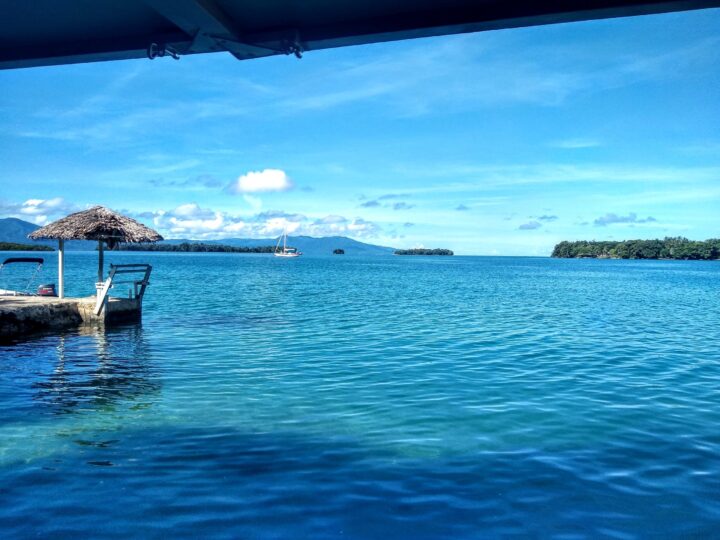
View from the Agnes Lodge restaurant (make sure you stay and watch the sunset!)
While Agnes Lodge isn’t necessarily cheap, it is one of the cheapest options for accommodation in Munda. That said, I believe Qua Roviana Hotel, right across the street, might have slightly lower rates if that’s what you’re looking for.
5.3 Where and how to dive in Munda
There is just one dive shop in Munda – the aptly-named dive Munda – and you can rest assured that Belinda, Brian, and the rest of the team will take great care of you during your stay.
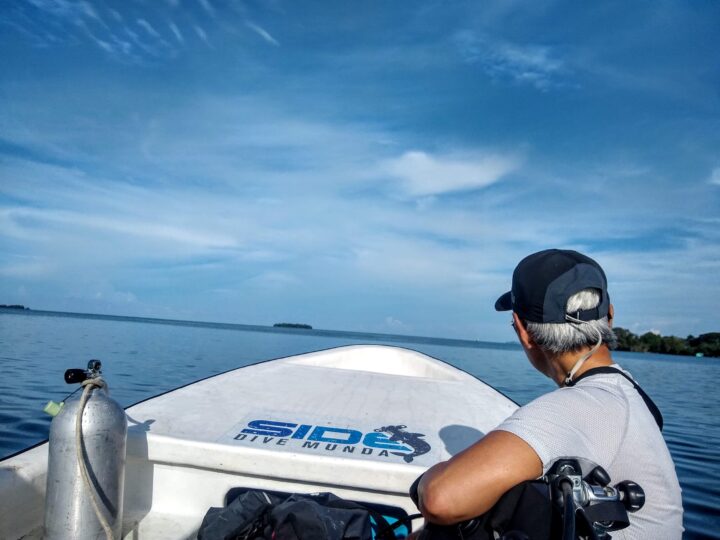
The shop operates out of Agnes Lodge Gateway Hotel, though you don’t have to be staying there to dive with them.
And if you ask nicely, they’ll take you to other classic Munda stops (like the infamous “Skull Island” and/or Kennedy Island, the location of JFK’s base during WWII) as part of your day of diving 🙂
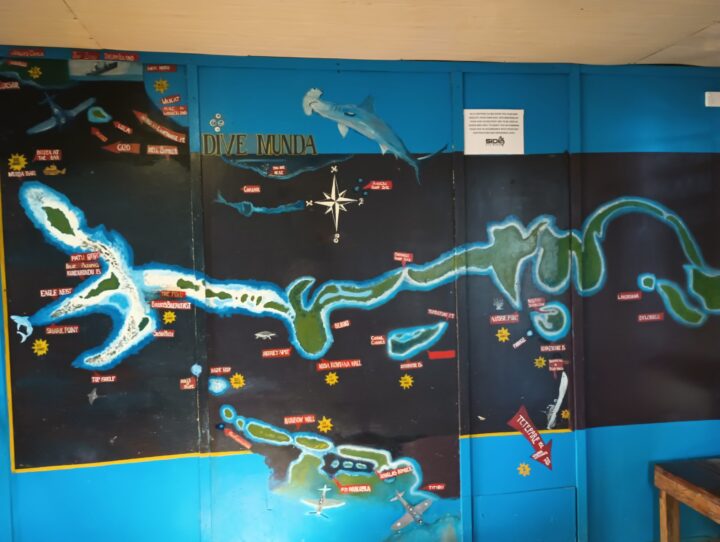
Diving sites in Munda – lots to choose from!
My husband Rodrigo had a wonderful time diving with Dive Munda and would highly recommend them.
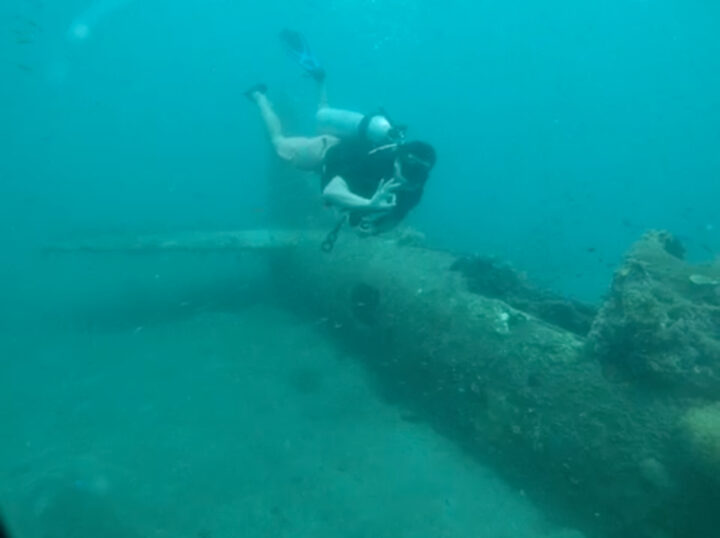
Rodrigo getting up close and personal with a sunken WWII American Wildcat fighter plane near Munda
But if you don’t dive (like me), you may still be able to join in on the fun by coming on the dive boat for a smaller fee. Or partaking in any of the other fun excursions and activities they offer, as seen below.
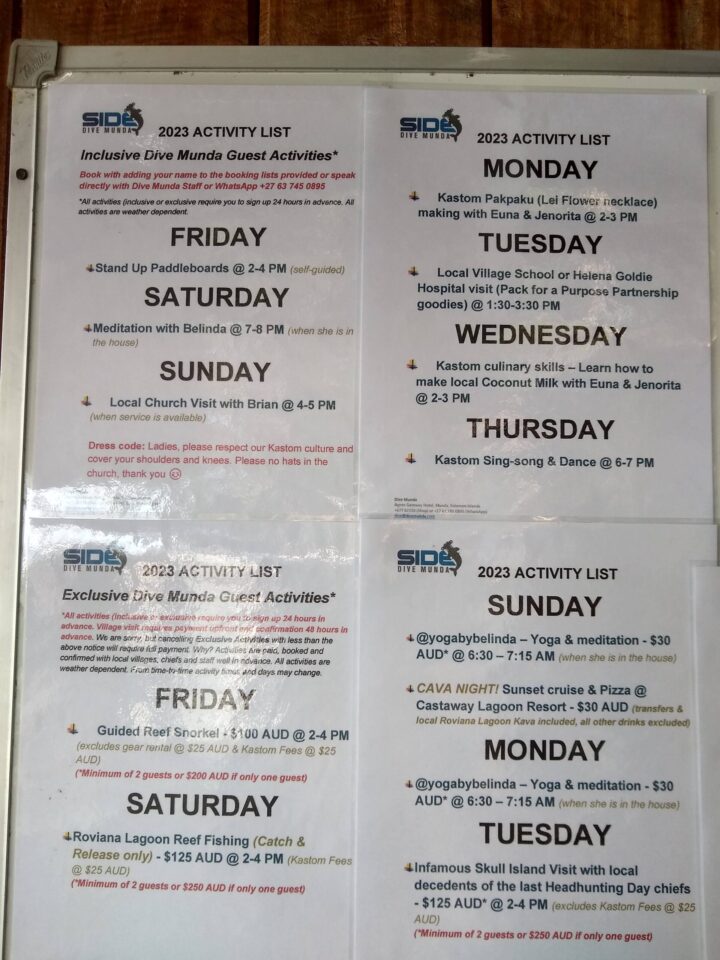
Activity list (free and paid) at Dive Munda
We highly recommend taking the paddleboards out and paddling across the lagoon to Castaway Resort!
(Note that the activities listed as “free” are only free if you are diving with Dive Munda. Otherwise, the “paid” ones are available to anyone.)
5.4 What to do in Munda (Munda itinerary ideas)
Here’s a quick list of some of the top activities to do in Munda:
- Go diving (duh!) or snorkeling at any one of Marovo or Roviana Lagoon’s impressive WWII wrecks or spectacular reefs
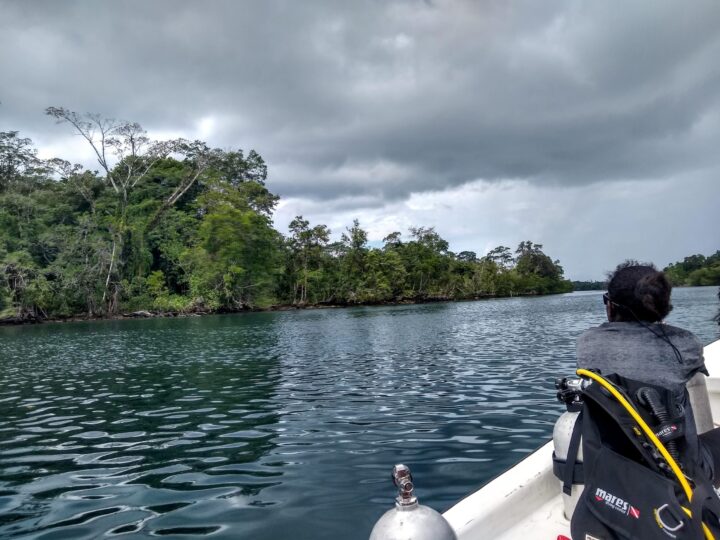
You’ll also get great views along the way!
- Visit the infamous Skull Island, the final resting place for the last of the Solomon headhunter chiefs
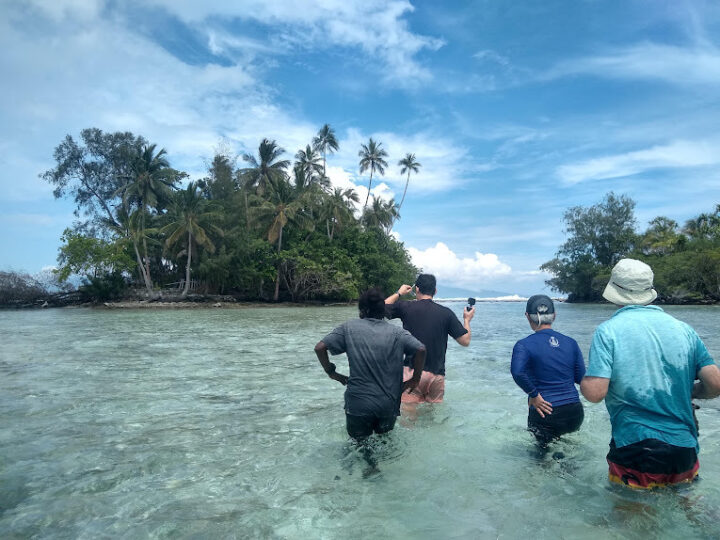
Skull Island, Solomon Islands
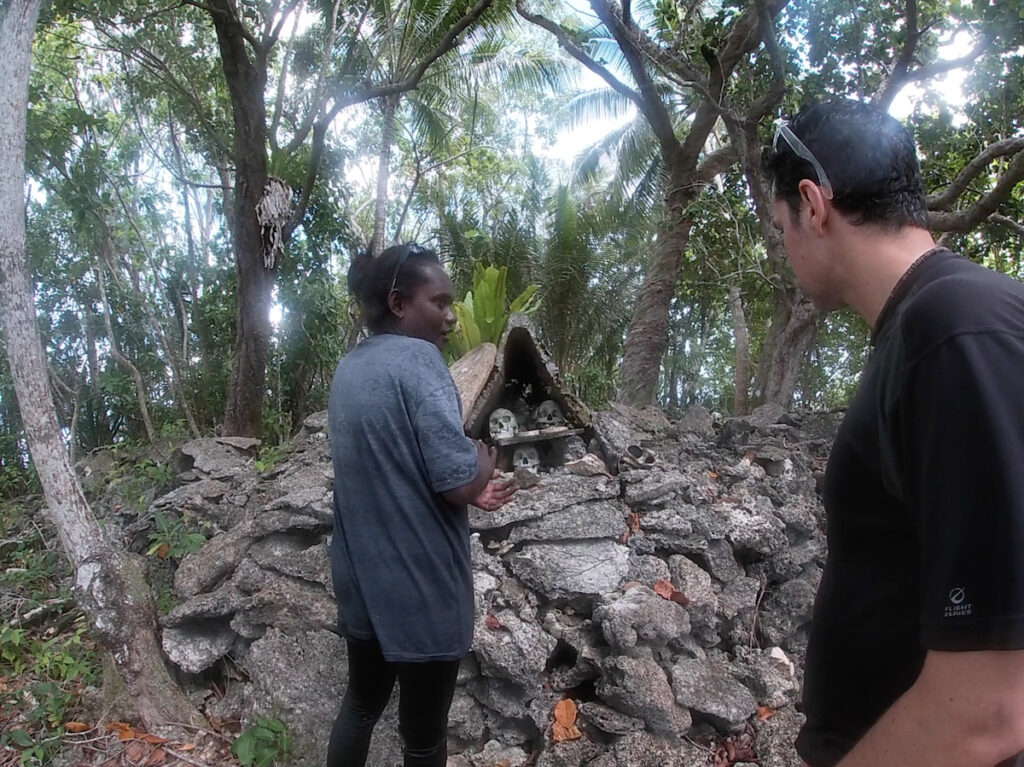
- Get a tour of Luberia Island, American president John F. Kennedy’s base during WWII (while you’re at it, make sure to ask about JFK’s rescue by two brave Solomon Islanders – it’s quite the story!)
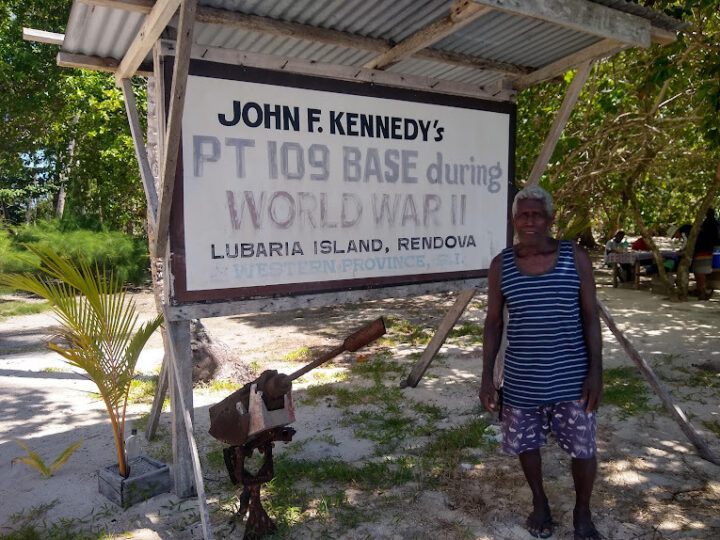
- Take part in the cultural activities and community visits organized through Dive Munda (see picture in section 5.3 above for an idea of your options)
- Head out on a kayaking excursion with stops in local villages (and to see the saltwater crocodiles in their natural habitat!)
- Take a walk to see Munda’s WWII relics and the Peter Joseph WWII museum on the outskirts of town (section 5.6)
To give even more inspiration for your Munda itinerary planning, here’s a picture of the tours and excursions that Agnes Lodge can help organize:
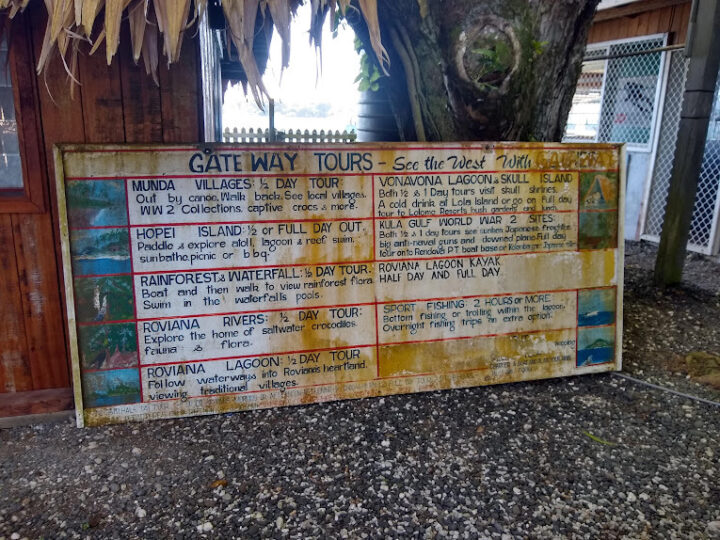
5.5 How to organize tours, excursions, and activities in Munda
Unfortunately, due to lack of transportation and overall remoteness, there just aren’t many activities in Munda you can do independently (with the exception of visiting some of the local WWII sites, which I’ll talk about in the next section!).
In which case, I recommend organizing your activities once you arrive through Dive Munda and/or Agnes Lodge (see previous sections for more).
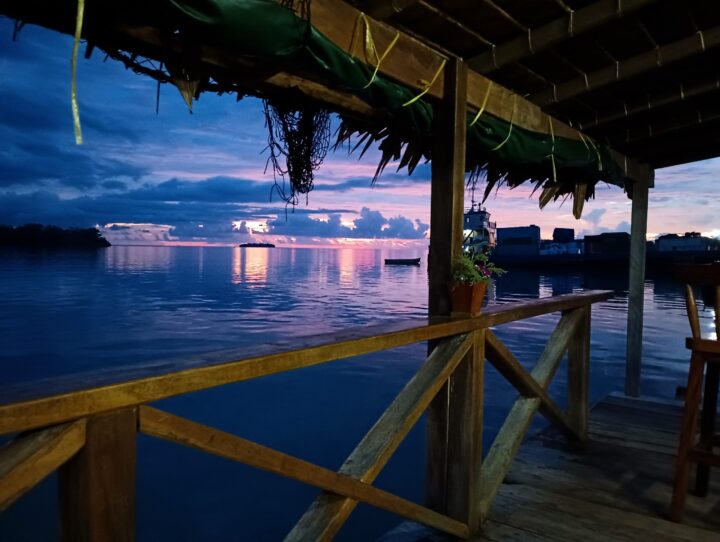
Sunset in Munda from Agnes Lodge
5.6 How to visit the World War II sites/ruins in Munda
Scattered throughout Munda and its outskirts, you’ll be able to find old abandoned bunkers, rusty anti-aircraft guns being used as landscaping decorations (yes, really!), and an American dump site that’s been overtaken by the forest.
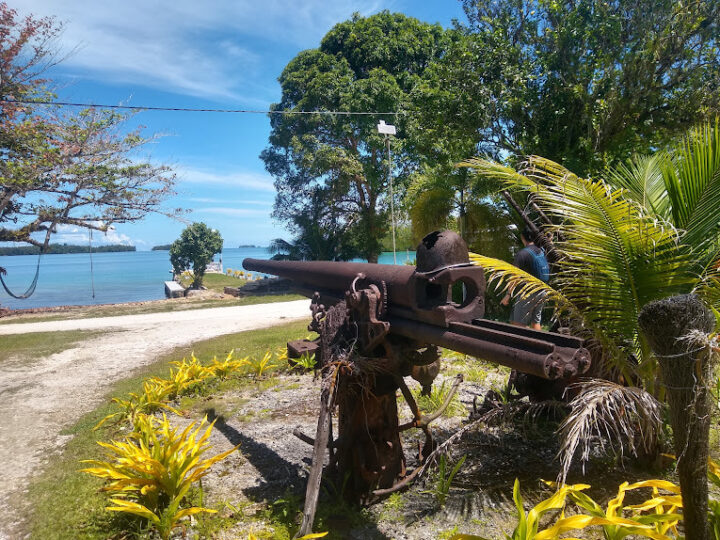
All of these sites are located along the dusty gravel road that hugs the coast a short (though hot!) walk from Munda. I recommend checking with your hotel (or just asking locals as you go) for exact directions.
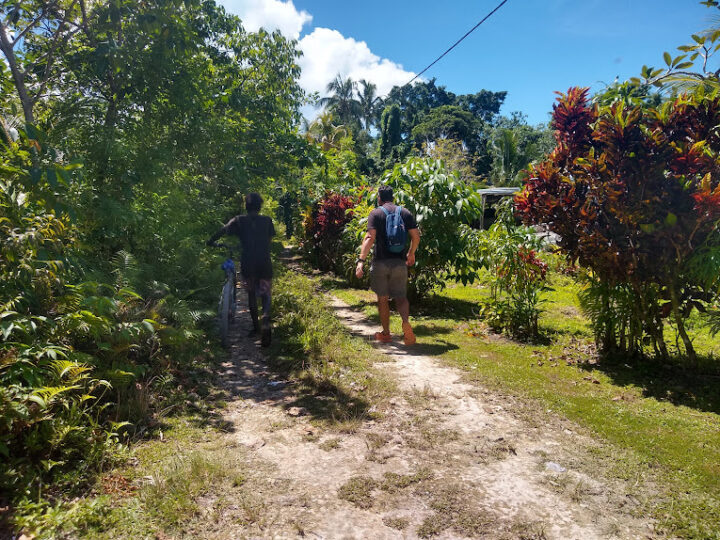
Otherwise, it’s worth making the time to see the collection at the Peter Joseph WWII Museum. Barney, the owner of the museum, is a wealth of knowledge and full of stories. Even more impressively, he’s spent decades diligently gathering these relics himself from the surrounding rainforest.
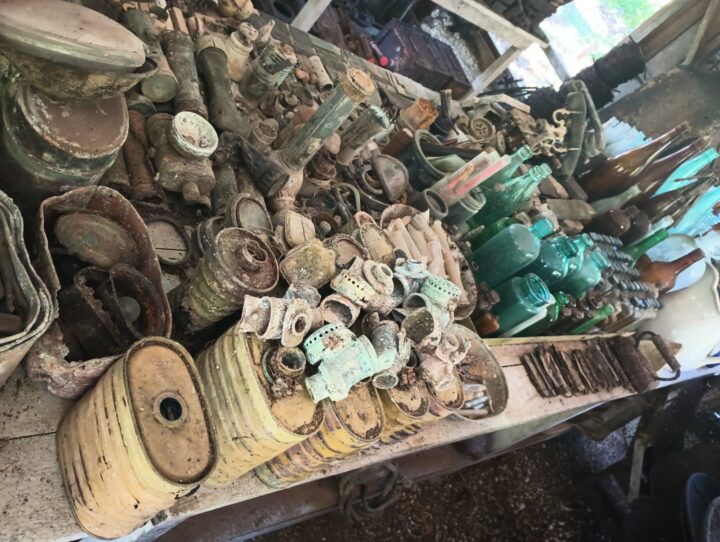
Peter Joseph WWII Museum, Munda, Solomon Islands
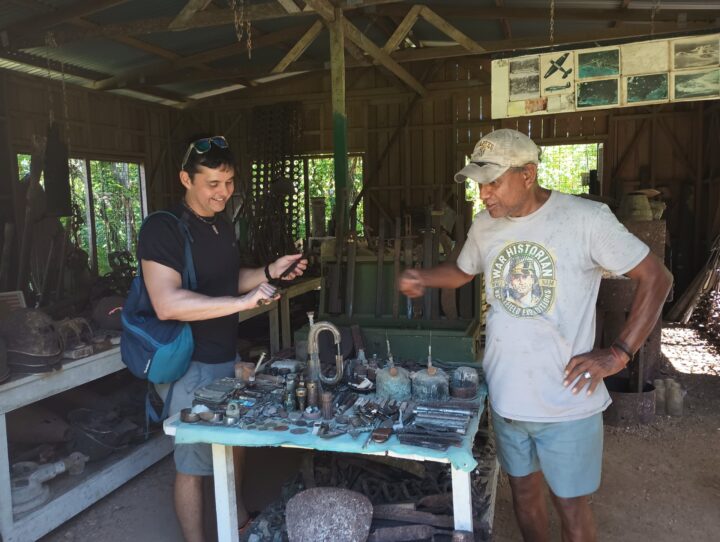
Barney, the proud founder of the Peter Joseph WWII Museum, Munda, Solomon Islands
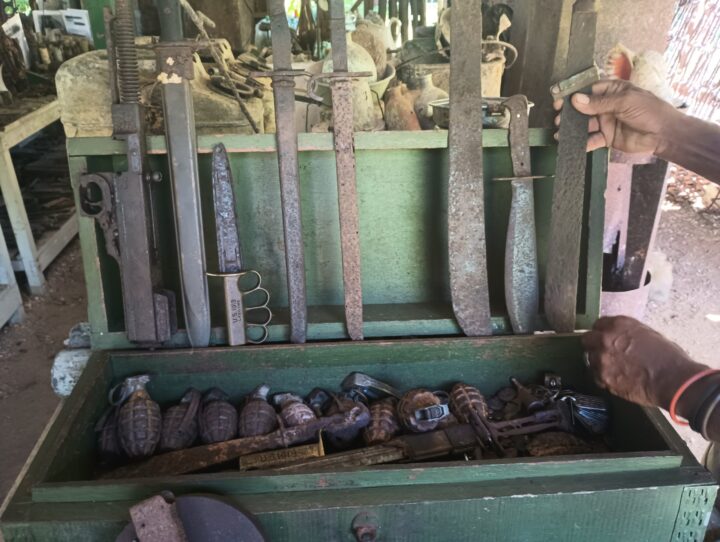
You can find this humble museum tucked behind the city’s soccer field (again, ask your hotel or ask locals for “Barney” if you get lost)
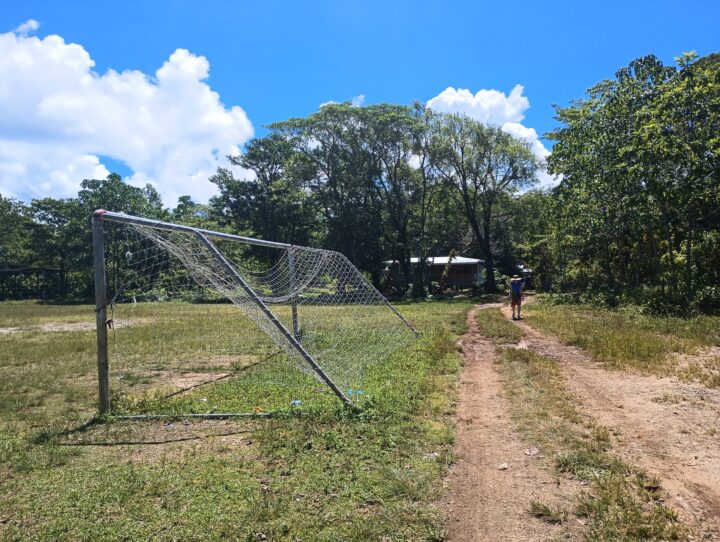
You can find the Peter Joseph WWII Museum behind this football field
Final tips and things to know before visiting the Solomon Islands
- Fewer tourists in the Solomons mean fewer crowds…but it also means fewer (and more expensive!) tour and accommodation options.
Tourism in the Solomons is still in its infancy. While this is certainly part of the island’s allure for many visitors (ourselves included!), it also means that it can be a bit trickier to plan.
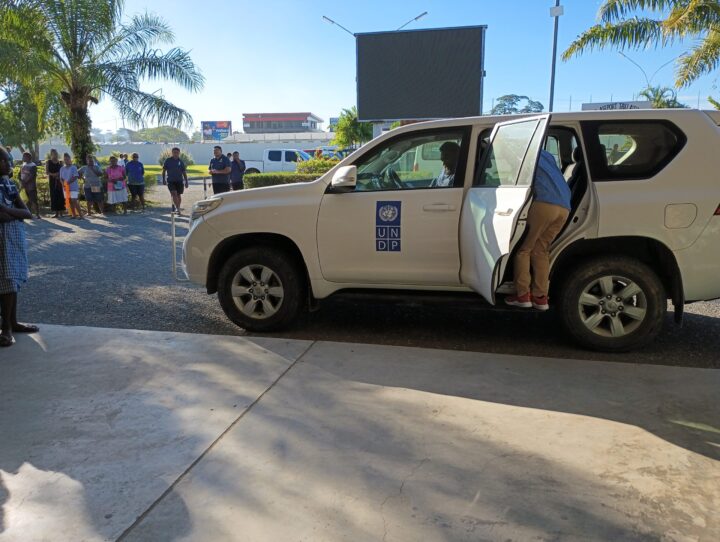
- Stay flexible and ready for a bit of an adventure. (This isn’t Tahiti or Fiji, after all!)
There are a lot of words that come to mind when I think of travel in the Solomons: rugged, adventurous, undeveloped. Perhaps a little “rough around the edges.”
It’s a unique experience, to be sure. And as long as you don’t arrive expecting the same luxury, comfort, or ease of more popular Pacific islands and vacation spots…
I’m sure you’ll have a great time 🙂
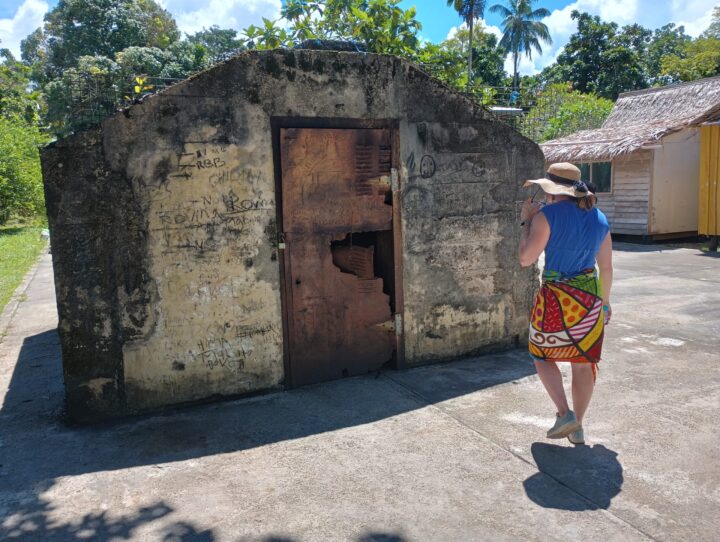
Abandoned WWII bunker, Munda
- It’s quite hard to book much of anything in advance as most things aren’t published online. So be prepared to organize much of your trip and activities when you arrive.
See section 2.7 at the top for more on this.
- Keep cash on hand.
We were able to use our credit card for “Bulk Shop” (the main supermarket in Honiara), Dive Munda, and Agnes Lodge in Munda. Other than that, everything else (other tours, transportation, day trips to other islands, our hotel in Honiara, etc.) was cash only.
- Try to visit at least a few islands, if you can.
Each island has its own particular customs, flair, and even language. So to make the most of your experience in the Solomons, it’s worth trying to explore at least a few.
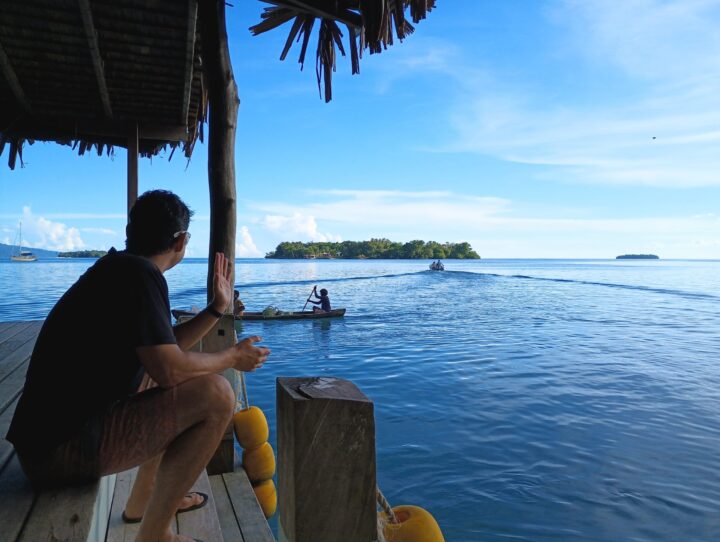
Munda, Solomon Islands
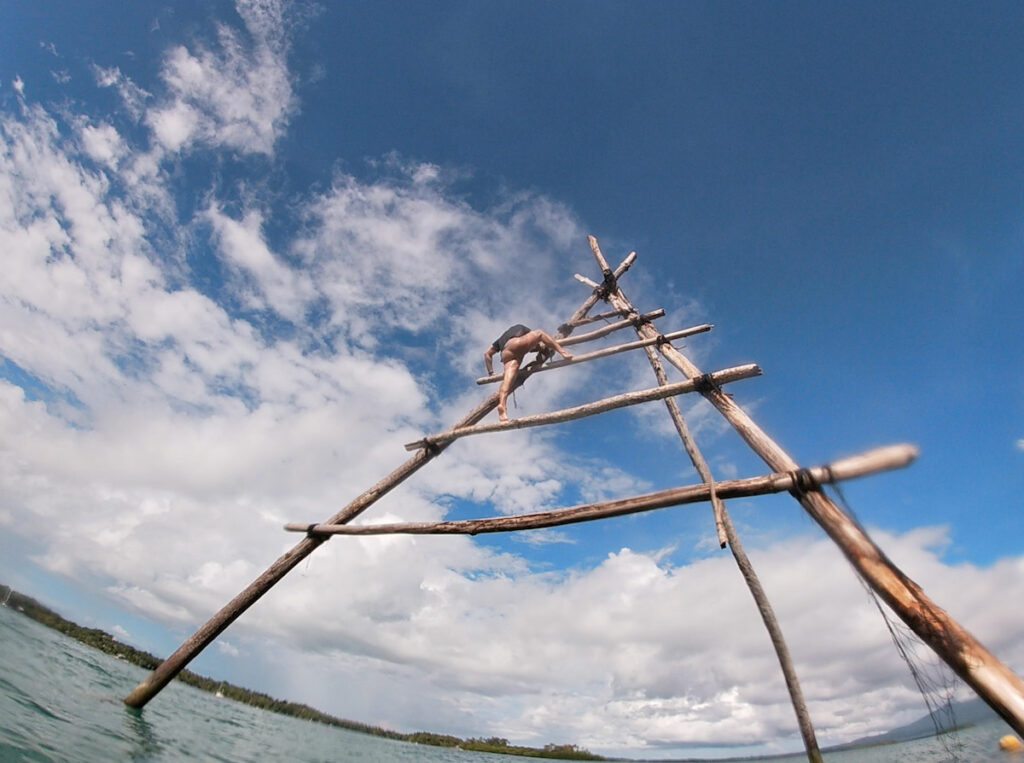
- Don’t limit your stay to Honiara or Guadalcanal.
While Honiara and Guadalcanal certainly do have some interesting things to see, the real magic lies elsewhere.
- Inter-island flights are expensive. But likely worth it for the views.
I mean…
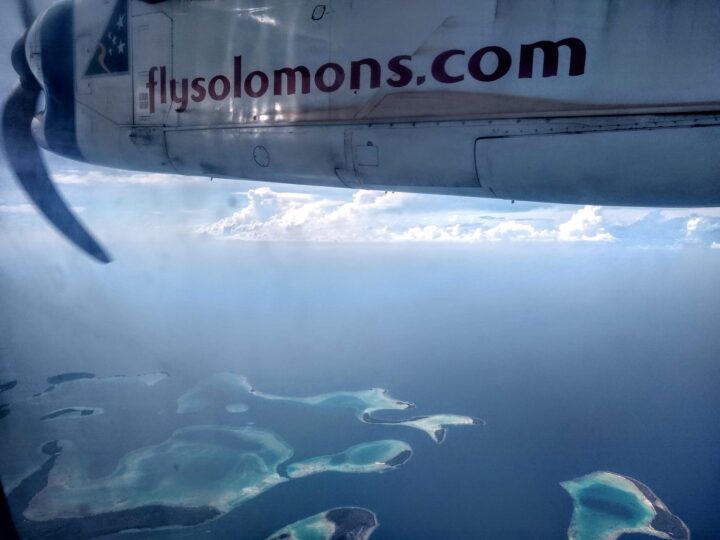
- Don’t be afraid to ask questions – about history, about the country’s current politics, about the current divisions between the many islands…
In general, we found locals to be incredibly open, warm, and willing to chat. (Not to mention, they were some of the friendliest folks we’ve ever found in our travels anywhere!)
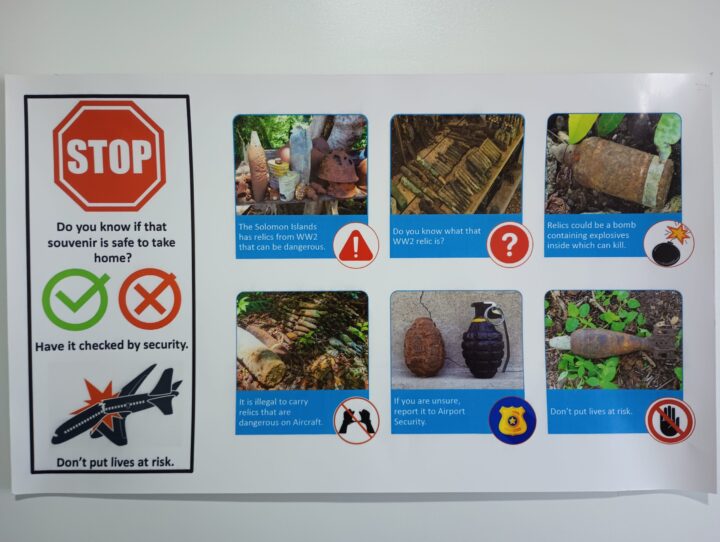
- Have fun! You’re in one of the least-touristed countries in the world. And that’s something special.
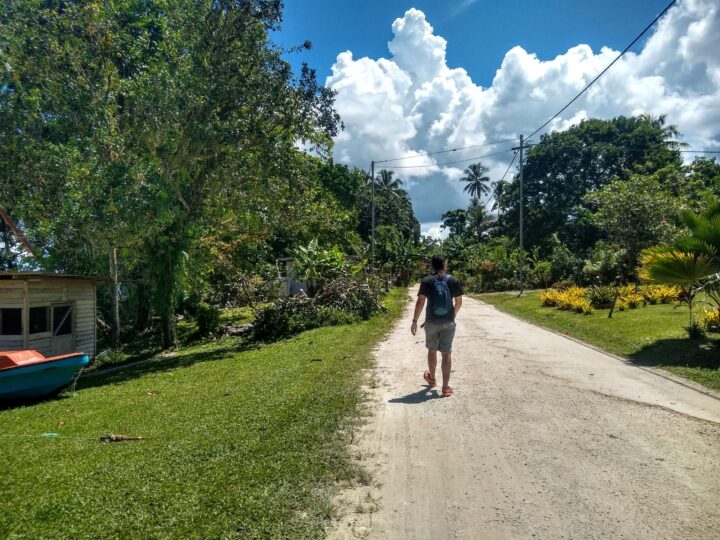
In conclusion…
And that’s all for today! Still have questions about your trip to the Solomon Islands? Or have you already been and have something to add? Let us know in the comments area below and we’ll get back to you!
Planning your next trip?

Already reserved your hotel or hostel? If not, our article with The 6 Best and Cheapest Websites to Find & Reserve Accommodation can help you out. You’ll also find some promotions and discount codes .

Still haven’t booked your plane ticket and want to save big? Take a look at our page with 16 Tips to Save on Flights where you’ll also find the 4 best websites to buy your plane tickets.

And finally, will you need to rent a car during your trip? Then surely our page with The 5 Best and Cheapest Websites to Compare and Rent Cars Around the World will help you choose the best rental car and find a good deal.
Leave a Reply Cancel reply
This site uses Akismet to reduce spam. Learn how your comment data is processed .
Next stop….The DMZ, South Korea

Solomon Islands Tourism Tips, Facts, + Complete Travel Guide
Posted on Last updated: December 14, 2022
This year I had the privilege of being able to visit the Solomon Islands – an incredibly untouched and authentic island nation in the South Pacific. Solomon Islands Tourism is only just gaining popularity, as the country is actually one of the ten least visited nations in the world.
The island nation is spread out over more than 900 islands in 900 miles, with six main islands accessible from each other mainly via short internal flights. The country is very spread out, and consists of both mountainous/volcanic islands with dense jungles to flat white sandy beach islands laden with palms.
The Solomon Islands are laden with coral reefs and impossibly clear water, and are teeming with wildlife both above and below the surface. They have some of the most untouched and magnificent fishing, surfing, diving, and wildlife-spotting locations in the world, which you are likely to have all to yourself on any given day.

The people of the Solomon islands are mostly of Melanesian descent, with portions of Polynesian and Micronesian descendants as well. Locals are lovely and welcoming, however often intrigued and confused about the sight of visitors (more or less depending on where you go!). They’ve had quite a tumultuous history in the Solomons, being one of the main battlegrounds between the USA and Japan during WW2 and also periods of civil tensions and fighting in the late 90’s/early 00’s.
I was invited by Visit Solomon Islands to experience Solomon Islands tourism with my friend (aka instagram husband) Dana of The Wandering Donut , and they planned a jam-packed week for us both. Our trip started off on a high note when we were upgraded to business class on Solomon Airlines (woo!), and that high note maintained the entire week.
After a few weeks of bad weather, we apparently brought the sun with us from Australia and we had an almost-seamless week of lovely weather, fascinating history, incredible photo ops, beautiful locations, and LOTS of my two favorite things – adventures & sunsets! 😉
For hotel info, check out my separate article on Solomon Islands hotels.

Pssst – PIN ME to your Pinterest boards to save for later – this is a loooooong Solomon Islands Tourism Guide!
Quick Solomon Islands Facts:
Solomon Islands Capital: Honiara, on the island of Guadalcanal (famous for a WW2 battle of the same name)
Solomon Islands Population: 611k (and rising steadily but slowly)
Solomon Islands Religion: 95% Christian – however, there were prevalent headhunting tribal traditions before the arrival of Christian missionaries.
Solomon Islands Climate: There are basically two seasons in ‘the Sollies,’ the dry (and cooler) season April to October and the wet (and warmer) season the other part of the year. The temperatures remain quite temperate year-round, with averages of 27 degrees Celsius (about 80F) year round.
Solomon Islands Language : The official language in the Solomon islands is English. However most of the population speak a fascinating dialect of English called Solomons Pidgin. This language is a mixture of Creole languages (of which a few more are spoken in certain parts of the country as well) with a largely phonetically spelled/pronounced version of English. A lot of words/signage can make sense in English if you sound them out. See a photo + explanation down the end of this post!
Solomon Islands Economy: The main exports/foreign exchange from the country are timber and fisheries, with lots of palm oil and copra as well. Solomon Islands tourism is growing industry as well with a ton of potential, but still requires government support for infrastructure. It remains one of the least visited countries in the world!
Solomon Islands People: The people of the Solomon Islands are thought to have first migrated to the area around 3,000 years ago from Southeast Asia, forming the predominantly Melanesian archipelago which includes a few surrounding countries as well. There are also significant populations of Micronesian and Polynesian people as well.
One of the most interesting qualities about the people of the Solomon islands is their unique gene to produce blonde hair alongside dark skin – which is thought to have evolved from a diet rich in seafood and lifestyle rich in sunlight. About 10% of the population have naturally blonde hair. See below for a brief Solomon islands history!
- Betelnut: one of the fascinating cultural traditions of the Solomon Islands the the use of betelnut, a nut grown locally and chewed. You’ll notice that many people of the Solomon Islands’ teeth and gums are stained red with the stuff. It’s something that is done socially with friends, and is a slight stimulant much like coffee.

Solomon Islands History (In Brief)
The Solomon islands were home to indigenous tribes and peoples since they were first settled around 2000BC. In the mid 1500’s, a Spanish explorer ‘discovered’ them and named them the Isles of Solomon, thinking he had found the source of the riches of the biblical figure of the same name. This is why many islands still have Spanish names.
The islands were left mostly alone until the late 1800’s, when the occasional missionary or trading ship would make contact. Also during this time, many ships from Australia and Fiji began ‘blackbirding,’ or abducting Solomon Islanders to labour on plantations (which laid some of the foundations for the pidgin dialect of English that made it back to the islands).
In 1893 the Solomon islands became a British Protectorate, which it remained for decades. The islands were then occupied in 1942 by Japanese WW2 troops, and American troops soon after – leading to several years of intense and crucial battle which exploited and damaged the nation, but left it with a new identity.
After the war the new capital, Honiara, was established next to USA’s Henderson airstrip, and the Islands became independent from British rule in 1978. They remain close with British rule and are a member of the Commonwealth.
Infrastructure was improved at a slow rate until ‘the tensions’ of 1998-2003, which was a period of battle and civil unrest between the islands of Guadalcanal and Malaita. Many residents of both islands were displaced or forced to flee conflict, and there were periods of violence until 2003 when the RAMSI (Regional Assistance Mission to Solomon Islands) or ‘Helpem Fren” (‘help a friend’ in pidgin) arrived.
RAMSI was a force of a few thousand soldiers from Australia, New Zealand, and many other Pacific Island Nations who arrived to help restore order and disarm militias, which was hugely successful.

What to Know Before Considering Visiting the Solomon Islands
Before considering visiting the Solomon Islands, there are a few things you must know. The islands are still very untouched, and receive under 25,000 visitors per year (many of which visit on business or research purposes). Although they still lack the complete infrastructure to support mass tourism, they are very well suited to the off-the-beaten-path traveler who seeks some authenticity in their ventures.
You won’t find massive bus stations, decked-out resorts, tourism-directed advertisements and signage, or travel agencies all over the place eager to sign you up for your next tour. Most excursions and transport will be booked for you through your hotel, and Solomon Islands tourism leaves a bit more of your trip up to your own interpretation.
There aren’t many gift shops, touristy malls, or souvenir markets. I couldn’t find many places to get souvenirs/arts/crafts outside of Honiara, and most of the shopping malls and crowded food markets were simply stocked with necessities for locals and no tourist bait.
Essentially, what I am saying is that it’s certainly no Hawaii, but that’s what makes the Solomon Islands so intriguing, authentic, and alluring.

Spotting islands from the plane, and little reef sharks from the pier!
Who Should Visit the Solomon Islands?
Because ‘the Sollies’ are more suited to a certain type of traveler and not really for others, I’ve made this handy dandy little chart listing out the types of people who would love Solomon Islands tourism and those who may not.
DEFINITELY COME IF YOU ENJOY:
- Scuba Diving – Solomon Islands scuba diving is some of the best in the world
- Fishing – Amazing fishing and sport fishing, prolific sea life
- Surfing – Remote + untouched reef breaks with perfect waves
- Wildlife Spotting/Bird Watching – some of the most biodiverse places in the world (especially certain islands) and popular for birds
- Eco and rustic travel and experiencing the true identity of a place
- Adventure Travel – snorkeling, scuba, fishing, helicopter, hiking (volcanoes), jungle/rainforest walks
- Culture – visiting communities/villages and interacting with locals to learn their customs and traditions
- Being remote + in nature without much contact with the outside world (e.g. wifi)
- Fascinating World War II history, memorials, ruins, museums, and artifacts
- Potentially being the only people staying at an island hotel for a few days – getting to know the locals and workers
- (Truly) untouched island paradises with clear blue water, sandbars, dozens of tiny white sand islands with jungle vegetation
- Freshly prepared seafood- lobster, squid, shellfish, white fish, and more
- Interacting with kind locals who would love to chat about where you’re from
MAYBE DON’T COME IF YOU ARE LOOKING FOR:
- A luxurious five star resort experience with people waiting on your hand and foot
- A cheap party travel destination/a cheap place to go and get wasted for the weekend
- Busy cities and populated resorts with lots of other international guests
- Infrastructure on par with the Western World
- Being able to constantly connect to wifi and stay in contact with the outside world/stream movies/upload photos/etc
- Lots of options to go out and socialize at night
- Big cities with lots of amenities/being able to access all food/drink/convenience/entertainment needs at any given moment

I was having far too much fun, clearly!
How to Get to the Solomon Islands (Solomon Islands Airports)
The Solomon Islands have two international airports – one of which actually just opened in late March 2019. Before the Munda International Airport opened its doors, you could only arrive in the Solomon Islands via a flight through the capital, Honiara.
Brisbane is the main international hub through which most flights to the Solomon Islands will pass. There are a couple flights per day from Brisbane to Honiara (and vice versa – usually two). There are only a few other international flights out of Honiara to other South Pacific Islands such as Fiji, Kiribati, and Vanuatu, but other than that all must pass through Brisbane.
However, the recent opening of the Munda International Airport has and will continue to open up many new doors for Solomon Islands tourism. The flights from Brisbane to Munda were still in the trialing phase as of March 2019.
But, they will continue to expand and proliferate through the year, in hopes that it will expand visitation and potentially investment in Solomon islands tourism and infrastructure. The main thing that must be established is the immigration system, but all plans are in place to have even cheaper flights to this part of the Solomon Islands soon.
The international flights to the Solomon Islands will have both business and economy class. Business class seats come with higher caliber meals and alcohol, however the meals in the economy class are also quite good with (lower quality) wine and drinks as well. See below for a Solomon Islands budget/pricing section.

Getting Around in the Solomon Islands
The Solomon island chain is much larger than it may seem. As I mentioned earlier, it covers a distance of over 900 miles from Papua New Guinea to Vanuatu. Let me repeat that – nine hundred miles. This is no small feat to cross, folks! You can’t exactly get from one side to the other via small motorboat, and the infrastructure does not yet support large-scale ferry services to bring people around, especially in times of storms/rain.
So, as of now, you can get around the islands themselves by car/van of course, between some of the closer islands via small motorboat, and the rest is left up to tiny internal flights run by Solomon Airlines.
Solomon Islands Internal Flights
From Honiara you can take short flights to just over twenty islands/airports in the Solomon Islands. These flights go through the smallest airports you’ve ever seen, with singular check-in counters and one-human-looking-in-your-bag security checkpoints (if anything), and board onto the cutest little propeller planes on single-lane runways. Some flights have slightly larger propeller planes, while the shortest flights take tiny prop planes without much more than a few dozen seats.
My Experience/What to Know About Solomon Airlines
I couldn’t stop giggling about the tiny size of everything at the island airports. They were essentially one-room buildings with a counter and back door that lead right out to the tarmac. Baggage claim at Solomon Islands airports is nothing more than a cart of everyone’s bags being rolled out to the building, and leaving everyone to work together/scramble a bit between each other to find their bag.
The Honiara Domestic Airport was the only one with a security check, which was comprised of a woman checking inside everyone’s bags. This was also the only one with multiple rooms, with a waiting room and another with a few chairs (far less than the amount of seats on the plane, ha) after security.
The Gizo Airport is one of the most unique in the world; it’s literally an airstrip that is an island itself, and the only way to get to the mainland/other islands from it is by motorboat. It’s the type of thing where you’re looking out the airplane window seeing the sparkling blue ocean getting closer and closer as you descend, and momentarily getting slightly worried that land actually won’t appear because you can’t see land/the airstrip until you’re a mere few meters off the ground.
Picture locals selling coconuts on a grassy patch just outside the open ‘terminal,’ with a couple airport baggage carts laying beside them waiting for the chance to be used. You then make your way to a small pier where motorboats from various hotels are waiting to pick up their next patrons, for quite possibly the coolest airport taxi ride you’ll ever take.
The Munda Airport is at the end of a tiny main road of town, bordered by a single bar, a couple small hotels, some Chinese shops, market stalls, and a grocery. It’s a single room with a check-in counter and a bench around the outside, with tons of informational posters (likely made on Microsoft Word) on the walls about different hotels and islands to visit in the area.
Planes from here back to Honiara will come from Gizo, so when you hear the plane land you’ll know it’s time to board. After some people have deplaned and entered the small building from the tarmac, you’ll jump on the small plane which will have patrons still on it from Gizo. Your ticket might even be written by hand.
What to Know about Internal Flights on Solomon Airlines:
- These flights will have some of the best airplane window views you’ve ever seen. Make sure to keep your eyes fairly glued to the windows… by doing your best to get a window seat.
- The seats may be assigned on the tickets (sometimes), but it’s essentially a free-for-all on all internal flights. This means the seats are first-come-first-serve. Make sure to try and line up first to have your pick of seats so you can get one with a window for the epic viewage.
- Make sure to pack your camera(s) in your carry-on so you can take photos out the window. Trust me.
- The snack we got was a fascinating ‘butter cracker sandwich’ that tasted a bit lemon-y to me. Make sure to try this interesting local snack.
- There will be lots of locals flying too. It might be a great opportunity to have a chat with someone who lives in the Sollies to get a fresh/authentic perspective on what it’s like and where they’re going.

Where to Travel/Things to Do in the Solomon Islands
Phew! Now that we have gotten the logistics out of the way, I assume if you’re still reading that you are the adventurous/getaway type of traveler. Great! There are LOADS of places for you to explore, all over the Solomons.
I’ll begin with a brief outline of what each place has to offer. Check out the best Solomon Islands hotels for reference as well – there are just a few in each destination.
Guadalcanal Island + Honiara
Guadalcanal Island is the largest of the Solomon Islands and home to the capital city, Honiara. The name Guadalcanal may be familiar to many due to a large and decisive World War 2 battle of the same name, between the US and Japan. As I mentioned above, battles in the Solomon Islands were some of the most crucial of the War, and just barely ended with US control over the Pacific rather than Japan moving closer toward Australia.
The Henderson Airstrip of Honiara (which is now the international airport) was the most crucial capture for the US Army; if control of that very airstrip was lost to Japan, the world may actually have ended up very differently today! Either way, there is a LOT of WW2 tourism in Honiara. There are many War sites, memorials, ruins, and museums to visit. The island was essentially ravaged by the war, and remnants can still be found to this day.
Honiara is also of course the capital and financial/governmental center of the Solomon Islands. It has the highest population and the hustle and bustle of a busier city. However, the Solomon Islands are one of few countries where the majority of the population still lives in rural communities (rather than most people gravitating to bigger cities for work), which is another reason it’s so authentic.
This also means that the capital city is not as big as one may imagine. There are a few main roads, a couple restaurants, a cafe or two, a central market, a yacht club (pretty much the only form of nightlife), some bigger hotels, and quite expansive suburbs around the city as well.

What to See and Do in Honiara + Guadalcanal
- US War Memorial and Japanese War Memorial – There is both a US and Japanese hilltop War memorial around the hills of Honiara. Here you can learn about how the War effected both countries, pay tribute to lives lost, and see lovely views.
- Art Museum – The Art Museum in the city center houses two rooms of local art. Art from the Solomon Islands, in my opinion, tends to be very vibrant, abstract, and ocean/nature focused. I adored some of the paintings here – one of them is still the background on my phone!
- National Museum – This museum was quite comprehensive, with Solomon Islands history all the way from prehistoric times (when the first humans are assumed to have arrived in the South Pacific), to the first people in the actual country, to the Spanish occupation and British Rule, to WW2, to the times of tension and RAMSI help. You could really learn everything you need about the islands at this museum if you had enough time.
- Vilu War Museum – This museum is a bit of a drive out of town, but is fascinating. It’s a ‘museum’ comprised of all the remnants of the War that a local man found (with some items he bought from others), which are laid out aesthetically in a field scattered with trees and flowers. You can see broken-down skeletons of both US and Japanese cannons, bombs, many different types of airplanes, propellers, artillery, tanks, and more. You can also learn about what each thing was and how it was used in the war.
- Honiara Central Market – This busy market is right in the city center and has locals selling every kind of food you can think of, and some crafts/jewelry too. It’s vibrant, bustling, and definitely worth a wander.
- Mbonege Beach Bonegi Shipwreck – at Mbonege beach you can see the rusty remains of an old Japanese War ship. This is a lovely beach on a nice day, and if the tide is low enough you can get a quite good view of the old ship. You can also snorkel around the wreck because it’s just a few dozen meters from the shore.
- Tenaru Falls Hike – Quite a bit farther into the hills outside the city, you’ll find a 1-2 hour waterfall hike. This adventure is perfect for having a quick getaway and experiencing more of the rainforest and nature of Guadalcanal.
- Lumatapopoho Cultural Village – you can visit this small traditional village to learn about how tribes used to: cook cabbage, make different food recipes, make clothing, thatch palm for building roofs, make fire, peel and eat beetlenut.
Where to Stay in Honiara
Our Honiara hotel was called Heritage Park . This hotel has a lovely property comprised of multiple two-story buildings with balconies overlooking the pool, palm trees, and even the sea. It’s right on a rocky shoreline with a beach bar, very high quality restaurant (and even quicker bar meals), buffet breakfast, and events during the week (such as movie night/parties at the bar).
Heritage Park had all we could have asked for – large spacious rooms with hot water, air conditioning, and even a small TV. Properties in Honiara will definitely have more fixings than in the islands – make sure to remember that!

My Experience on Guadalcanal/Final Thoughts
Guadalcanal was the first stop on our Solomon Islands trip, as I’m sure it will be for most people. Here Dana, Michael and I (the other travel writers/bloggers on the trip) did all the classic ‘touristing’ and visiting of memorials, museums, and well-known sites. It’s the best place to get a feel for the history and city-life vibe of the Solomon Islands.
We drove around in a van and ticked off the main sites, getting our first feel for the island nation. We spent a day going around the main city, and one a bit farther out of the city to sites farther away. The drives were bumpy but scenic, and I took in the tropical foliage that reminded me of something between Hawaii and Southeast Asia (which makes complete sense I suppose! 😛 )
I wandered alone around the central market, stopped at a cafe for coffee, slinked in and out of shops on the main road, and chatted with locals here and there. I appreciated the view of a rainbow from the rocky coast near the hotel, and picked at a burger in between swims in the hotel pool. We tried some delicious seafood and enjoyed the extremely warm hospitality of nearly everyone we interacted with.
Guadalcanal/Honiara is not going to be what many people picture of the Solomon Islands – which is pristine beaches and islands. Guadalcanal is the more grungy city where you learn more about history and how people really live and go about their days.

Savo Island
Savo is right off the coast of Guadalcanal Island and can be seen as one of the many adventure capitals of the Solomon Islands. It’s a small volcanic island with prolific wildlife and adventurous activities, and is quite easy to visit from a small village on Guadalcanal outside Honiara on one of your days there. Savo is best done as a day trip from one of the hotels in Honiara, and bookable from most hotels also.
What to See and Do on Savo Island
- Volcano Hikes – Savo is home to some easy (1 hour or less) and some harder (3+ hour) scenic treks up the volcano.
- Wild Dolphin Nursery – a stop on the way to Savo Island from Guadalcanal – spot some dolphins in the wild!
- Megapode Hatchery – Locals maintain hatcheries for megapode birds, which will lay their eggs on the sand at sunrise.
- Waterfall walks -there are many up in the rainforest
- Local Culture – There may be cultural displays and dancing in the villages
If you love the island, you can even stay at Savo Sunset Lodge for a few nights.
My Experience on Savo
Soooo, the weather was acting up like crazy the night before our Savo tour, causing us to have to make the tough call to cancel it. Unfortunately, this is a reality of a tropical destination (especially in the wet season), and we got to see some extra spots in and around Honiara instead. However, I have recommended the awesome activities that we were supposed to do with the Tourism Board above, plus a few more!

Ghizo Island, Gizo Town, + Surrounding Sites
Gizo is where you’ll reach the parts of the Solomon Islands that you may have imagined or seen in catalogues. This is where the best diving and fishing in the Solomon Islands are located, along with lots of surf breaks, tiny pristine islands, white sand beaches, palm-topped landscapes, and pretty-much-perfect sunsets.
The main larger island is called Ghizo, the capital of which is called Gizo (confusing, I know!). But, the tiny surrounding islands dotting the coastline are where the magic really happens. Surrounding the main island, you’ll find remote rustic resorts, private rentable homes, reefs perfect for snorkeling, untouched surf, and some of the clearest blue water in the world.
What to See and Do In Gizo
- Gizo Town – This is the main town of Gizo, with locals out and about near a few restaurants, a main strip of shops and restaurants, and a central food market. Grab a fresh coconut for sure!
- Diving – The Gizo Dive Shop is owned by an American/Australian couple who have lived in the Sollies since the 80’s. They started it up from scratch, scouted out most of the dive sites themselves, and have built the region into one of the top dive areas in the whole world! Many dives and trips book up early these days, so get in early to make sure Danny is your dive guide.
- Fishing – With some of the most wildlife-rich dives in the world come some of the best places for fishing, as well! Fishing trips will be conducted from most resorts, with the hope of being able to catch a fresh seafood dinner.
- Boating – Many yachts sailing the south Pacific will stop from the Solomon Islands, and there are also sailing trips going around the islands as well. It’s a must to boat around the islands, especially in Gizo, and there are many multi-day diving and fishing boat trips too.
- Snorkeling – Also an absolute must, snorkeling in and around Gizo is incredible. Diving still takes the cake in terms of clear water and amazing views, but there are some stunning shallow reefs among the islands to check out as well.
- Sunsets – There are plenty of western-facing sand bars and beaches where you can catch a magnificent Solomon Islands sunset. Many hotels will have sunset boat trips – make sure to jump on one!
- Kennedy Island – Kennedy Island is just off the coast from Fatboys Resort, and is actually the island that JFK and his crew landed on after their ship was hit by a Japanese missile. It’s a tiny circular island with spongy white sand and and a jungle landscape – perfect for snorkeling and taking beautiful photos.
- Njari Island – The owners of Dive Gizo also own this island, which has one of the top-ranked dive sites in the entire world! It has lovely beaches and snorkeling as well.

Where to Stay in Gizo
We saw so many beautiful island resorts and convenient accommodations in Gizo. Here are a few:
- Fatboys Resort – This is where we stayed! There’s an overwater restaurant, beachside bungalows, kayaks, boat trips, kayaks, adventure sports, and more.
- Sanbis Resort – This resort is on the other side of the island that Fatboys is on. More amazing beachside bungalows, overwater pier/bar/restaurant, and amazing views.
- Imagination Island – This resort is an entire island in itself. It’s a few kilometers off the coast of the airport, and is a quaint and perfect little getaway with a few rooms, great food, and plenty of adventure + fishing trips.
- Gizo Hotel – If you don’t want an island resort and prefer to be in the town, the Gizo hotel is the choice for you. It’s right across from the market as has convenient facilities and a restaurant balcony over the town.
- Oravae Island Cottages – located on a tiny private island, the Oravae cottages are the best getaway you can possibly get! Think – rustic wooden houses right on the water, with an over-water swing as well.

My Experience in Gizo
When we arrived in Gizo, got off the plane, and immediately got on another boat and skimmed over beautiful blue water, I felt like the trip had finally begun. Arriving at the picturesque Fatboys resort was like something out of a dream, and Dana and I were squealing as we were greeted with colorful leis and fresh lemonade. It was the true island experience, and we felt so welcome and ready to explore.
We had so much fun taking photos, snorkeling, and having a traditional meal on Kennedy Island. Later that afternoon, we went on a fishing trip and were astounded to find (after a massive struggle) that we had actually hooked a reef shark – which we let free, of course!
We boated between the islands, snorkeling at every stop, and flew my drone and captured moments in each place we stopped. We woke up each morning with a delicious breakfast and finished each night with a fresh dinner, and even fed a few resident reef sharks off the overwater balcony.
One of my favorite moments from Gizo was our ‘ sunset wine-down,’ where we had a few glasses (bottles?) of wine on a pristine sand bar facing the sunset. After fiddling around for ages with cameras and tripods to get the perfect photo (and putting the drone up as well, of course!) we enjoyed a few too many glasses of wine with the water lapping up at our bare feet.
Gizo is a place you could spend lots and lots of time. It’s a true rustic island getaway, with attentive seaside accommodation and delicious food. If you can – spend the most time here!

Munda, Roviana Lagoon, + Surrounding Areas of New Georgia Island
As we jetted down a channel in our small open speedboat from Gizo to Munda, I noticed quite a big change in the landscape. We had gone from the sandy beaches of Gizo to a mangrove-bordered channel of New Georgia Island, with more of a deep green color than sea blue.
The vegetation was a bit different, with trees growing all the way to the water on many of the islands. This was our arrival to Munda – a small town on the Southern half of New Georgia Island. This is where I realized how varied the landscapes are on these islands – there’s truly a bit of everything, from mangroves to beaches to volcanoes to waterfalls.
Munda is surrounded by the Roviana Lagoon, which is home to some tiny sandy islands, some wildlife rich reserves, some mangrove-laden channels, and more. It’s yet another great hub for adventure, and we got up to plenty of activities here as well.
What to See and Do in Munda
- Munda Town – The main town is a few tiny streets with makeshift markets, a couple hotels, and a few stores.
- Roviana Lagoon – this lagoon may be mentioned on many Munda tours, and just refers to the calm sea area and islands between Munda town, Roviana Island, and almost all the way to Vonavona island. This area has a certain dialect and culture.
- Skull Island – this is a fascinating historical island on the way from Gizo to Munda. In brief (because I have more comprehensive posts coming soon!), it’s where they have left quite a lot of skulls from when the tribes here practiced headhunting. This ended with the coming of Christianity, and it was decided that the skulls would need to be moved somewhere more remote.
- Peter Joseph Museum – This began as a single man’s passion for searching/digging/finding artifacts from the War, and has turned into one of the most impressive War Museums in the Solomon Islands. It’s an entire building/room filled with everything from dog tags, lighters, coke bottles, soap boxes, and bullets to canteens, helmets, rifles, and even toothbrushes. It’s amazing to see what he has found and learn some stories from the artifacts.
- Scuba Diving – there are still plenty of places to dive in Munda as well as Gizo.
- Rainforest Walks, Rivers, and Waterfalls – hotels can also organize day-long treks through the island’s jungles, to waterfalls and viewpoints alike. You can even see crocodiles in the island’s rivers.
- Fishing Trips – This region is also great for fishing, and trips leave from the hotels regularly.
- Local Villages – many day tours from the hotels will include visits to local villages, and some tours include cultural villages only.
- Rendova island – About a 30-45 minute boat ride away is a stunning mountainous island called Rendova. It’s got a fantastic eco-lodge and a very visitor-friendly village with locals eager to share their traditions.

Where to Stay in Munda
- Qua Roviana – We stayed here. It was a block back from the water in Munda town, and had fine facilities, a kitchen, a living space, and more, with air conditioning in each room as well (huge plus!)
- Agnes Gateway Hotel – This is the biggest hotel in Munda town, right on the water. There’s a fantastic restaurant where we had all of our meals (helllooooo fresh lobster!) and they have both private and cheaper dorm options.
- Zipolo Habu Resort, Lola Island – Lola Island is closer to skull island, between the Roviana and Vonavona regions. The beachside resort here is also beautiful and rustic, with a great restaurant and reef sharks visible from the pier.
- Titiru Eco Lodge – We spent a full day here at Titiru and visiting the local village. The lodge is beautiful, with kayaking and SUP’ing possible right from the balconies of the rooms, amazing gardens, delicious food, and proximity to Ughele village. I would LOVE to come back and stay longer here.
My Experience in + Around Munda
At first, Munda area seemed a bit less tropical and more swampy than Gizo, but I was quickly proved wrong after visiting Skull Island, Rendova, and two other tiny islands off the coast of the town which are perfect for sunset (Kuru Kuru and Kundu Kundu, I believe). Munda is different in that it’s more diverse, with both mangrove forests, waterfall-dotted mountains and jungles, AND beautiful beaches (albeit a bit more overgrown).
Upon arrival, I had a quick walk around town. There really wasn’t too much to look at, but I did my best. I wandered through the market stalls made from makeshift tied tarps and sheets, and smiled at locals selling beetlenut, potatoes, and other roots and leaves.
I wandered past the town pub, coffee shop, and in and out of a Chinese grocery store, and all the way to the small airstrip before turning back around. The whole thing wouldn’t have taken me much more than ten minutes! I returned to the Agnes hotel where I enjoyed a coffee and watched local fisherman traverse the Roviana Lagoon on their long wooden canoe boats.
Outside of Munda Town we had a few fantastic excursions. We saw Skull Island from Lola Island, which was both eye-opening, sad, and fascinating. Our trip to the Peter Joseph museum really hammered into us even more the significance of the War in this part of the world – the thousands upon thousands of left-behind artifacts each told their own unique and heart wrenching story.
Our trip to Rendova was also a highlight – we saw the beautiful Titiru Eco-Lodge and got to kayak in the harbor – but I adored being able to walk through the nearby village. It was like the locals had stations set up to display cultural practices to us.
It started with a traditionally-dressed tribesman jumping out of the bushes and yelling at us at the top of his lungs; we were SO startled we nearly screamed, but soon realized that it was an (albeit extremely well-done) demonstration of painted men showing what it would have been like to land on this island a few hundred years ago.
We saw an old woman traditionally washing her baby in the river when we first walked up, followed by catching eels in the river, making traditional clothing, shaping wood, making toys, and even making and sampling local food recipes.
One of the most memorable moments of the trip (and our last activity) was watching sunset from the tiny islands off the coast of Munda town. After Dana and I (obviously) had one last beachy photoshoot, the sky turned red and pink with swirling colors within the clouds. Our jaws dropped to the floor and we knew that the Solomon Islands were sending us off in the best way possible – with my two favorite things, adventures & sunsets of course!

Solomon Islands Budget Notes
So – what should you budget for the Solomon Islands? The main thing to keep in mind is that, unfortunately, t he Solomon Islands aren’t cheap. This is no Southeast Asia; the Hapi Isles are quite remote, difficult to get to, and have quite high prices that keep the economy going.
I would say the restaurant prices are about on par with Australia. For basic meals/breakfast/lunch you’ll be looking at around $10-15USD, whereas for nicer meals and dinners you’ll be looking at around $15-30USD. This is at hotels/restaurants, however, and you can always shop at the markets to cook for yourself when you see fit.
For hotel rooms, you’ll be looking to pay about $120-$200USD/night. Some of the cheaper rooms will be a bit more basic, but for $200 you’ll get some nicer (although still often rustic!) beachside bungalows. For the more budget traveler, there are a couple cheaper simple twin room/dorm options on some of the islands for around $35-$50 per person.
Getting to the Solomon Islands may be the costliest part of the journey – flights are a bit fewer and far between, and therefore are pricier. However, the opening of the Munda international airport is showing a lot of promise for lower flight costs from Brisbane. Currently, the flights go for about $800-$1200 round trip to Honiara from Brisbane, depending on when you book. Add on whatever flight you’ll need to get to Brissy, and you have your budget! Just make sure to look out for the first flights from Brisbane to Munda, which are set to be cheaper.

Final Solomon Islands Tourism Tips – What to Know Before You Go
Lastly, I’ll leave you with a few final, yet extremely important notes on things to know before your Solomon Islands trip:
Passports + Visas
You must have at least 6 months validity on your passport to enter the country. Most visitors are granted visas upon arrival to the Solomon Islands, but make sure to check up about your country before you go. People from many European countries, the US, and the Commonwealth do not need a visa prior to arrival.
Medical Information
It is recommended to take Malaria pills during your visit to the Solomon Islands due to small pockets of malaria. Consult your doctor before your trip to stay up to date with the latest travel notices and injection recommendations. If you don’t have malaria pills, be SURE to bring strong bug spray!
Wifi in the Solomon Islands
Wifi in the Solomon islands is best described as a lack thereof. You’ll find much better (read: slow yet functional) wifi in Honiara, but as you get out to the more remote islands, wifi will be few & far between. Some resorts (such as Fatboys) have a wifi code that can only be used by one person at a time, and you may hear “the wifi isn’t working” more often than not.
But – this is not the kind of place you want to be spending connected to wifi, the Sollies are really a place to disconnect from the internet world and connect with the real world, amazing landscapes, other people, and wildlife.
Solomon Islands Food
Food in the Solomon Islands is, as I’m sure you can guess, very seafood-based. There will be tons of fish and shellfish, complimented by a lot of taro and potato for starch, rice, and local cabbage cooked in coconut milk. They cook up lots of home-grown veggies and have a bit of chicken and beef as well.
Money + ATM’s
The Solomon Islands currency is the Solomon Islands dollar. There’s about 8 SBD to 1 USD, just under 6 to the AUD, about 9 to the Euro, and just over 10.5 to the (current) GBP. There are ATM’s and currency exchanges in Honiara and a few solar-powered ATM’s in the islands. However, these ATM’s will always charge a fee, so if you can get some currency out before your trip you might be able to save a bit of money.
Tipping is not a part of the culture here and not necessary.
You should only purchase and drink bottled water here – no tap water, unfortunately!
Lastly, a few final Solomon Islands photos:

ONE MORE PIN! Don’t forget to pin this Solomon Islands tourism guide to your Pinterest Boards.

Well, I think that’s about it on Solomon Islands tourism – for now! I hope you have learned everything you need to know, but if I missed anything, go ahead and leave a comment below and I’ll get back to you!
Thanks so much to Visit Solomon Islands for hosting me – as always, all words are completely my own, and I look forward to quite a few more articles on one of the most intriguing and alluring countries I’ve had the pleasure of visiting.
More Content you may enjoy:
- Bali to Lombok Ferry Info
- Beachfront Airbnbs Tulum Mexico
- Bali Net Ned Hotels
- Ubud Restaurants with a View
- Best Bars in Uluwatu Bali
Saturday 4th of May 2019
Nice! The Solomons are in my list of options for potential South Pacific destinations, but I've not quite figured out where to go and what to expect before!
Sunday 5th of May 2019
Well I sure hope this post has helped you with a bit of clarification! Happy travels; I'm sure you'll love it.
Truly epic guide, I knew nothing about the Solomon Islands before but now I'm dying to visit!! This is exactly the type of place I love!
Oh this is so on my list! I have wanted to visit Melanesia for seeing the other type of blond gene, but diving and unspoiled beaches is something I am totally up for as well! I well in love with the Pacific ocean islands when I visited Palau, and I definitely want to visit Solomon islands as well!
It really is a fascinating gene, and the rest of the country is just as much so! :) I'd love to visit Palau one day too - I think this was just the beginning of my jaunt with the South Pacific!
Laureen Lund
Your photos are stunning. This is on my bucket list...missed it last time we passed through the area but I will definitely see this some day!
Thanks so much! It's such a photogenic place. Now that there's a new airport opening you should definitely plan a trip back one day!
Nat Geo Encounter Ocean Odyssey in New York City - Momma To Go Travel
[…] through Nat Geo Encounter begins in the Western Pacific Ocean, in the shallow waters off the Solomon Islands. Through computer technology, you are transported to a room that takes you to the ocean floor – […]
Privacy Overview

Travel to Solomon Islands – 15 Essential Things to Know Before You Go
Travel to Solomon islands is about unspoiled reefs, lush rainforests, friendly locals, rustic bungalow accommodation, tropical sea breezes, and slowing down to island time for a while.
Hi, we’re Rach & Marty!
We’ve visited every country in the world and want to help you get the most out of your travels!
Whether you need an expertly planned itinerary , some experienced hints and tips , or just craving a delicious food adventure , we’ve got you covered!
We may earn affiliate commissions from websites we link to, at no cost to you. Click here for details.
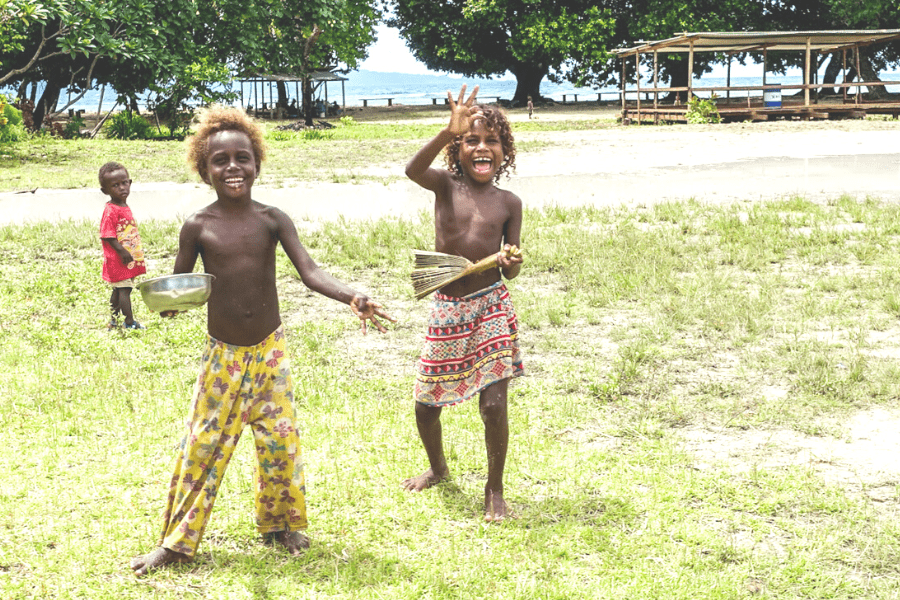
For those planning a trip, check out our 15 essential tips to help you prepare for travel in the Solomon Islands.
Table of Contents
1) Best Time to Visit the Solomon Islands
Any time of year is a good time to travel to Solomon Islands. The weather here is like the local people, warm and welcoming, and it lasts year-round. Seriously though, you can expect an average tropical and warm temperature of 30 ° C during your stay.
That’s not to say that you won’t see any rain, so pack a waterproof jacket just in case!
The dry season in the Solomons Islands is during June and July, perfect for Australians & New Zealanders needing an escape from the winter chills back home. Conversely, November and March are the wettest months to visit the Solomons, so if you’re keen to avoid thunderstorms and rain at all costs, plan your travels to the Solomon Islands outside these months.
2) Visa Free for Most Nationalities
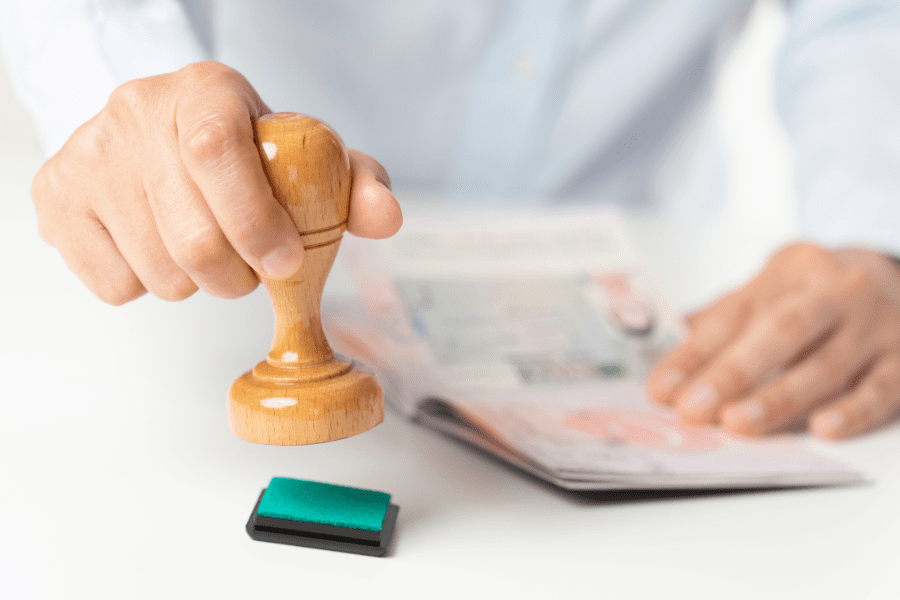
Solomon Islands borders are wide open and good to go! Citizens from Australia, NZ, Canada, the UK, and other Commonwealth countries can enter visa-free (or with an entry permit) for up to 90 days.
The same applies to citizens of the USA and many European countries.
Check all Visa Requirements here
3) COVID-19 travel restrictions have been lifted
All eligible travellers should be up to date with their COVID-19 vaccines. For vaccinated travellers, COVID-19 travel restrictions have been removed.
Read the latest travel advice on smarttraveller.gov.au
You must show your vaccination status at check-in before departure. In addition, we recommend printing a copy of your Covid-19 International Vaccination Certificate and taking it with you.
4) Malaria is a Risk – Bring Antimalarial Medicine
Malaria precautions are essential in the Solomon Islands, so don’t forget to take antimalarial medications.
Depending on which type of medicine you take, you will need to take this medicine several days before your trip, during, and after your trip is over.
We recommend speaking with your doctor or pharmacist for advice on the best antimalarial medicine for the Solomon Islands.
Tip: To avoid mosquito bites, cover up with long-sleeved clothing and long trousers in the evenings, especially after sunset.
Take some good insect repellent with you to the Solomon Islands, we recommend purchasing this repellent that contains DEET.
Then, use it frequently and ensure that your accommodation includes a mosquito net to keep you safe from being bitten while you sleep.
5) There are limited ATMs once you leave the capital city
Before you leave Honiara, consider how much cash you’ll need for your upcoming rustic adventures in paradise. Unfortunately, opportunities are scarce to withdraw local currency from an ATM once you leave the big city. Furthermore, you won’t see any currency exchange places on the way, either.
One of our best tips for Solomon Islands is to visit the city centre in Honiara and get organised with cash first (as the airport doesn’t have an ATM or money exchange facilities).
6) An Underwater Wonderland
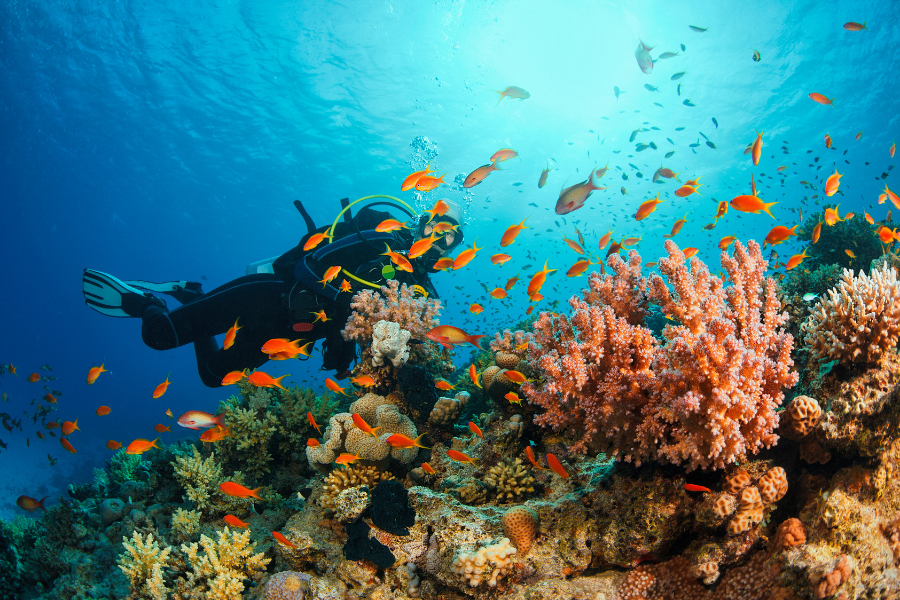
Spectacular marine life could be one of the reasons why you’re interested in visiting the Solomon Islands. If you’ve spoken to friends or others who have spent time here, they would have told you that life beneath the surface here is fascinating!
Travel to the Solomon Islands is perfect for scuba divers, snorkellers, and those who appreciate unspoiled coral reefs, vibrant marine life, and WWII wrecks. You can spot turtles, manta rays, and various sea creatures here.
And you won’t believe the abundance of tropical fish here; it’s no wonder they call it fish soup!
7) Small Aircraft and Banana Boats to Get Around
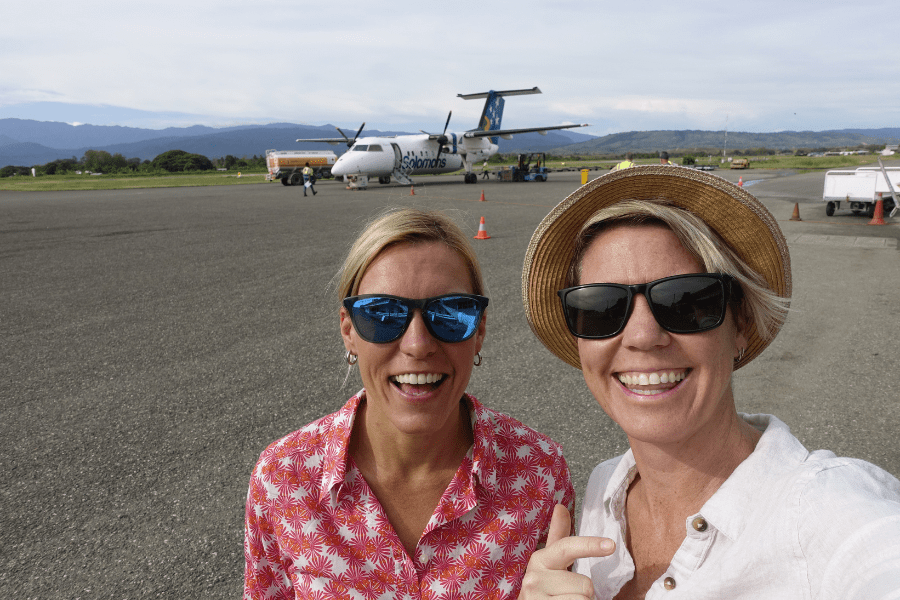
With 990+ islands that make up the country, transport options to get around will be by small aircraft for longer trips between the main islands or banana boats (small speedboats).
View Flight Deals Between Islands Here
8) Eco-Friendly
The Solomon Islands is an eco-friendly destination. That alone is an excellent reason to visit. Rustic accommodation choices on the islands are built with natural materials here.
You’ll notice a thatched roof on your bungalow weaved from coconut branches and leaves.
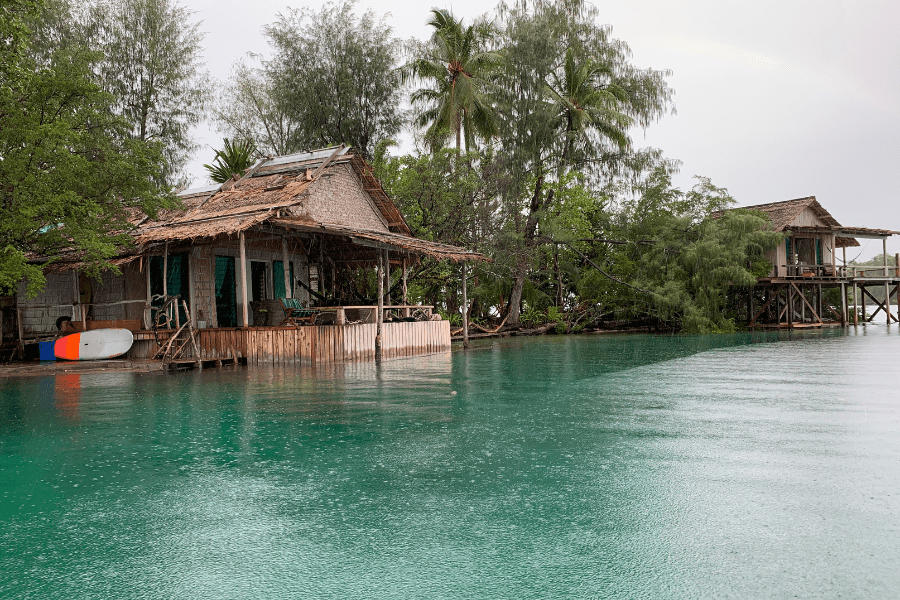
They use driftwood to construct the dreamy balcony hanging over the turquoise lagoons.
And, our favourite thing was watching the local women cleverly braid coconut fronds to make sturdy baskets. These are very convenient for carrying fresh produce purchased from markets.
Large tree leaves are the natural containers for bundling up and packaging fruit and vegetables from the markets in Gizo. The delicious Ngali nuts are placed inside these bundles and tied together with strings pulled from the leaves.
Genius, we thought.
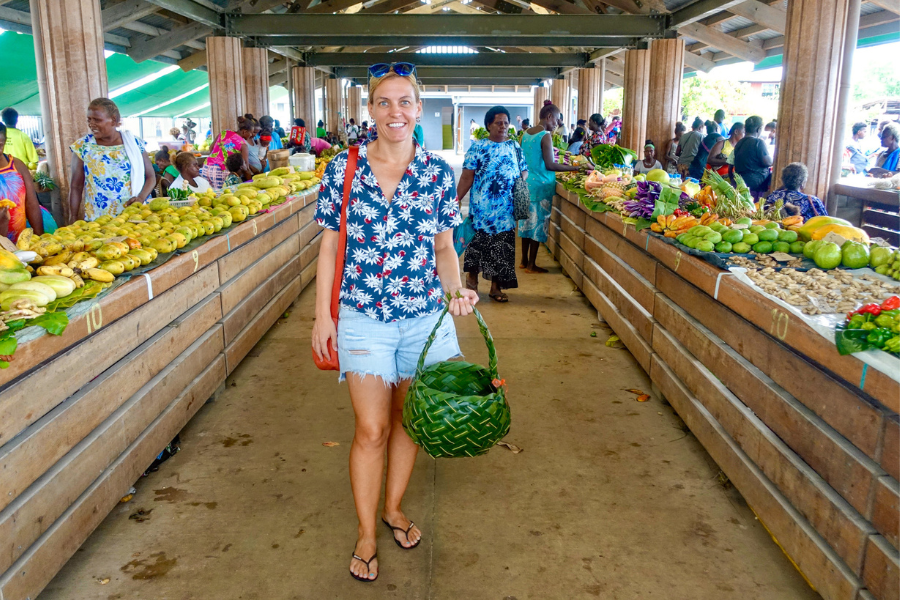
No plastic bags, no fuss. Everything is biodegradable. Most importantly, no damage to the pristine environment in the Solomon Islands that they work hard to preserve.
Subscribe to our newsletter!
Expert travel tips, resources and exclusive discounts worldwide
9) Embrace ‘Island Time’, and you’ll fit right in
If you’ve travelled in other Pacific nations before (or want to try and visit them all in the future with our itinerary suggestions for how to do it), then you already know about ‘Island Time’.
Island time can mean that things take a little longer to get organised. Or, a 10-minute ride truthfully takes 25 mins.
So our tip is to embrace island time and leave your watch in your suitcase; you won’t need it here.
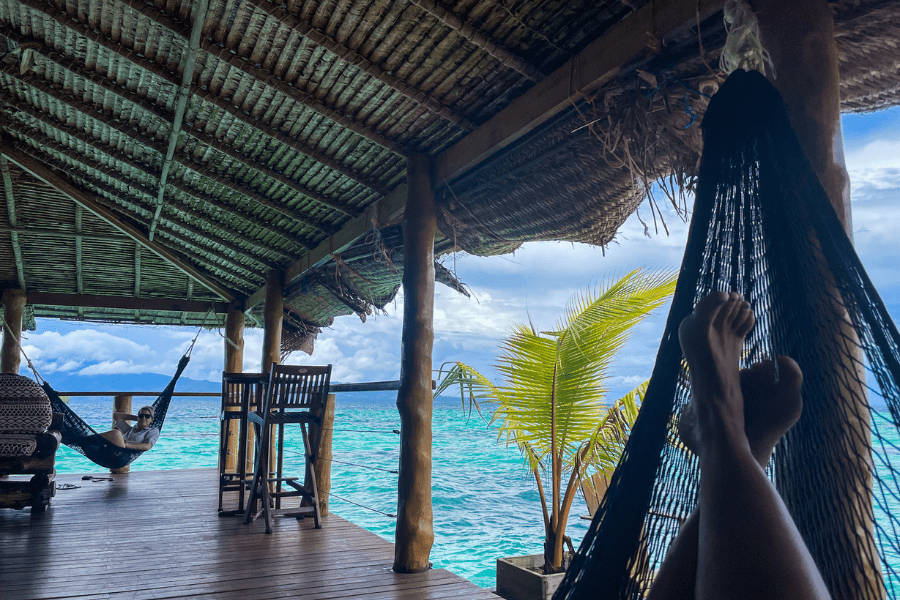
Travel to the Solomon Islands is all about appreciating the natural beauty, listening to birds chirping, and enjoying the salty breeze, while you listen to the sound of the water lapping at the beach.
Sometimes it’s moments like these that bring us the most joy. So, enjoy them while you’re here.
10) Get a local SIM Card in Honiara
Stop by Our Telecom Office in the city centre to pick up a local SIM card. If you wish to stay somewhat connected in the Solomon Islands, the locals tell us this is the provider with the best network coverage available.
We purchased a 5GB SIM card for SBD 50 (AU$9). There is a range of data packs to choose from, and it only takes a few minutes to set it up.
Please bring your passport or ID with you; they’ll need it to register your SIM card.
Make sure you get Travel Insurance before hitting the road. We recommend Heymondo & SafetyWing Travel Insurance.
Click here and get 5% off Heymondo from us!
11) The Perfect Place to Disconnect Online and Reconnect with Nature
Forget about packing your itinerary with endless activities. The Solomon Islands is where you can get away from all the distractions of your busy life back home and replace them with pure nature.
So whether you’re here to go scuba diving, snorkelling, fishing, kayaking, hiking, or just relaxing, tell your friends and family at home that you plan to have a digital detox while in the Solomons; they’ll understand.
12) Seafood is a Staple Food
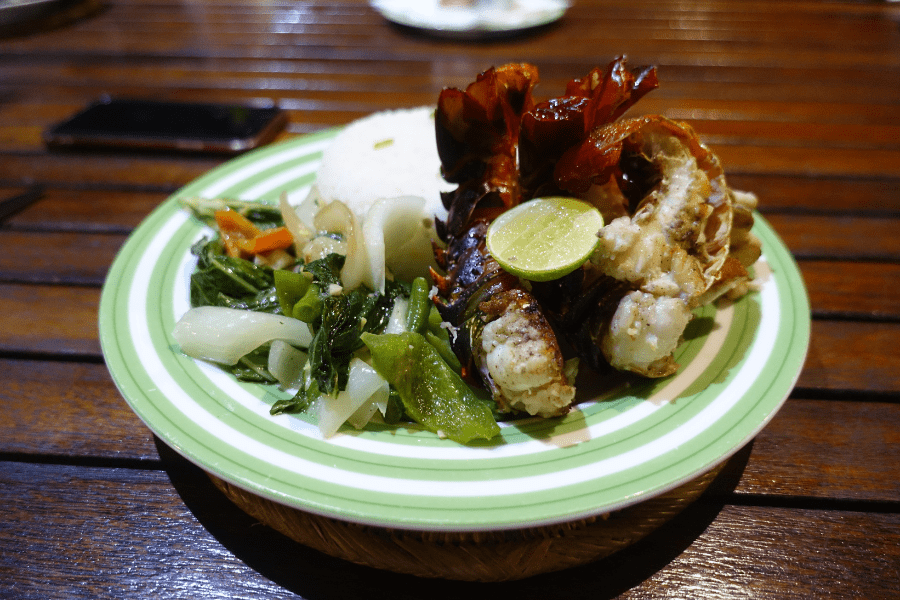
The Solomon Islands, for us as food lovers, was bliss! We loved that fresh seafood dishes filled the lunch and dinner menus during our trip. Lobster is fantastic, with fresh squid and many different kinds of fish.
Trust us; you will love the cuisine here if you’re a seafood lover.
And, if you can handle a beautifully cooked piece of fresh fish on a bed of freshly grilled vegetables for breakfast, then you need to visit Fatboys Resort in Gizo. We stayed here during our visit, and we ate like queens!
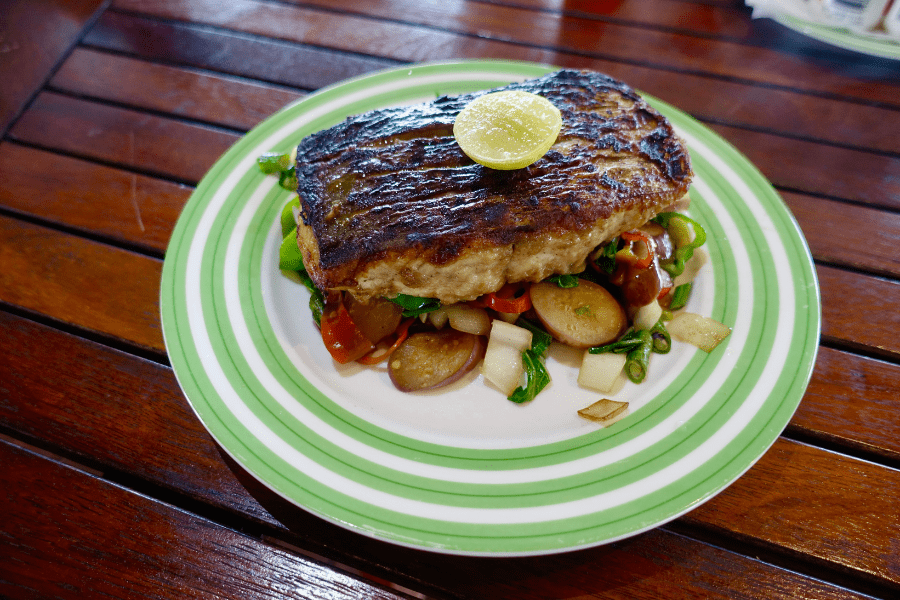
The two women in the kitchen are very talented cooks; we can’t wait to return here again to eat the food.
Fatboys Resort Email Address: [email protected]
13) Tropical Fruit & Root Vegetables are Fantastic
Another bonus for travelling in the Solomon Islands is the abundant tropical fruit and lovely-tasting root vegetables. We were surprised at the clever techniques used to prepare and cook the food here.
You’re sure to discover some new fruits that you’ve never tasted before when you travel to the Solomon Islands.
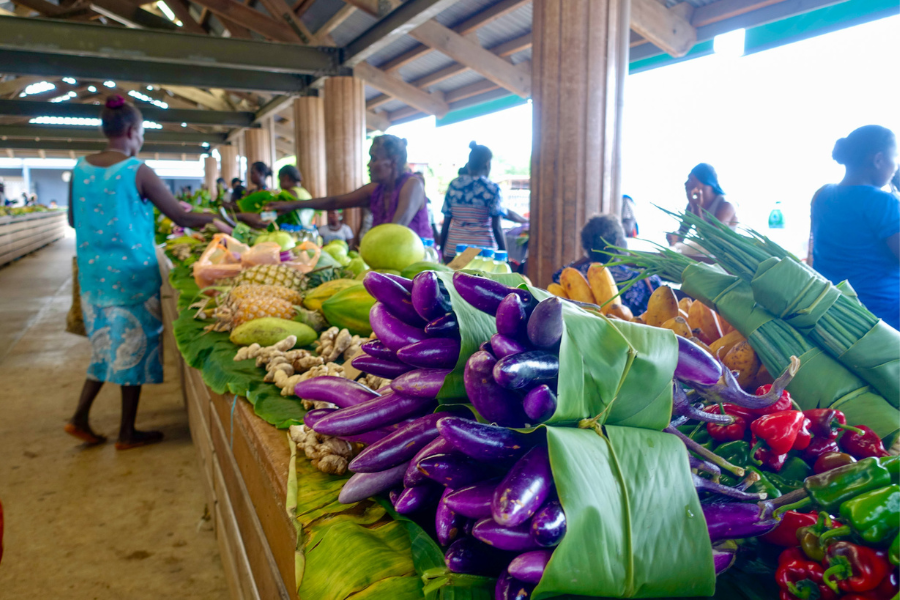
14) Bring a Dry Bag
When it rains in the Solomons, it pours! So you may get quite wet if you’re stuck on a banana boat when the rain rolls in. Sure, our bodies can take getting wet, but your camera gear won’t like it so much.
So if you’re planning on having your camera or iPhone out to capture all the stunning scenery, we recommend bringing a dry bag . Put them inside the dry bag on boat transfers or even if you go hiking.
15) Bring Reef Friendly Sunscreen
When you see the lagoons, the turquoise colours, and the abundance of marine life swimming in them, you’ll understand why wearing reef-friendly sunscreen is essential to help conserve this area for the future.
We used this reef-friendly sunscreen in Palau, as they’ve also worked hard to protect their stunning reef. We swam with thousands of stingless jellyfish in Palau and snorkelled around some unique areas here.
We recommend that you wear reef-friendly sunscreen in the Solomon Islands and invest in a rash vest , a cap , and polarised sunglasses to protect yourself from the sun’s harmful rays.
- 🔥 Hot Tip: Book accommodation in advance on Booking.com
- 🎟 Book your attractions and tickets online: We recommend Viator and GetYourGuide
- 🔋 Stay charged: This Belkin Power Bank is essential!
- 📸 Join a Group Tour: Find some amazing Group Tours here
- ✅ Get Connected with an eSIM: Fast, easy and affordable! View easy eSIM options here
Practical Information About Travelling in the Pacific Islands
If you’re still searching for places to stay, don’t miss our Ultimate Accommodation Guide for the Solomon Islands.
Did you know that we got stranded in Micronesia just before the pandemic? Read our post – Stranded in the Pacific: Cancelled flights, lost luggage, and coronavirus.
Our guide about how to visit every country in the Pacific will give you some useful information about schedules, flights, useful websites, and advice on how to do it.
Don’t miss our Vanuatu Travel Guide and these 5 Foods you Must Try in Vanuatu .
We’ve got many posts about how to save money to travel, and our Top 6 Travel Hacks. We’ve even compiled a list of 20 Jobs that PAY YOU to Travel the World.
And finally, for the best travel advice, tips, websites, and apps we use to travel the world, find them all on our Travel Resources Page .
A big thank you to Tourism Solomons for hosting our stay.
Travel Planning Resources
✈️ Flights : We use Skyscanner to book cheap flights worldwide.
🏨 Accommodation : Booking.com is our preferred platform for booking hotels and accommodation.
🏥 Travel Insurance : We recommend Heymondo ( Get 5% off Heymondo) & SafetyWing
🚌 Transportation : Trainline is the best website to reserve trains. We use Omio to book transport worldwide. For travel in Asia, we use 12Go.
🚘 Car Rental : We use DiscoverCars to book rental cars worldwide.
👫 Group Tours : G Adventures OR compare multi-day tours worldwide with Tourradar .
📸 Day Tours & Trips : GetYourGuide & Viator are the only two platforms you need.
📚 Lonely Planet: The Best Range of Travel Guides & Ebooks , and FREE Shipping! (use code RACHELDAVEY10 for a 10% discount)
🎒 Luggage : Osprey Farpoint 40L Backpack or Samsonite Luggage Range.
🛄 What to Pack: Don’t forget your Universal charger and a good power bank . To help you pack the essentials, here is our ULTIMATE Packing List for all Travellers .
🐶 Become a House Sitter: Join Trusted Housesitters and enjoy FREE accommodation worldwide. Use our invite to receive 25% off your new membership.
💰 Send Money Anywhere: WISE & Revolut are the best online accounts that let you send money, get paid, and spend money internationally. Both are so easy to use and way cheaper than any bank transfer.
📶 Stay Connected: Airalo eSIM allows you to get connected the moment you land at your destination, and you can avoid those expensive data roaming charges. We LOVE this product! Use promo code NOMAD15 for 15% off ALL eSIMs (new Airalo users only) OR use NOMAD10 for 10% off ALL eSIMs (for existing Airalo users)
✅ Check out our Travel Gear and Travel Resources for more valuable tips to save you money!
Tasty Food Adventures
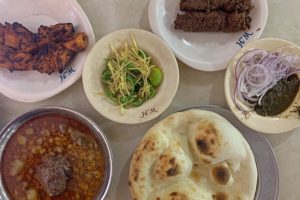
Best Food Tour in Karachi – Foods From Pakistan
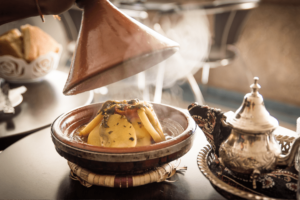
African Food Guide – 10 Best Food Countries in AFRICA
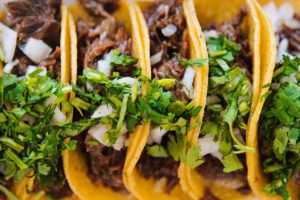
Best Food in Mexico | Top 5 Food Cities
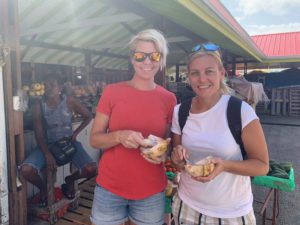
Best Food Tour in Grenada
See all Food Adventure blogs
Expert Travel Guides
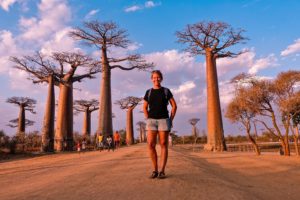
Madagascar in Two Weeks – The Perfect Itinerary 2024
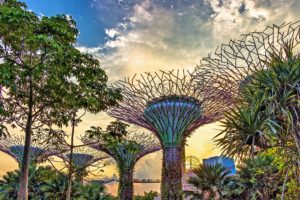
7 Amazing Reasons to Travel to Singapore
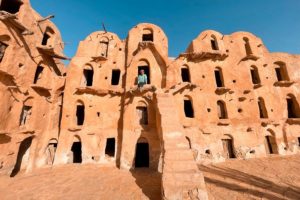
The Perfect 14 Days Itinerary for Tunisia
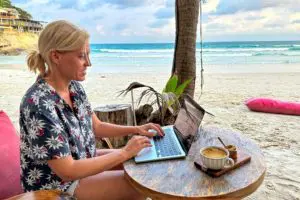
Digital Nomad in Thailand – Ko Pha-Ngan vs Ko Samui
See all our Travel Guides
Trusted Hints & Tips
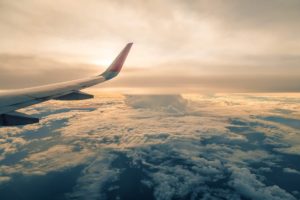
How to Find and Book Cheap Flights – 8 Tips
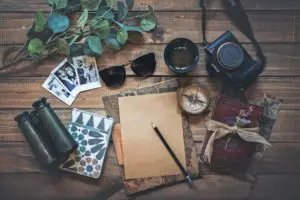
20 Best Gifts for Travellers in 2024
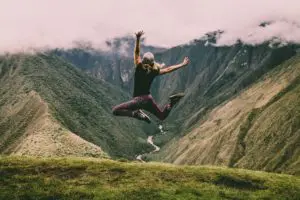
The 2 Best Travel Insurance Companies for 2024
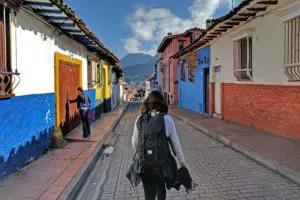
What Travel Insurance Covers & How To Choose The Best One
See all our expert Hints & Tips
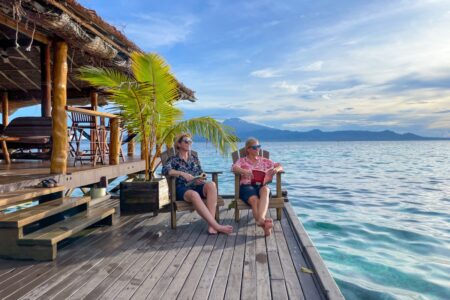
Solomon Islands
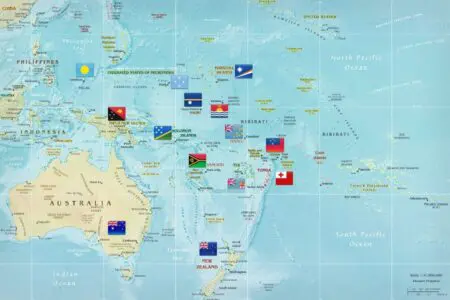
How to Visit Every Country in the Pacific – The Ultimate Guide for 2024
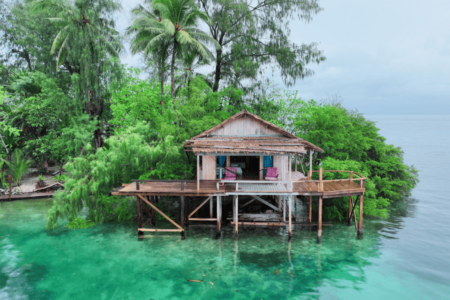
Where to Stay in Solomon Islands – Ultimate Accommodation Guide
1 comment . leave new.
Solomon Islands look amazing, and was not know that you can visit and enjoy all the time of the year. Exactly correct destination around the continental. Thank you..
Leave a Reply Cancel reply
Your email address will not be published. Required fields are marked *
Post Comment
Must-see attractions in Solomon Islands
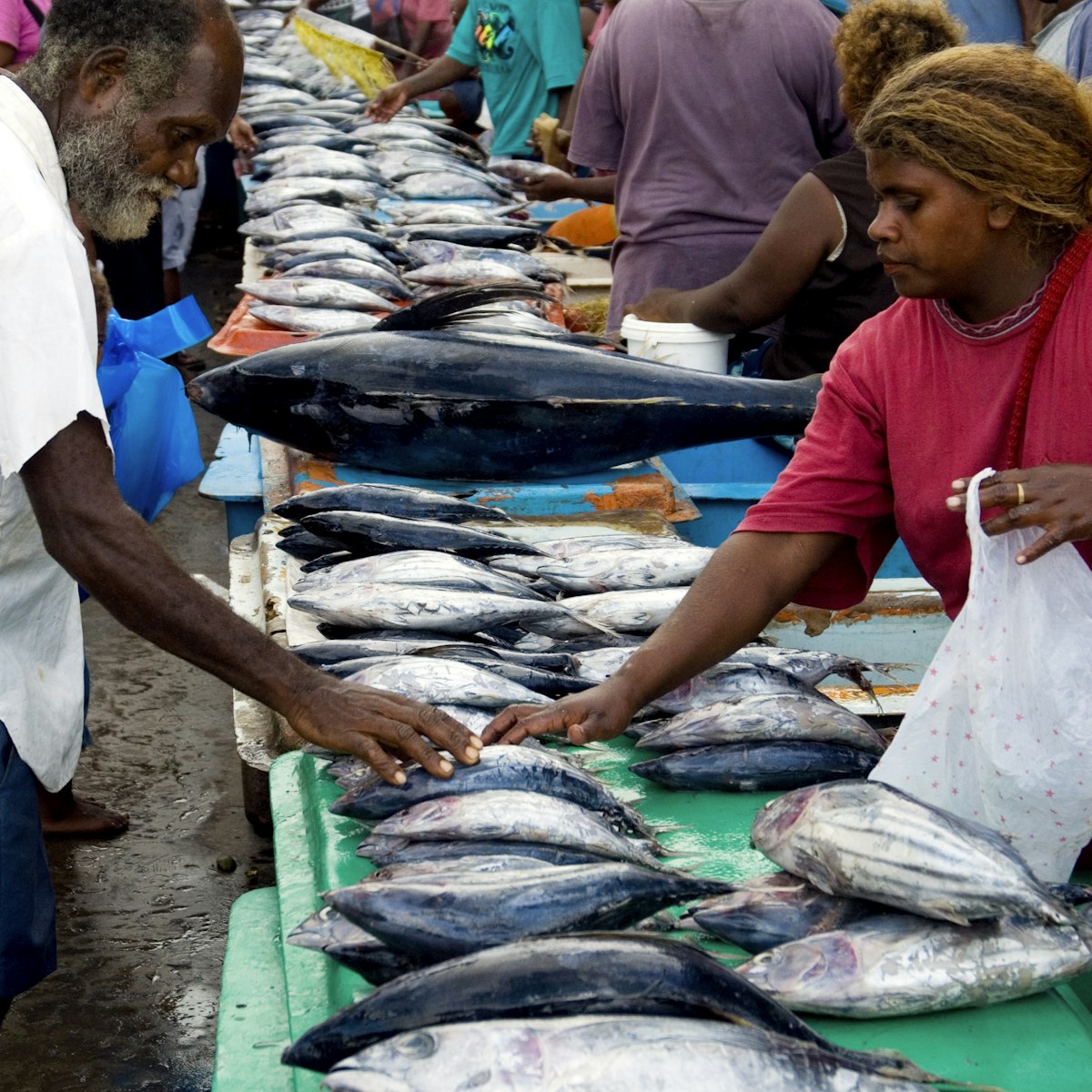
Central Market
While Honiara won't be mistaken for Lagos, the country’s bubbling principal food market covers a whole block between Mendana Ave and the seafront. It has…

Guadalcanal
About 12km west from Honiara, Bonegi is music to the ears of divers, snorkellers and sunbathers. Two large Japanese freighters sank just offshore on the…
Vilu War Museum
About 25km from Honiara, a turn to the south from the coastal road brings you to this great open-air museum. Here there are US, Japanese, Australian,…
Skull Island
Western Province
A 30-minute boat ride from Munda, this tiny islet on Vonavona Lagoon is the final resting place for the skulls of countless vanquished warriors, as well…
US War Memorial
This superb memorial is a five-minute taxi ride from the centre. The well-maintained compound has marble slabs bearing detailed descriptions of battles…
WWII Museum
A few metres before reaching the shore of Tetere Beach, a dirt track to the west leads to 30 or more abandoned amtracks (amphibious troop carriers). Many…
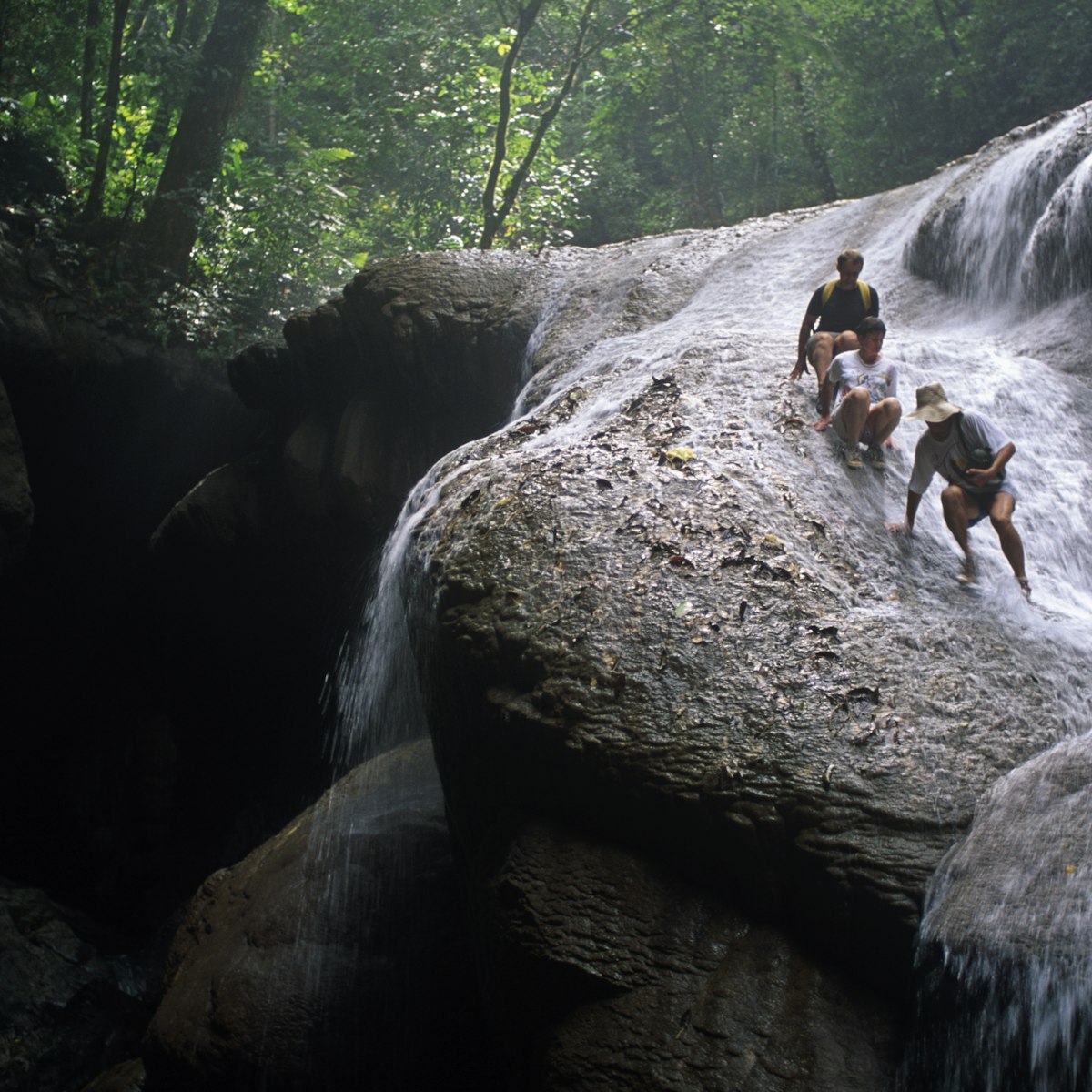
Mataniko Falls
Solomon Islands
One of the star attractions in Honiara’s hinterlands is Mataniko Falls, which feature a spectacular thundering of water down a cliff straight into a…
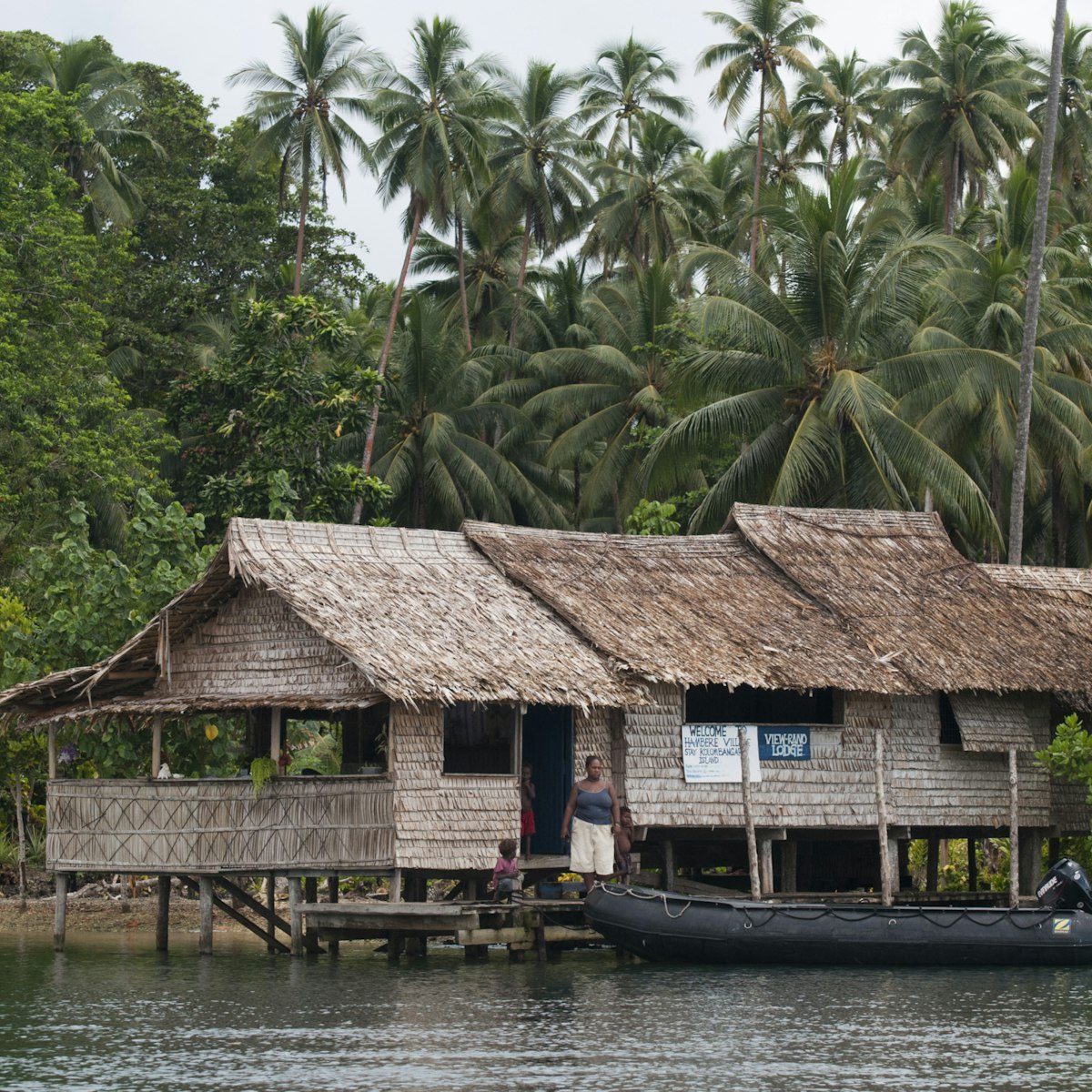
Kolombangara
A perfect cone-shaped volcano that rises to 1770m, Kolombangara looms majestically on the horizon, due east of Ghizo island. It's a two-day hike to the…
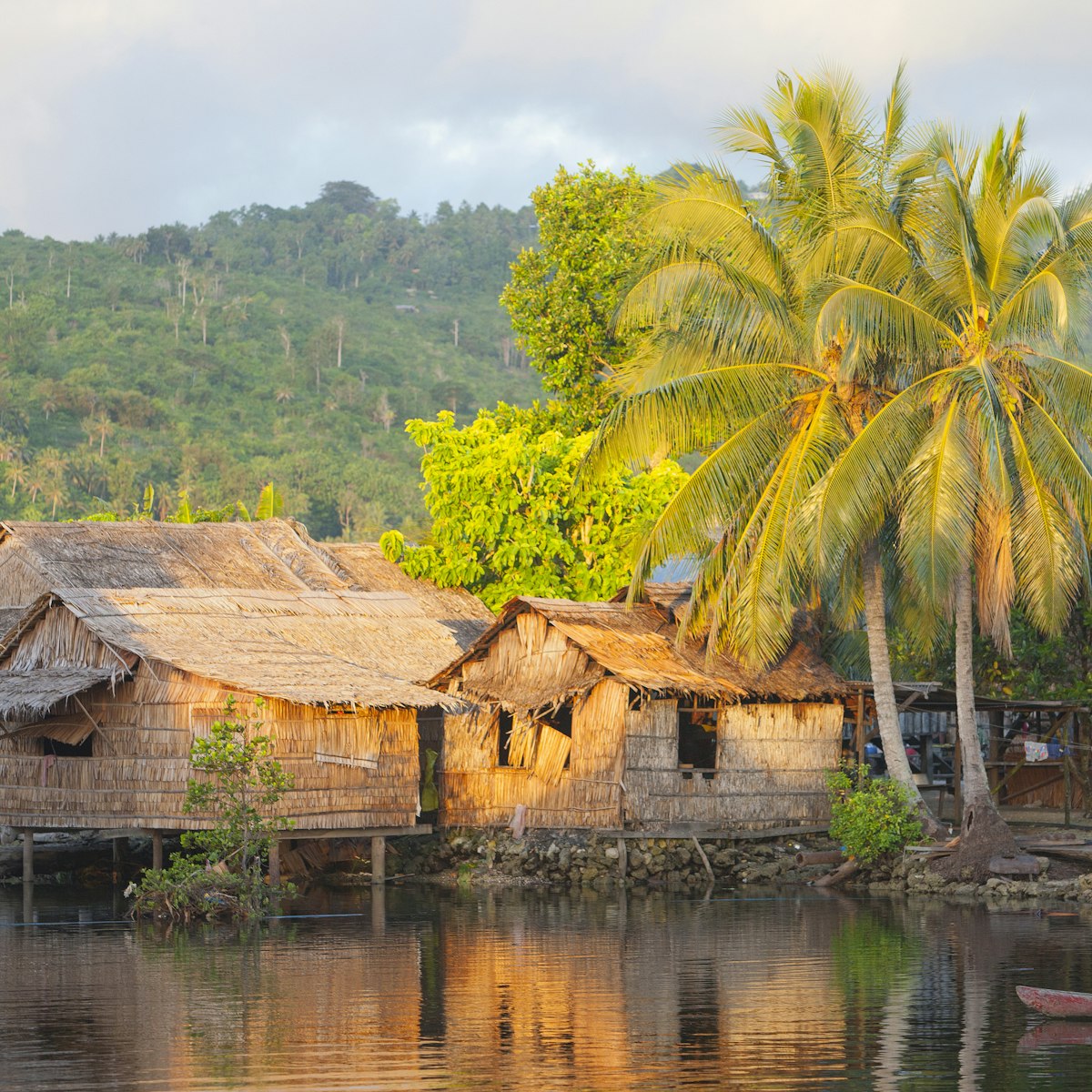
With its traditional-style houses raised on stilts over the shore, the friendly fishing village of Lilisiana, about 1.5km from Auki, is photogenic to boot…
Bloody Ridge
From Henderson airport, a track leads south to this area that's also called Edson's Ridge, after Edson's Raiders. Commanded by Colonel Merritt Edson, they…
Gwaunau'ru
If you want to get a taste of rural life and enjoy superb scenery without travelling too far from Auki, make a beeline for Gwaunaru'u. This sweet little…
Tenaru Waterfalls
At 63m, these waterfalls are spectacular. They are a fairly easy four-hour walk (return) from a tiny settlement about 2km south of Tenaru Village. It's…
Baeroko Bay
The Japanese garrison stationed in Baeroko Bay held the besieging US forces off for five weeks before finally being overwhelmed in August 1943. A silent…
Kwaibala Waterfall
If you need to refresh yourself, make a beeline for Kwaibala Waterfall, about 3km from Auki. This little waterfall drops into a few pools that beg…
Peter Joseph WWII Museum
History buffs should consider this excellent private ‘museum’ of WWII relics. Run by knowledgeable Alphy Barney Paulson, it features lots of utensils,…
Malu'u
The 'north road' leaves Auki and follows the coast from Sisifiu to Sisolo, providing lovely sea views. Long stretches of white-sand beach line the shore…
East of Auki is this haunting cave, with stalagmites, several large subterranean chambers and an underground river. Caveat: it's very slippery – wear…
Solomon Peace Memorial Park
The road to Mt Austen begins in Kukum and climbs up to the historical sites where Japanese troops doggedly resisted the US advance. About 3.5km from the…
Betikama SDA Mission
In Betikama village, this sprawling property comprises a small WWII museum with an outdoor collection of salvaged material (mostly US aircraft) as well as…
National Museum
This modest museum – there is only one room – features interesting displays and old photographs on traditional dance, body ornamentation, currency,…
Henderson Airport Memorial Gardens
A small memorial outside the airport entrance honours US forces and their Pacific islander allies. In front is a Japanese anti-aircraft gun. About 100m to…
White River Village
Betel nut, anyone? The friendly Gilbertese settlement called White River Village about four km west of the centre is mostly famed for its betel nut market…
Sherman Tank
Just across the road from Bonegi beach, there’s a bush track that heads inland and runs about 400m to a rusty US Sherman tank called Jezebel which was…
Mount Austen
The clearing at the summit of Mt Austen (410m) offers a marvellous view northeas over Henderson. Americans in WWII dubbed this spot Grassy Knoll. There’s…
About 40km from Honiara is this timeless hamlet blessed with a majestic setting – it's wedged between the sea and a soaring, velvet-green hill. Soak up…
On the northern outskirts of Auki, this lake is a nature-lovers' paradise, home to colonies of seabirds. It can be explored in a dug-out. You might be…
National Parliament
The conical-shaped concrete building that’s perched on the hill above Hibiscus Ave is the National Parliament. Inside, the dome boasts a rich tapestry of…
Kohinggo Island
On Kohinggo Island, there is a wrecked US Sherman tank at Tahitu on the northern shore. It was lost in action in September 1943 when US marines overran a…
Holy Cross Catholic Cathedral
Honiara's most prominent religious building is this cathedral perched on a hill to the east of the centre. Visitors are welcome to attend, but make sure…
Lilisiana Beach
Lilisiana's peaceful beach is a narrow, long, golden sand spit beside coral shallows. It's immediately to the north of the village and is the closest one…
This 35km-long lagoon contains more than 60 artificial islands. There's no formal accommodation, but you can arrange your stay in a village; ask the chief.
WWII Japanese relics are scattered around the island. Vila Point was an important WWII Japanese base and you can still see guns in the bush.
Popular with locals and expats at weekends, this beach has black sand and is OK for swimming and bathing.
Botanical Gardens
These lovely grounds on the hills located above the city provide a green haven for nature lovers.
Turtle Beach
Turtle Beach is an appealing strip of white coral sand fringed with coconut trees.
St Stephen Cathedral
The cathedral is set back from the main road.
More destinations you need to see
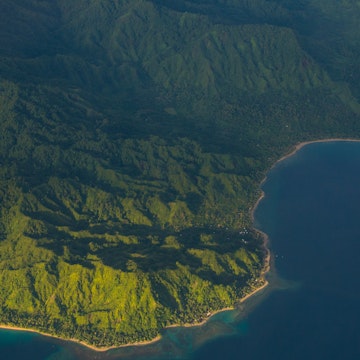
Top Solomon Islands Attractions
Things to do in solomon islands, explore popular experiences, popular cities in solomon islands.
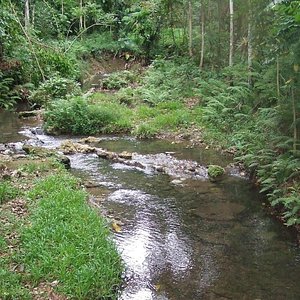
Top Attractions in Solomon Islands
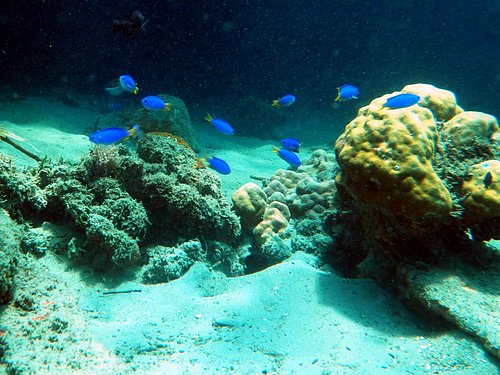
What travelers are saying
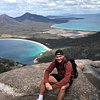
Situation in Haiti April 5, 2024
U.s. citizens in haiti, update january 10, 2024, information for u.s. citizens in the middle east.
- Travel Advisories |
- Contact Us |
- MyTravelGov |
Find U.S. Embassies & Consulates
Travel.state.gov, congressional liaison, special issuance agency, u.s. passports, international travel, intercountry adoption, international parental child abduction, records and authentications, popular links, travel advisories, mytravelgov, stay connected, legal resources, legal information, info for u.s. law enforcement, replace or certify documents.
Before You Go
Learn About Your Destination
While Abroad
Emergencies
Share this page:
Solomon Islands
Travel Advisory July 24, 2023
Solomon islands - level 2: exercise increased caution.
Reissued with obsolete COVID-19 page links removed.
Exercise increased caution traveling to Solomon Islands due to low COVID-19 vaccination rates.
Read the country information page for additional information on travel to Solomon Islands.
CDC-compliant testing for COVID-19 is either not available or the results are not reliably available within one calendar day of testing. The COVID-19 vaccination rate within Solomon Islands is comparatively much lower than other countries in the region.
If you decide to travel to Solomon Islands:
- Enroll in the Smart Traveler Enrollment Program (STEP) to receive Alerts and make it easier to locate you in an emergency.
- Follow the Department of State on Facebook and Twitter .
- Review the Country Security Report for Solomon Islands.
- Visit the CDC page for the latest Travel Health Information related to your travel.
- Prepare a contingency plan for emergency situations. Review the Traveler’s Checklist .
Embassy Message
View Alerts and Messages Archive
Quick Facts
Six months.
One page per stamp.
All travelers must be fully vaccinated against COVID-19. Proof of measles vaccination required for travelers from measles-affected countries. See details in the Health section below.
Currency equivalent to 50,000 SBD or more must be declared.
Embassies and Consulates
U.S. Embassy Honiara Blums Building, by the Port of Honiara Honiara, Guadalcanal Solomon Islands
NOTE: The U.S. Embassy in Honiara does not currently provide routine or emergency services to U.S. citizens. Such services are provided by U.S. Embassy Port Moresby, Papua New Guinea.
U.S. Embassy Port Moresby Harbour City Road, Konedobu Port Moresby, Papua New Guinea Mailing Address: PO Box 1492, Port Moresby, N.C.D. 121, Papua New Guinea Telephone: +(675) 308 9100 Emergency After-Hours Telephone: +(675) 7200-9439 Email: [email protected]
Destination Description
Learn about the U.S. relationship to countries around the world.
Entry, Exit and Visa Requirements
You may obtain a visitor permit for 30 days upon arrival at Henderson International Airport in Honiara, and you may enter any number of times as long as your total time in Solomon Islands stay does not exceed 90 days in a 12-month period. If you arrive on a one-way airline ticket, you must have documentation stating your business, including a work permit if you plan to work in Solomon Islands. In all cases, you must also have a valid passport with at least six months remaining validity, an onward or return ticket, and proof of sufficient funds.
If you plan to arrive or depart on a yacht, apply for a visitor’s permit by visiting the Solomon Island Immigration website. Do not attempt to enter the country via its sea borders without proper documentation and approval.
For more information about entry requirements, contact the Permanent Mission of Solomon Islands to the United Nations at 800 Second Avenue, Suite 400L, New York, NY 10017-4709; Tel: (212) 599-6192 or 6193 or visit the Permanent Mission of Solomon Islands to the United Nations website . If you anticipate transiting or visiting Australia, you should obtain an Electronic Travel Authorization ( ETA) or Subclass 771 visa for Australia before leaving the United States.
Some HIV/AIDS entry restrictions exist for visitors to and foreign residents of the Solomon Islands. According to the Solomon Islands Immigration Act, an immigration officer can bar you from entering the country or deport you if you refuse to submit to an examination by a government medical officer after being required to do so. Verify this information with the Permanent Mission of Solomon Islands to the United Nations before you travel.
Find information on dual nationality , prevention of international child abduction and customs regulations on our websites.
Safety and Security
Crime: Petty theft is common in some parts of Solomon Islands. Guided or group tours are generally safer than traveling alone. Landowners may demand money if you enter their land without permission. Home invasions, burglaries, and violent crime typically increase in the months approaching the Christmas holiday season. Yacht-related robberies can occur, usually at night while occupants are asleep. Most criminals are not deterred even when boats are anchored offshore. Visiting yachts should be wary of allowing strangers onboard and boaters should take precautions when leaving the vessel to go ashore.
General Safety: You should travel in groups for safety and security, especially in the evening or at night. All water activities should be done in groups. Swimmers should be aware of saltwater crocodiles that can be found at the mouths of rivers emptying into the sea.
Demonstrations occur frequently. They may take place in response to political or economic issues, on politically significant holidays, during international events, or during other cultural events that attract large crowds.
- Even demonstrations intended to be peaceful can turn confrontational and possibly become violent.
- Avoid areas around protests and demonstrations.
- Check local media for updates and traffic advisories.
International Financial Scams: See the Department of State and the FBI pages for information.
Victims of Crime: U.S. citizen victims of sexual assault are encouraged to contact the U.S. Consular Agency for assistance. The Consular Agency is located at Commonwealth St. Point Cruz Honiara and can be reached at (+677) 23426 or (+677) 74 94731 or (+677) 74 98367
Report crimes to the local police using the local emergency number (+677) 999. You may also contact the U.S. Embassy in Port Moresby, Papua New Guinea at (+675) 308 2100. Remember that local authorities are responsible for investigating and prosecuting crime.
See our webpage on help for U.S. victims of crime overseas .
- Help you find appropriate medical care
- Assist you in reporting a crime to the police
- Contact relatives or friends with your written consent
- Provide general information regarding the victim’s role during the local investigation and following its conclusion
- Provide a list of local attorneys
- Provide our information on victim’s compensation programs in the U.S.
- Provide an emergency loan for repatriation to the United States and/or limited medical support in cases of destitution
- Help you find accommodation and arrange flights home
- Replace a stolen or lost passport
Domestic Violence: U.S. citizen victims of domestic violence should contact the Consular Agency in Honiara and/or the U.S. Embassy in Port Moresby, Papua New Guinea for assistance.
Tourism: The tourism industry is unevenly regulated, and safety inspections for equipment and facilities do not commonly occur. Hazardous areas/activities are not always identified with appropriate signage, and staff may not be trained or certified either by the host government or by recognized authorities in the field. In the event of an injury, appropriate medical treatment is typically available only in/near major cities. First responders are generally unable to access areas outside of major cities and to provide urgent medical treatment. U.S. citizens are encouraged to purchase medical evacuation insurance .
Local Laws & Special Circumstances
Criminal Penalties: You are subject to local laws. If you violate local laws, even unknowingly, you may be expelled, arrested, or imprisoned. Individuals establishing a business or practicing a profession that requires additional permits or licensing should seek information from the competent local authorities, prior to practicing or operating a business.
Local customary law is still observed in Solomon Islands, especially in rural areas. Disputes based in customary law are generally resolved through a compensation-based settlement mediated by law enforcement or local government officials. Some laws are also prosecutable in the United States, regardless of local law. For examples, see our website on crimes against minors abroad and the Department of Justice website.
Arrest Notification: If you are arrested or detained, ask police or prison officials to notify the U.S. Embassy or U.S. Consular Agency immediately. See our webpage for further information.
Customs: The Solomon Islands' customs authorities enforce strict regulations for importing or exporting firearms and ammunition, pornography, and certain prescription drugs. Other items may be subject to quarantine regulations or import duty. The Solomon Islands' government prohibits the export of military artifacts from World War II. Contact the Solomon Islands' Mission to the United Nations for specific information regarding customs requirements.
Unexploded Ordnance: Unexploded World War II ordnance remains in the Solomon Islands, particularly in the areas of Hell’s Point, the ridges behind Honiara, the New Georgia group of islands, Tulagi, and the Russel Islands. Be alert when hiking, boating, or diving. Be vigilant for ordnance and obey all posted warnings.
Natural Disasters: Solomon Islands is subject to earthquakes, volcanic eruptions, and sudden tidal movements (tsunamis). The Pacific cyclone season extends from November through March. For information about crisis preparedness, see our webpage on Crisis and Disaster Abroad: Be Ready , the Department of Homeland Security , and the CDC pages.
Faith-Based Travelers: See the following webpages for details:
- Faith-Based Travel Information
- International Religious Freedom Report – see country reports
- Human Rights Report – see country reports
- Hajj Fact Sheet for Travelers
- Best Practices for Volunteering Abroad
LGBTI Travelers: Same sex acts are illegal in the Solomon Islands and can carry long jail sentences. See our LGBTI Travel Information page and section 6 of our Human Rights report for further details.
Travelers with Disabilities: The law in the Solomon Islands does not prohibit discrimination against persons with physical, sensory, intellectual or mental disabilities. Social acceptance of persons with disabilities in public is not as prevalent as in the United States. Expect accessibility to be limited in public transportation, lodging, communication/information, and general infrastructure. The availability of rental, repair, replacement parts for aids/equipment/devices is extremely limited or non-existent. Service providers, such as sign language interpreters or personal assistants may be available. Contact the U.S. Consular Agency in Honiara to receive a list of providers.
Students: See our Students Abroad page and FBI travel tips .
Women Travelers: See our travel tips for Women Travelers .
For emergency services in Solomon Islands, call St. Johns Ambulance service (+677) 38160 or (+677) 73 98566.
Ambulance services are:
- Generally available in Honiara but training and availability of emergency responders may be below U.S. standards.
- Not present throughout the rest of the country or are unreliable except in Honiara.
- May not be equipped with state-of-the-art medical equipment.
- In areas outside Honiara, injured or seriously ill travelers may prefer to take a taxi, private vehicle, water-borne transportation, or private foreign or local air ambulance service to the nearest major hospital rather than wait for an ambulance.
We do not pay medical bills. Be aware that U.S. Medicare/Medicaid does not apply overseas. Most hospitals and doctors overseas do not accept U.S. health insurance.
Medical Insurance: Make sure your health insurance plan provides coverage overseas. Most care providers overseas only accept cash payments. See our webpage for more information on insurance overseas. Visit the U.S. Centers for Disease Control and Prevention for more information on type of insurance you should consider before you travel overseas.
We strongly recommend supplemental insurance to cover medical evacuation, as medical evacuation to Australia, New Zealand, or the United States can cost thousands of dollars.
Always carry your prescription medication in original packaging, along with your doctor’s prescription.
Vaccinations: Be up-to-date on all vaccinations recommended by the U.S. Centers for Disease Control and Prevention.
Travelers arriving from measles-affected countries must provide proof of measles vaccination administered no less than three weeks prior to arrival in Solomon Islands. For the purposes of this requirement, measles-affected countries include American Samoa, Samoa, Fiji, Tonga, Kiribati, Australia, New Zealand, Papua New Guinea, and Philippines. This requirement does not apply to infants under six months of age, pregnant women, or to other travelers with documentary evidence of contraindications to measles vaccine administration.
Further health information:
- World Health Organization
- U.S. Centers for Disease Control and Prevention (CDC)
Air Quality: Visit AirNow Department of State for information on air quality at U.S. Embassies and Consulates.
The air quality varies considerably and fluctuates with the seasons. It is typically at its worst in the dry season. People at the greatest risk from particle pollution exposure include:
- Infants, children, and teens
- People over 65 years of age
- People with lung disease such as asthma and chronic obstructive pulmonary disease (COPD), which includes chronic bronchitis and emphysema;
- People with heart disease or diabetes
- People who work or are active outdoors
Contact the U.S. Consular Agency in Honiara for a list of doctors and hospitals. We do not endorse or recommend any specific medical provider or clinic.
Health facilities in general:
- Adequate health facilities are available in Honiara and Auki, but health care may be below U.S. standards.
- Public medical clinics may lack basic resources and supplies.
- Medical staff may only speak basic English or Pidgin English.
- Psychological and psychiatric services are limited, with hospital-based care only available through government institutions in Auki.
- We strongly recommend supplemental insurance to cover medical evacuation in the event of unforeseen medical complications.
- Legal options in cases of malpractice are extremely limited or non-existent in Solomon Islands.
- The nearest health facilities that offer comprehensive health care at U.S. standards are in Australia and New Zealand.
- Contact the U.S. Consular Agency in Honiara for a list of doctors and hospitals. We do not endorse or recommend any specific medical provider or clinic.
Specialized care for scuba divers:
- The hyperbaric recompression chamber in Honiara is the only chamber in Solomon Islands and is operated by on-call volunteers.
- Medical complications resulting from scuba diving accidents may require evacuation to Australia or New Zealand.
Pharmaceuticals
- Exercise caution when purchasing medication overseas. Pharmaceuticals, both over the counter and requiring prescription in the United States, are often readily available for purchase with little controls. Counterfeit medication is common and may prove to be ineffective, the wrong strength, or contain dangerous ingredients. Medication should be purchased in consultation with a medical professional and from reputable establishments. Specialized medicines may need to be ordered from Australia and may take weeks to arrive.
- U.S. Customs and Border Protection and the Food and Drug Administration are responsible for rules governing the transport of medication back to the United States. Medication purchased abroad must meet their requirements to be legally brought back into the United States. Medication should be for personal use and must be approved for usage in the United States. Please visit the U.S. Customs and Border Protection and the Food and Drug Administration websites for more information.
Water Quality
- In many areas, tap water is not potable. Bottled water and beverages are generally safe, although you should be aware that many restaurants and hotels serve tap water unless bottled water is specifically requested. Be aware that ice for drinks may be made using tap water.
Adventure Travel
- Visit the U.S. Centers for Disease Control and Prevention website for more information about Adventure Travel .
General Health Language
The following diseases are prevalent:
- Use the U.S. Centers for Disease Control and Prevention recommended mosquito repellents and sleep under insecticide-impregnated mosquito nets. Chemoprophylaxis is recommended for all travelers even for short stays.
- HIV/AIDS: The prevalence of HIV/AIDS in Solomon Islands is relatively low and stable. The National Referral Hospital in Honiara can provide HIV/AIDS antiretroviral therapy and perform HIV/AIDS tests.
- There are often shortages of medicines and medical supplies throughout Solomon Islands. Local pharmacies are generally equipped with basis medicines but not all pharmacies are reputable.
Visit the U.S. Centers for Disease Control and Prevention website for more information about Resources for Travelers regarding specific issues in Solomon Islands.
Travel and Transportation
Road Conditions and Safety: Traffic in Solomon Islands moves on the left side of the road. Paved roads are found only in and around Honiara. These two-lane paved roads are poorly marked and have many potholes. Roads are not well lit at night. The remaining roads in Solomon Islands are made of coral, gravel, or are dirt tracks.
- Be careful when driving off main roads to avoid trespassing on communal land.
- Vehicles are frequently poorly maintained.
- Traffic jams are common in Honiara.
- Pedestrians often walk on the roads and may not consider vehicle traffic.
- Drivers have little regard for traffic regulations and do not follow safe driving practices.
Traffic Laws: If you are involved in a road accident, local law requires you to stop and stay at the scene until the police arrive. If a crowd gathers after an accident and you feel threatened, proceed directly to a police station. Incidents of individuals being harmed by crowds as a result of a traffic accident are rare.
Most local drivers are not well trained and do not follow basic traffic laws. Be aware of drivers under the influence of alcohol, of pedestrians who are not aware of traffic, and of children running out into the road. Police control of traffic is limited, even in Honiara. When driving be alert at all times. Street signs and traffic lights are scarce or may not be in working order.
Public Transportation: Taxi services in Honiara and Auki are widely available and are generally safe. Public bus and mini-bus services are also available, but safety standards may vary widely and information on routes may not be available in a published form. Incidences of petty theft are more frequent on public transportation. While greater government regulation and oversight has led to an increase in safety of ferry services, be aware that safety standards may still vary widely and amenities onboard are often extremely limited.
See our Road Safety page for more information. For more information, visit the website of Solomon Islands’ national tourist office or contact the traffic police at (+677) 25567 or (+677) 22336.
Aviation Safety Oversight: As there is no direct commercial air service to the United States by carriers registered in the Solomon Islands, the U.S. Federal Aviation Administration (FAA) has not assessed the government of Solomon Islands’ Civil Aviation Authority for compliance with International Civil Aviation Organization (ICAO) aviation safety standards. Further information may be found on the FAA’s safety assessment page .
Maritime Travel: Mariners planning travel to the Solomon Islands should also check for U.S. maritime advisories and alerts . Information may also be posted to the U.S. Coast Guard homeport website , and the NGA broadcast warnings .

For additional travel information
- Enroll in the Smart Traveler Enrollment Program (STEP) to receive security messages and make it easier to locate you in an emergency.
- Call us in Washington, D.C. at 1-888-407-4747 (toll-free in the United States and Canada) or 1-202-501-4444 (from all other countries) from 8:00 a.m. to 8:00 p.m., Eastern Standard Time, Monday through Friday (except U.S. federal holidays).
- See the State Department’s travel website for the Worldwide Caution and Travel Advisories .
- Follow us on Twitter and Facebook .
- See traveling safely abroad for useful travel tips.
For additional IPCA-related information, please see the International Child Abduction Prevention and Return Act (ICAPRA) report.
Travel Advisory Levels
Assistance for u.s. citizens, solomon islands map, learn about your destination, enroll in step.

Subscribe to get up-to-date safety and security information and help us reach you in an emergency abroad.
Recommended Web Browsers: Microsoft Edge or Google Chrome.
Make two copies of all of your travel documents in case of emergency, and leave one with a trusted friend or relative.
Afghanistan
Antigua and Barbuda
Bonaire, Sint Eustatius, and Saba
Bosnia and Herzegovina
British Virgin Islands
Burkina Faso
Burma (Myanmar)
Cayman Islands
Central African Republic
Cote d Ivoire
Curaçao
Czech Republic
Democratic Republic of the Congo
Dominican Republic
El Salvador
Equatorial Guinea
Eswatini (Swaziland)
Falkland Islands
France (includes Monaco)
French Guiana
French Polynesia
French West Indies
Guadeloupe, Martinique, Saint Martin, and Saint Barthélemy (French West Indies)
Guinea-Bissau
Isle of Man
Israel, The West Bank and Gaza
Liechtenstein
Marshall Islands
Netherlands
New Caledonia
New Zealand
North Korea (Democratic People's Republic of Korea)
Papua New Guinea
Philippines
Republic of North Macedonia
Republic of the Congo
Saint Kitts and Nevis
Saint Lucia
Saint Vincent and the Grenadines
Sao Tome and Principe
Saudi Arabia
Sierra Leone
Sint Maarten
South Africa
South Korea
South Sudan
Switzerland
The Bahamas
Timor-Leste
Trinidad and Tobago
Turkmenistan
Turks and Caicos Islands
United Arab Emirates
United Kingdom
Vatican City (Holy See)
External Link
You are about to leave travel.state.gov for an external website that is not maintained by the U.S. Department of State.
Links to external websites are provided as a convenience and should not be construed as an endorsement by the U.S. Department of State of the views or products contained therein. If you wish to remain on travel.state.gov, click the "cancel" message.
You are about to visit:
- Visit Our Corporate Site

- Self-Contained
- Birdwatching
- WWII History
- Scuba Diving
- How to Get Around
How to Get Here
- What to bring
- Travel Tips
- Visa requirements
- Itineraries
- History of the Solomons
- People & Culture
- Flora & Fauna
- Music & Art
- Under the Water
- Untold Stories of the Solomons
- Media Articles
- Press Release
- Solomon Islands International Visitors Survey
- Travel Agents Specialist Program
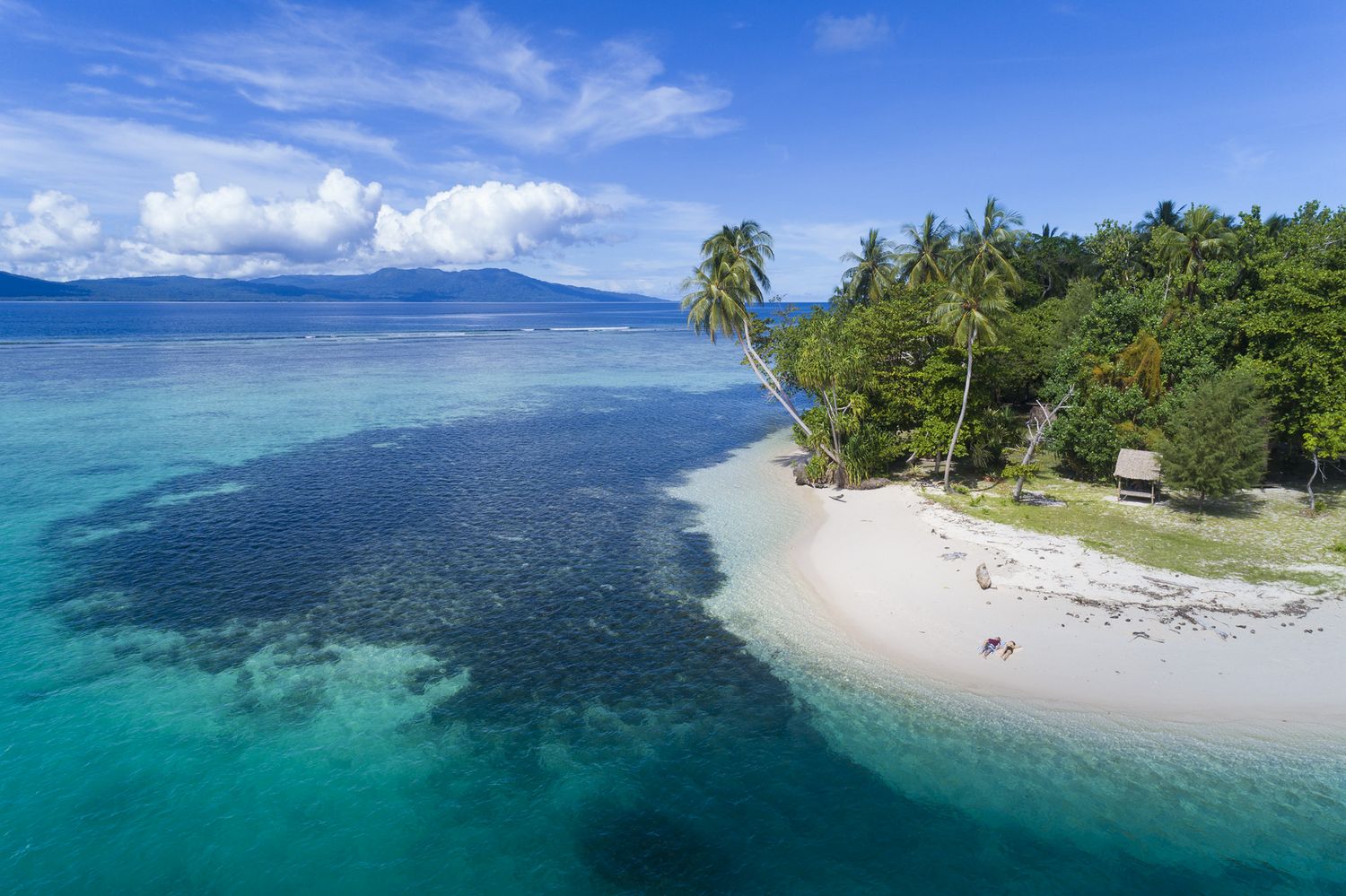
The Solomon Islands are just a three hour flight from Brisbane, Australia but provide a unique opportunity to experience a genuine wild and unspoiled South Sea paradise – a well-kept secret and something totally original.
Honiara International Airport on the island of Guadalcanal is the main port of arrival. Munda in the Western Province also has a weekly international flight from Brisbane, Australia.
Five airlines currently provide regular scheduled services into Honiara. Solomon Airlines , Virgin Australia, Fiji Airways (formerly Air Pacific), Air Niugini and Air Vanuatu all provide international flights to the Solomons. Qantas is a codeshare partner to Solomon Airlines.
There are direct flights connecting to Honiara from Brisbane (Australia), Nadi (Fiji), Port Moresby (Papua New Guinea) and Port Vila (Vanuatu).
Solomon Airlines is the national carrier and flies to Honiara from Brisbane four times per week, and provides weekly flights from Nadi, Port Vila and Port Moresby. The Port Moresby service is operated in conjunction with Air Niugini and Air Vanuatu as a codeshare agreement flying an Air Niugini aircraft. Virgin Australia also fly direct from Brisbane.
From North America, most travellers fly through Los Angeles and either Brisbane or Nadi. Those travelling from European countries will most commonly fly via Brisbane with many choosing to stop over in countries such as Singapore, Hong Kong, Thailand or Dubai.
Check with the airlines for the most current and detailed flight information.
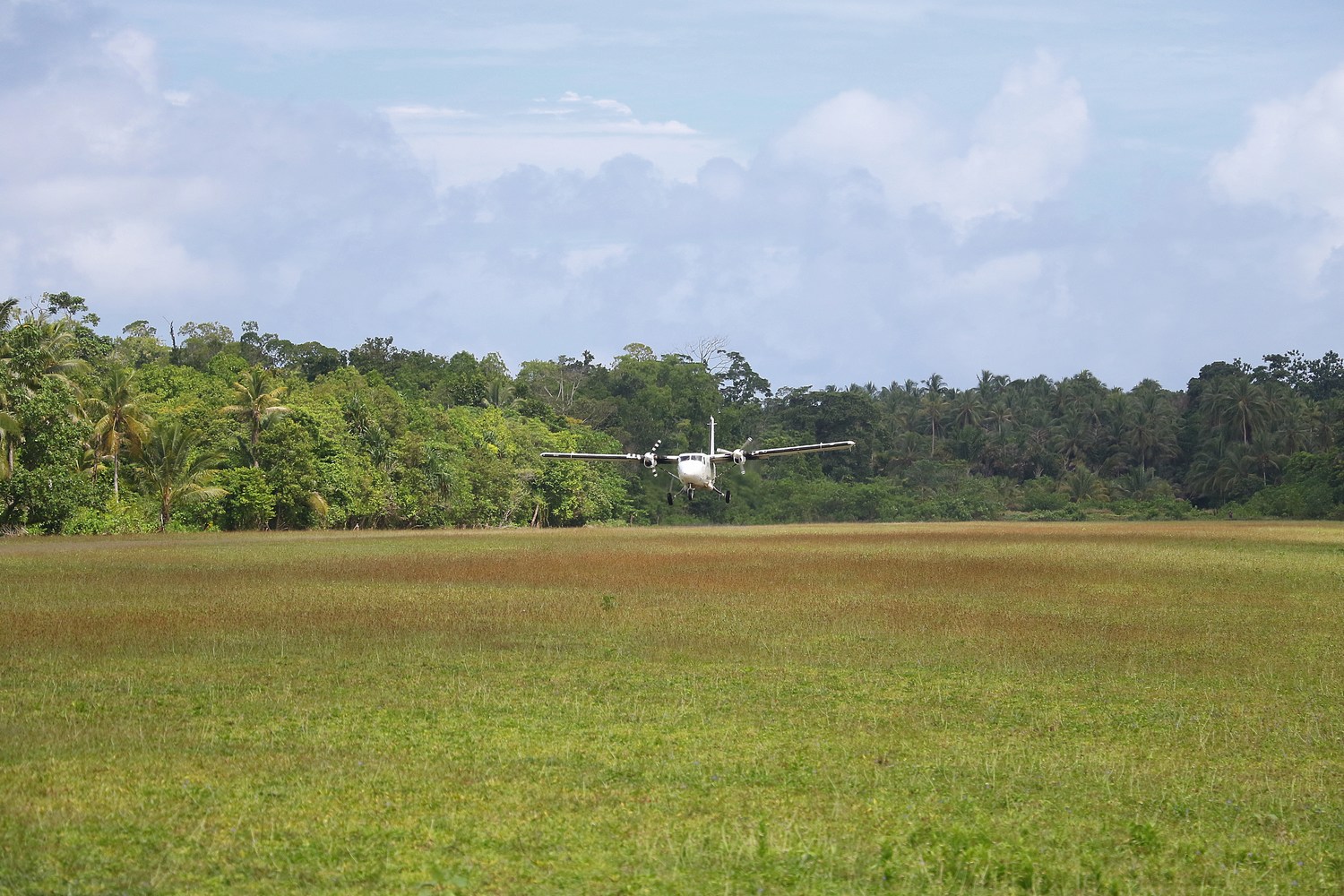
At the airport
Honiara International Airport (formerly known as Henderson Field) is located approximately 12km east of Honiara. Minibus and taxi services are available to and from the airport and throughout Honiara. Car hire desks are located inside the terminal.
At the airport you’ll find typical facilities including duty-free shops, Automatic Teller Machines (ATMs) and currency exchange.
The Solomons are a popular spot with yachties. If you’re arriving by boat, request clearance at an official Port of Entry first before going ashore at any island. Otherwise you risk encountering enforcement boats and paying a heavy fine.
Currently, the official ports of entry where you can clear customs and immigration are Honiara, Korovou (Shortland Islands), Gizo, Ringgi, Yandina, Tulagi and Graciosa Bay.
Yachts cruising the islands after officially checking in should still check in with Customs at any port where they have an office.
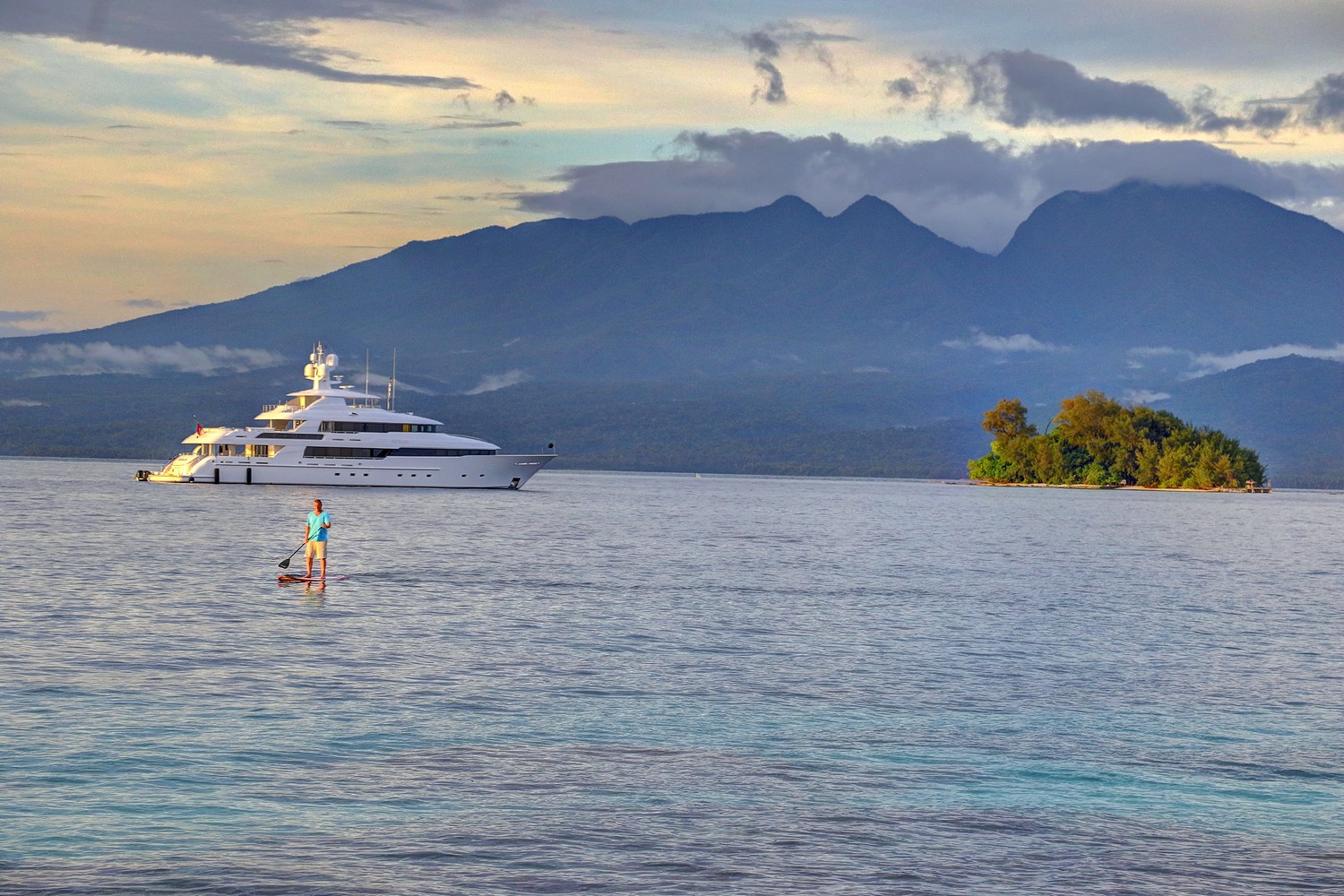
USE THE SOLOMON ISLANDS SEARCH MACHINE TO HELP WITH YOUR TRAVEL

Our Top 5 Best Places to Visit in Solomon Islands
Hidden paradise: must-visit places in the solomon islands.
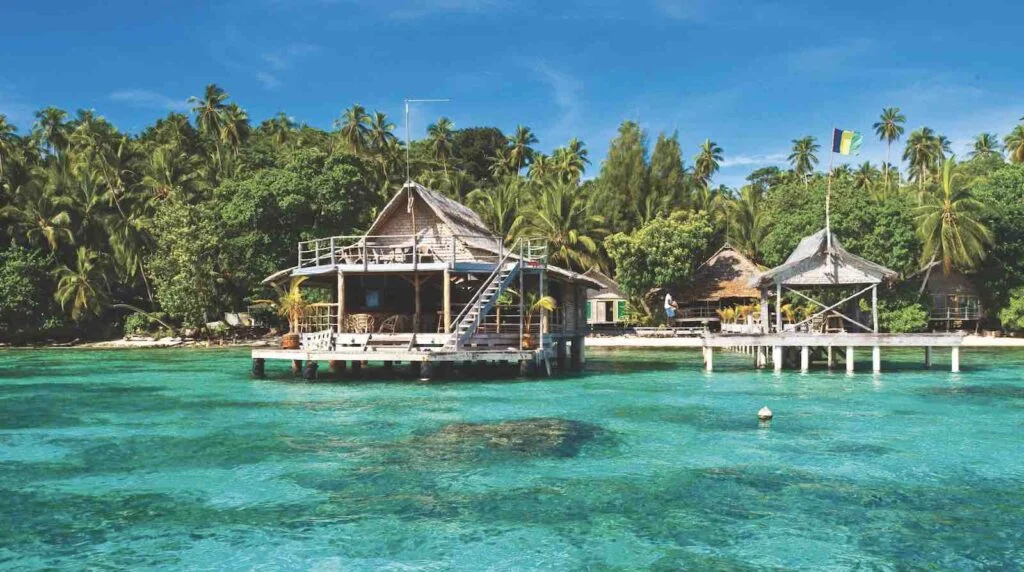
The 5 best places to visit in Solomon Islands: My journey through the Solomon Islands was a revelation of unspoiled beauty, rich culture, and unforgettable experiences. This South Pacific archipelago holds treasures that few have discovered. Join me as I recount the five best places I visited, along with unique personal experiences and hidden gems that made my trip truly remarkable.
Map of Solomon Islands
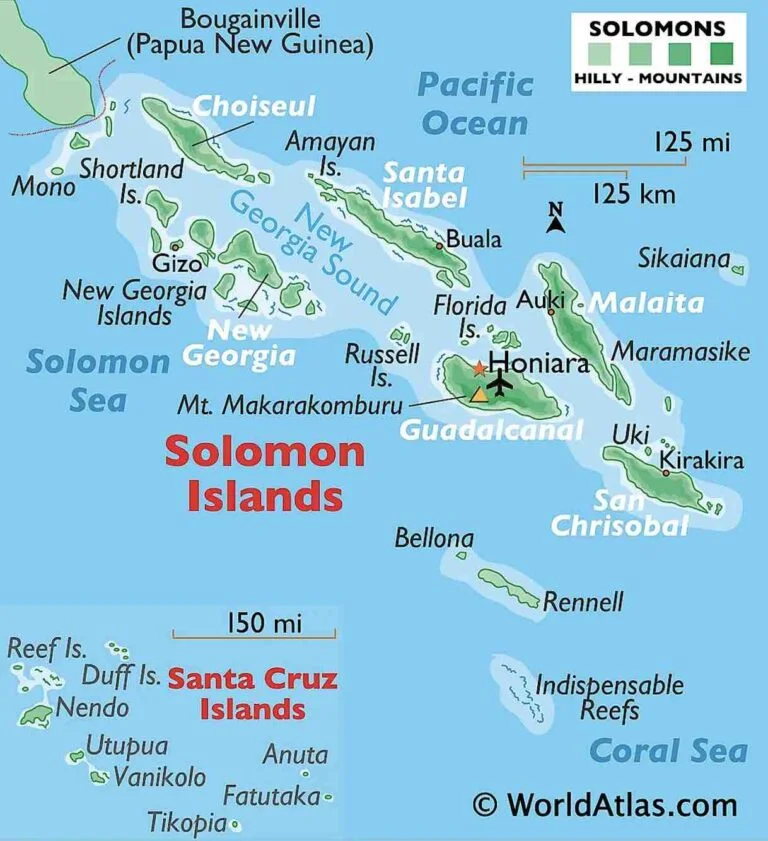
Map Showing Solomon Islands Location in the Pacific Ocean
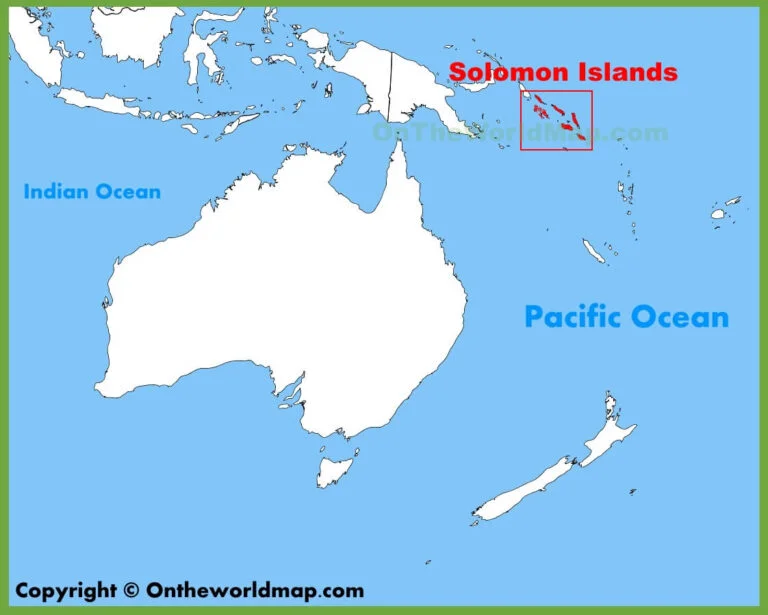
Countries Bordering Solomon Islands
Solomon Islands is located in Oceania in the western South Pacific Ocean and is mainly mountainous and covered in forests, although it has some extensive plains. Solomon Islands’ nearest neighbours are Vanuatu to the south-east and Papua New Guinea to the west. Australia lies to the southwest, New Caledonia to the southeast, Fiji, Wallis and Futuna and Tuvalu to the east, Nauru and the Federated States of Micronesia (FSM) to the north.
Honiara , on the north coast of Guadalcanal Island, is Solomon Islands’ capital and largest city. The population of the Solomon Islands in 2023 is estimated around 745,000 people.
- Papua New Guinea
- New Caledonia
- Wallis and Futuna
- Federated States of Micronesia
- Pacific Ocean
1. Marovo Lagoon – A Hidden Gem of Underwater Paradise
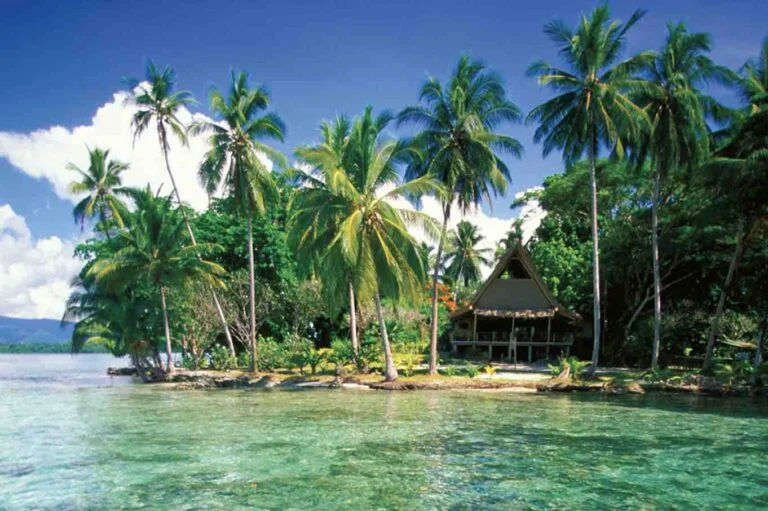
My first stop was Marovo Lagoon, a pristine underwater wonderland in the Western Province. After a hearty breakfast of coconut pancakes at my homestay on Gatokae Island, I embarked on a snorkeling adventure that felt like a journey to another world. Crystal-clear waters unveiled vibrant coral gardens, where I swam among tropical fish, graceful rays, and curious sea turtles.
For sundowners, I sipped fresh coconut water on a secluded beach as the sun dipped below the horizon, casting hues of pink and gold across the lagoon.
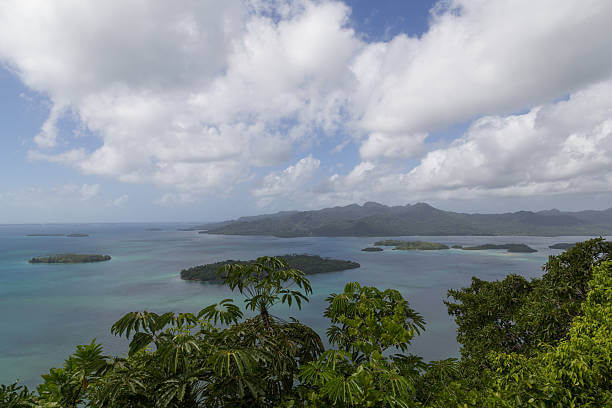
2. Honiara – Where Culture Meets Modernity
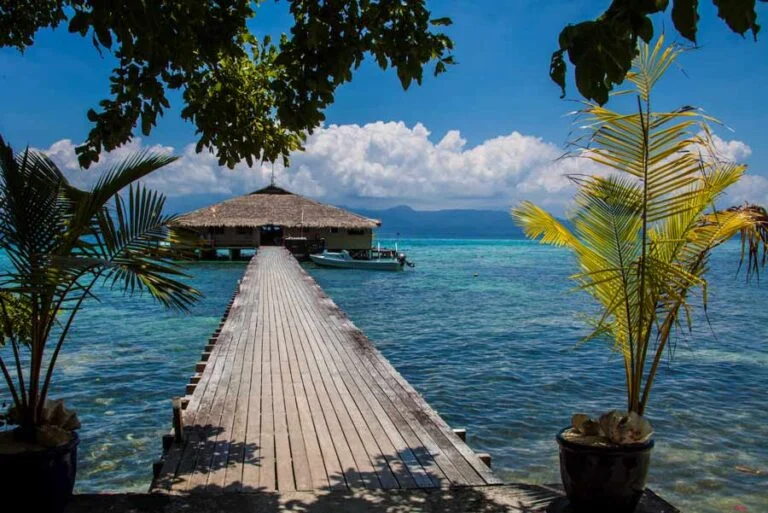
Honiara, the capital city, offered a unique blend of history and contemporary life. My mornings began with aromatic Solomon Islands coffee at the charming Lime Lounge Cafe. I explored the bustling Central Market, where friendly locals introduced me to exotic fruits and handmade crafts. As the day waned, I attended a mesmerizing cultural performance, where traditional dances and songs transported me to the heart of Melanesia.
The night ended with a sumptuous seafood dinner at the Point Cruz Yacht Club, watching fishing boats bob in the moonlit harbor.
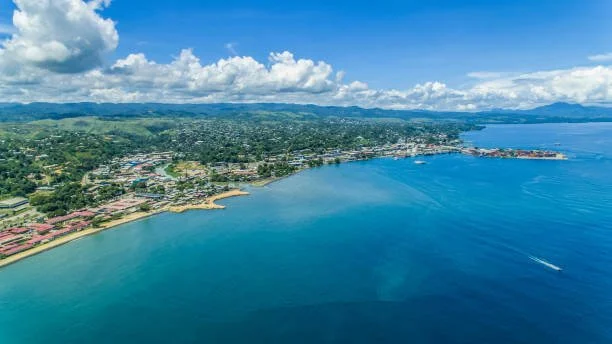
3. Gizo – Island Adventure and Starlit Nights
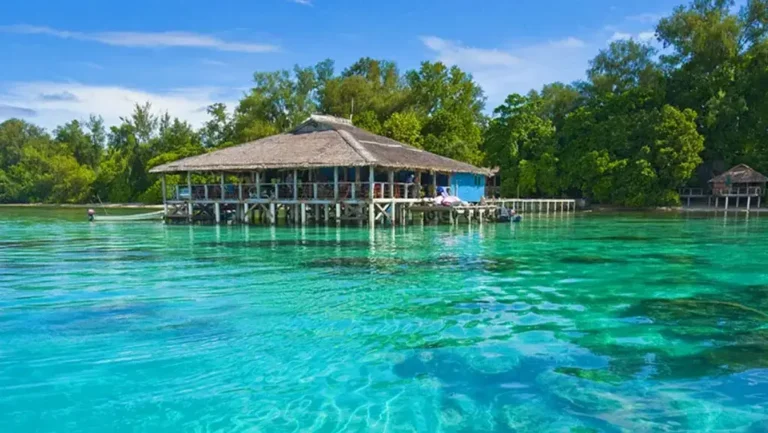
Gizo, in the Western Province, was an adventurer’s paradise. Waking up to a view of turquoise waters from my overwater bungalow was a surreal experience. I embarked on a thrilling day of diving among WWII wrecks and exploring untouched coral reefs. For breakfast, I devoured fresh papaya and coconut bread at Peter Joseph’s Café.
As the sun set, I enjoyed a tranquil sundowner cruise, basking in the sight of dolphins dancing in the twilight.
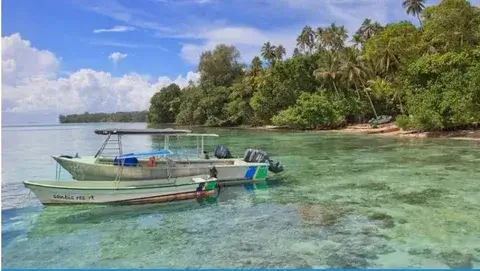
4. Malaita – A Journey into Ancient Traditions
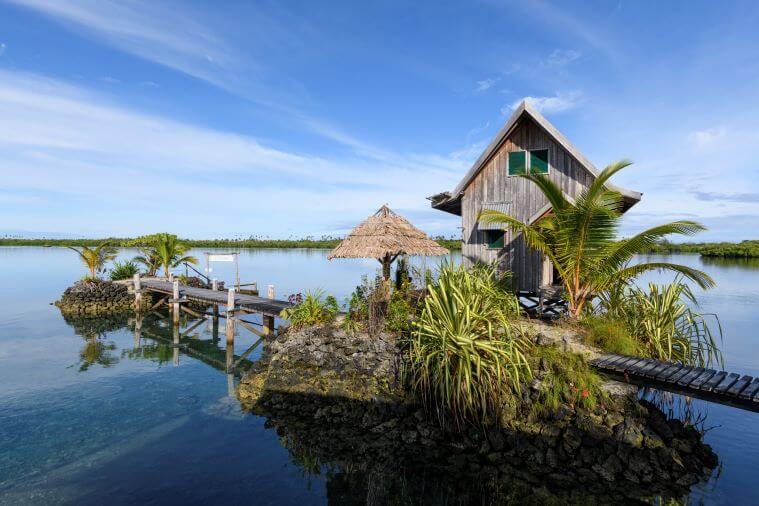
Malaita was a cultural immersion like no other. In the village of Suavanao, I participated in the mesmerizing Lole dance, an ancient ceremony celebrating life and traditions. Breakfast consisted of delicious taro and cassava dishes prepared by my gracious hosts.
As the stars painted the night sky, I gathered around a bonfire with locals, listening to ancient legends and stories that have been passed down through generations.
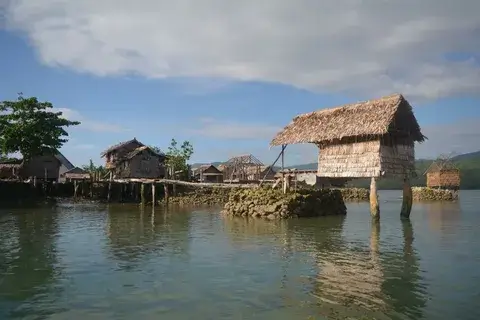
5. Rennell Island – A UNESCO-Listed Natural Wonder
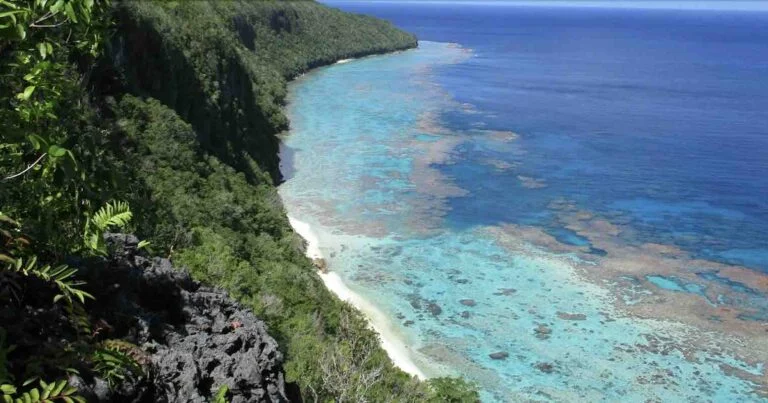
My final destination was Rennell Island, home to the world’s largest raised coral atoll and a UNESCO World Heritage Site. The morning began with a hike through lush rainforests to Lake Tegano, a serene natural wonder hidden within the island’s interior. Breakfast by the lake was a simple yet delicious affair of fresh fruit and coconut milk.
As the day unfolded, I kayaked across the tranquil lake, surrounded by the calls of exotic birds. Sundown was a magical moment, with the lake’s still waters reflecting the fiery hues of the sky.
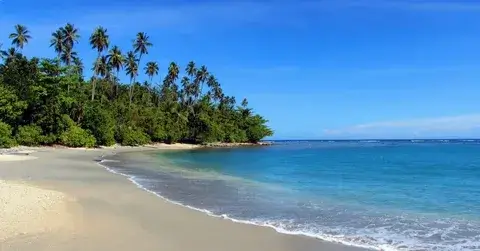
Did we mention the food? EAT!
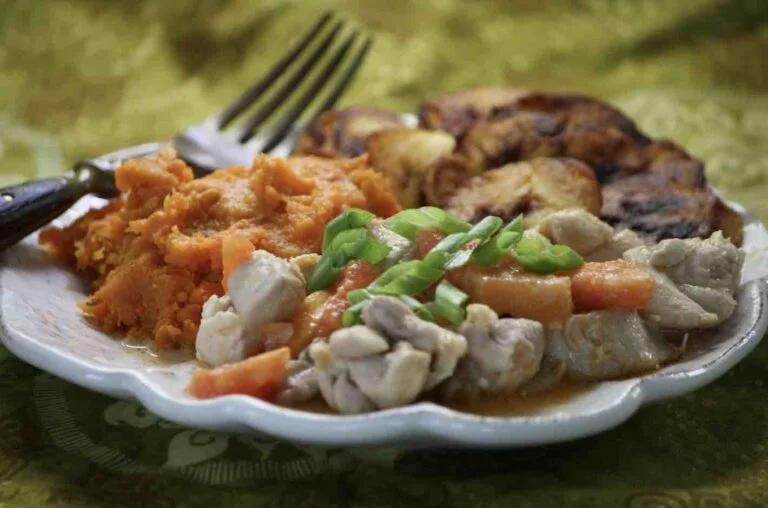
Solomon Islands cuisine is a delightful blend of tropical flavors and traditional Pacific island fare. One cannot truly experience the Solomon Islands without savoring its unique culinary offerings. Fresh seafood takes center stage, with dishes like grilled mahi-mahi, coconut-crusted prawns, and smoked fish often gracing the tables of local eateries.
The use of coconut milk is prevalent, enhancing the taste of dishes like fish curry and the beloved “island cabbage,” a delicious coconut-infused greens dish. Sago, a starchy staple derived from palm trees, is another local favorite, often served alongside grilled meats or as a base for desserts. And no meal is complete without a refreshing sip of fresh coconut water, which serves as both a thirst quencher and a symbol of hospitality in these tropical isles.
Whether dining at a local market stall or savoring a seafood feast by the beach, the flavors of the Solomon Islands provide a true taste of the Pacific paradise.
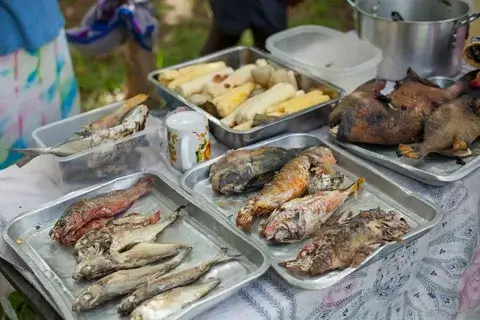
Essential Things to Know Before Traveling to Solomon Islands
Traveling to the Solomon Islands, a stunning but remote archipelago in the South Pacific, requires some preparation and awareness of the destination’s unique characteristics. Here are some essential things to know before traveling to the Solomon Islands:
1. Visa and Entry Requirements:
- Check whether you require a visa to enter the Solomon Islands based on your nationality and the purpose and duration of your visit. Visa requirements can vary, so ensure that you have the necessary documents before departure.
2. Currency:
- The currency used in the Solomon Islands is the Solomon Islands Dollar (SBD). Credit cards are not widely accepted, so it’s advisable to carry cash, especially when visiting remote areas.
3. Health Precautions:
- It’s recommended to consult a travel health professional before visiting the Solomon Islands. Ensure that your vaccinations are up-to-date, and consider taking prophylactic medication for malaria, as the country is in a malaria-prone region.
4. Local Customs and Culture:
- The Solomon Islands have a rich and diverse culture with many different languages and traditions. Respect local customs, dress modestly, and seek permission before taking photos of people.
5. Language:
- English is the official language, and you’ll find many people who speak it, especially in urban areas and tourist spots. However, learning a few basic phrases in local languages such as Pijin or Bislama can be appreciated by locals.
- The Solomon Islands are generally considered safe for travelers, but like any destination, it’s essential to take standard safety precautions. Keep an eye on your belongings, avoid walking alone at night in unfamiliar areas, and stay informed about local conditions.
7. Transport:
- Public transportation can be limited in some areas, especially on smaller islands. Arrange transportation in advance if needed, and be prepared for some journeys to be slower than you might be accustomed to.
8. Accommodation:
- Accommodation options vary from basic guesthouses to upscale resorts, particularly on the main islands. In remote areas, accommodations may be more rustic, so research your options and book in advance, especially during peak travel seasons.
9. Electricity:
- The Solomon Islands typically use Type I electrical outlets (the same as in Australia and New Zealand), with a voltage of 230V and a frequency of 50Hz. Bring the necessary adapters if your devices have different plug types.
10. Food and Water: – The local cuisine features fresh seafood, coconut, and tropical fruits. While dining, exercise caution with street food to prevent foodborne illnesses. It’s advisable to drink bottled or purified water, especially outside of urban areas.
11. Natural Hazards: – The Solomon Islands are in a seismically active region and are susceptible to earthquakes and tsunamis. Be aware of emergency procedures and stay informed about local conditions.
12. Travel Insurance: – It’s essential to have comprehensive travel insurance that covers medical emergencies, trip cancellations, and personal belongings to ensure you’re prepared for unexpected situations.
13. Weather and Climate: – The Solomon Islands have a tropical climate with high humidity. Be prepared for warm and humid conditions year-round, with a wet season from November to April and a drier season from May to October.
14. Respect for the Environment: – The Solomon Islands are home to stunning natural beauty, including coral reefs. When snorkeling or diving, follow responsible tourism practices to protect the delicate marine ecosystems.
By keeping these essential factors in mind and conducting thorough research before your trip, you can have a safe and enjoyable experience exploring the Solomon Islands’ unique and breathtaking landscapes.
How to Get to Solomon Islands
Getting to the Solomon Islands can be an adventure in itself due to its remote location in the South Pacific. Here are the primary ways to reach the Solomon Islands:
- Honiara International Airport (HIR): This is the main international gateway to the Solomon Islands, located on Guadalcanal Island. Several airlines operate flights to and from Honiara, including Solomon Airlines, Fiji Airways, Air Vanuatu, and Virgin Australia. These flights often connect via major regional hubs like Nadi (Fiji) or Brisbane (Australia).
2. Visa Requirements:
- Check whether you need a visa to enter the Solomon Islands based on your nationality and the purpose and duration of your visit. Visa requirements can vary, so make sure to obtain the necessary visa in advance if required.
3. Connecting Flights:
- Depending on your location, you may need to take connecting flights to reach one of the regional hubs before flying to the Solomon Islands. Popular departure points include Brisbane, Sydney, Auckland, Nadi, and Port Vila.
4. Domestic Flights:
- Once you arrive in Honiara, domestic flights operated by Solomon Airlines and other carriers can take you to other islands within the archipelago. Gizo, Munda, and Seghe are popular destinations for diving and exploring the Western Province.
5. By Cruise:
- Some cruise lines include the Solomon Islands in their itineraries. Cruises offer a unique way to explore various islands and enjoy the natural beauty of the archipelago.
6. Yacht and Private Boat:
- For those with sailing experience, the Solomon Islands can be accessed by private yacht or boat. Several marinas and ports are available for docking.
7. Travel Considerations:
- Be sure to check the latest travel advisories, entry requirements, and health and safety guidelines before planning your trip to the Solomon Islands. Regulations can change, so stay informed.
8. Accommodation and Activities:
- Plan your accommodations and activities in advance, especially if you’re visiting remote areas or during peak travel seasons. Options range from basic guesthouses to upscale resorts, and some activities may require reservations.
9. Currency and Essentials:
- The currency in the Solomon Islands is the Solomon Islands Dollar (SBD). Credit cards are not widely accepted, so it’s essential to carry cash, especially when traveling to more remote areas.
10. Language and Culture: – English is the official language, and Pijin is a widely spoken Creole language. Understanding and respecting local customs and traditions is important when interacting with the Solomon Islands’ friendly and diverse communities.
Traveling to the Solomon Islands requires careful planning due to its remote location, but the natural beauty, cultural richness, and unique experiences make it a rewarding destination for adventurous travelers.
How to Get Around Solomon Islands
Getting around the Solomon Islands, an archipelago in the South Pacific, often involves a mix of transportation methods due to its island geography. Here’s how to get around:
1. Domestic Flights:
- Domestic flights operated by Solomon Airlines connect the major islands. Honiara serves as the primary hub for domestic flights, and you can fly to destinations like Gizo, Munda, Seghe, and more. Flights are essential for covering long distances quickly.
2. Water Transportation:
- Ferries and Boats: Inter-island ferries and boats are common modes of transportation, especially for traveling between islands in close proximity. Reliable services connect many inhabited islands. Be sure to check schedules and availability in advance, as they may not run daily.
- Charter Boats: For more flexibility, you can also charter boats for private transport or tours, which can be particularly useful for exploring remote or less-accessible islands.
3. Canoes and Outboard Motorboats:
- On some islands, traditional canoes and small outboard motorboats are still used for local transportation. These are excellent options for shorter trips within an island or around a lagoon.
4. Road Transportation:
- On the larger islands like Guadalcanal, Malaita, and Isabel, you’ll find roads and buses for ground transportation. Local buses and minibusses are available, but schedules may be irregular. Taxis are also an option in urban areas like Honiara.
5. Walking and Hiking:
- In towns and cities and even on some smaller islands, walking is a convenient way to get around. Many local attractions, markets, and accommodations are within walking distance.
6. Rental Vehicles:
- Some islands, particularly Guadalcanal, offer car and scooter rentals. Keep in mind that road conditions may vary, and driving standards can be different from what you’re used to.
7. Organized Tours:
- For activities like hiking, diving, and snorkeling, consider booking organized tours. Local operators can provide transportation to and from the activity sites, making it convenient for travelers.
8. Travel Considerations:
- Keep in mind that transportation schedules may be influenced by factors such as weather and local events. Be flexible with your plans, and allow extra time for potential delays.
- If you’re traveling to remote or less-touristed areas, it’s advisable to communicate with locals, tour operators, or guesthouses in advance to arrange transportation and accommodations.
Navigating the Solomon Islands may require some patience and flexibility, but the beauty of the islands and the warmth of the local communities make the journey well worth it. Always check with local sources for the most up-to-date information on transportation options and schedules.
FAQ – Our Top 5 Best Places to Visit in Solomon Islands and Traveling to Solomon Islands in General
Traveling to solomon islands: frequently asked questions.
1. Do I Need a Visa to Visit the Solomon Islands?
- Visa requirements vary depending on your nationality, purpose of visit, and duration of stay. It’s essential to check the specific visa requirements for your nationality with the nearest Solomon Islands embassy or consulate.
2. What Currency is Used in the Solomon Islands?
- The currency in the Solomon Islands is the Solomon Islands Dollar (SBD). While major credit cards are accepted in some urban areas, it’s advisable to carry cash, especially when traveling to more remote regions where cash is the primary form of payment.
3. Is English Spoken in the Solomon Islands?
- Yes, English is the official language and is widely spoken in urban areas and tourist destinations. However, locals may also speak indigenous languages like Pijin. Learning a few basic Pijin phrases can be helpful and appreciated.
4. When is the Best Time to Visit the Solomon Islands?
- The best time to visit is during the dry season, which typically runs from May to October. This period offers pleasant weather with less rainfall. However, marine activities like diving and snorkeling can be enjoyed year-round.
5. Are There Health Precautions I Should Take Before Traveling to the Solomon Islands?
- Travelers are advised to consult a travel health professional for vaccinations and health precautions, including malaria prophylaxis, as the Solomon Islands is in a malaria-prone region. It’s also crucial to have travel insurance that covers medical emergencies.
6. How Do I Get Around the Solomon Islands?
- Getting around involves a mix of domestic flights, ferries, boats, canoes, walking, and, in some areas, rental vehicles. Domestic flights connect major islands, while boats and ferries are common for inter-island travel.
7. Is It Safe to Travel to the Solomon Islands?
- The Solomon Islands are generally considered safe for travelers. As with any destination, it’s essential to take standard safety precautions, such as securing your belongings and being aware of your surroundings.
8. What Are the Must-Visit Places in the Solomon Islands?
- Must-visit places include Honiara (the capital), Marovo Lagoon, Gizo, Malaita, and Rennell Island. Each offers a unique blend of natural beauty, culture, and adventure.
9. Can I Drink Tap Water in the Solomon Islands?
- It’s advisable to drink bottled or purified water, especially outside urban areas, to avoid potential health issues. Some accommodations may provide filtered water.
10. Are There Any Health Restrictions in Place? – Travel restrictions can change frequently. Before traveling to the Solomon Islands, check the latest travel advisories, entry requirements, and health and safety guidelines from official sources.
11. What Should I Know About Local Customs and Culture? – Respect local customs, dress modestly, and ask for permission before taking photos of people. Learning about and engaging with the local culture can enhance your travel experience.
12. Can I Use My Electrical Devices in the Solomon Islands? – The Solomon Islands typically use Type I electrical outlets, with a voltage of 230V and a frequency of 50Hz. Bring the necessary adapters if your devices have different plug types.
Traveling to the Solomon Islands is a rewarding experience, but it’s essential to plan ahead, stay informed, and respect local customs to ensure a smooth and enjoyable journey in this remote South Pacific paradise.
Best Places to Visit in Solomon Islands: Frequently Asked Questions
Frequently Asked Questions (FAQ) About Places to Visit in the Solomon Islands
1. What are the top attractions in the Solomon Islands?
- Some of the top attractions in the Solomon Islands include Marovo Lagoon, Honiara, Gizo, Malaita, Rennell Island, and various WWII historical sites.
2. Are there any must-visit cultural experiences in the Solomon Islands?
- Absolutely! You can immerse yourself in local culture by attending traditional dances, visiting local markets, and participating in ceremonies and events in different villages. Don’t miss the opportunity to try local dishes and learn about indigenous customs.
3. What is there to do for outdoor enthusiasts in the Solomon Islands?
- The Solomon Islands offer a paradise for outdoor enthusiasts. Activities include diving and snorkeling in pristine coral reefs, hiking through lush rainforests, exploring WWII wreck sites, and enjoying water sports like kayaking and paddleboarding.
4. What are some hidden gems or lesser-known places to visit in the Solomon Islands?
- Look out for hidden gems like Rennell Island’s Lake Tegano, the Ontong Java Atoll for sea turtle watching, and lesser-known islands in the Temotu Province for unspoiled natural beauty and unique cultural experiences.
5. Are there any cultural festivals or events worth attending in the Solomon Islands?
- Yes, the Solomon Islands host various cultural festivals and events throughout the year. These include the Solomon Islands Arts Festival, the Shell Money Festival, and traditional celebrations in various villages. Check the local calendar for events during your visit.
6. What are the best islands for diving and snorkeling in the Solomon Islands?
- The Western Province, including Gizo and Munda, is renowned for its diving and snorkeling opportunities. Marovo Lagoon and the Florida Islands are also popular spots. Each offers a diverse underwater world with colorful coral reefs and marine life.
7. How can I explore the WWII history of the Solomon Islands?
- Visit WWII historical sites like the Vilu War Museum, Bloody Ridge, and Bonegi I and II in Guadalcanal. These sites provide insights into the significant battles that took place in the region.
8. Are there unique accommodations options in the Solomon Islands?
- Yes, you can find a variety of accommodations ranging from basic guesthouses and eco-resorts to overwater bungalows and beachfront lodges. Staying in traditional homestays with local families can provide an authentic experience.
9. What should I know about safety when visiting the Solomon Islands?
- The Solomon Islands are generally safe for travelers, but standard safety precautions apply. Secure your belongings, be aware of your surroundings, and follow local advice and guidelines.
10. How do I get to the remote islands in the Solomon Islands? – Getting to remote islands often involves domestic flights and boat transfers. It’s recommended to coordinate transportation in advance, especially if you plan to explore less-accessible areas.
11. Are there any special considerations for visiting the Solomon Islands during specific seasons? – Plan your visit based on your interests. The dry season from May to October is ideal for most outdoor activities, while the wet season from November to April offers lush landscapes and is a great time for birdwatching.
12. What is the best way to interact with the local communities and learn about their culture? – Engage with locals, ask questions, and participate in their daily activities or events. Learning a few basic phrases in Pijin, the local Creole language, can also facilitate communication and show respect for the culture.
Visiting the Solomon Islands is a unique and enriching experience. By exploring these frequently asked questions and planning ahead, you can make the most of your journey in this South Pacific paradise.
You want more on Places to visit in Solomon Islands? ⬇️ ⬇️ ⬇️
Our Top 5 Best Places to Visit in Solomon Islands – Final Thoughts
The Solomon Islands are a true treasure trove of experiences waiting to be uncovered. From the underwater paradises of Marovo Lagoon to the rich cultural traditions of Malaita, this South Pacific gem offers a diverse range of adventures. It’s a place where time seems to stand still, where modernity coexists with ancient customs, and where every moment feels like a discovery of paradise.
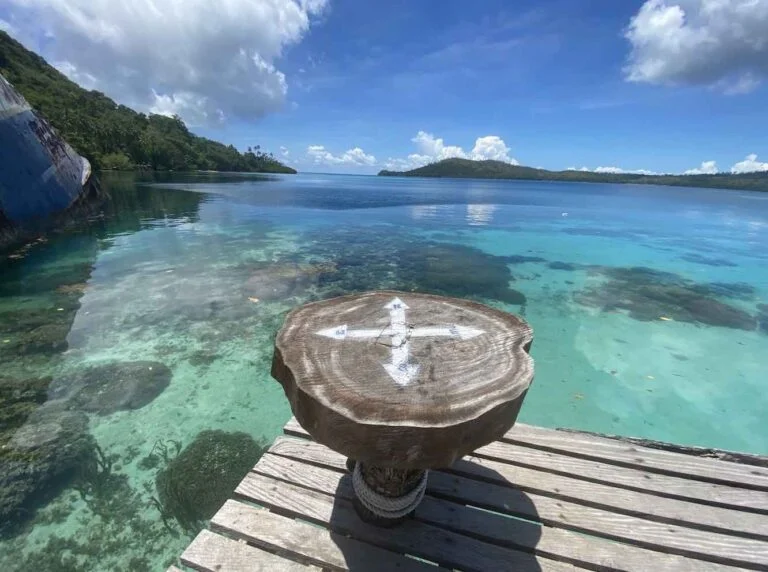
Best Places to Visit in Spain 2023
Spain, a country rich in history, culture, and breathtaking landscapes, beckons travelers with its vibrant cities, stunning beaches, and captivating architecture. From the enchanting streets of Barcelona to the sun-kissed shores of the Costa del Sol, Spain offers a diverse array of destinations to explore..
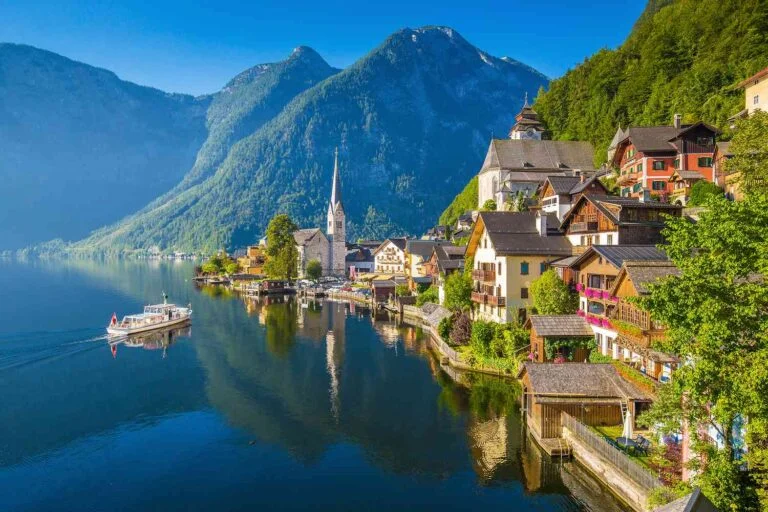
Europe: A Tapestry of Diversity, Culture and Adventure
Europe, a continent as diverse as it is beautiful, is a traveler’s dream come true. From the snow-capped peaks of the Alps to the sun-kissed beaches of the Mediterranean, Europe offers an enchanting mix of experiences for every type of traveler. Join us as we embark on a journey through the heart of Europe, discovering…

Our Top 5 Best Places to Visit in Kuwait
Discovering Kuwait: Journey Through its Hidden Treasures Hey fellow wanderlusters, let’s dive into Kuwait’s kaleidoscope of culture, where the past meets modernity. I’ve uncovered five must-visit spots for the young and adventurous traveler. From sipping on sweet tea under Bedouin tents to catching epic sunsets, Kuwait is an adventure waiting to happen. Map of Kuwait…
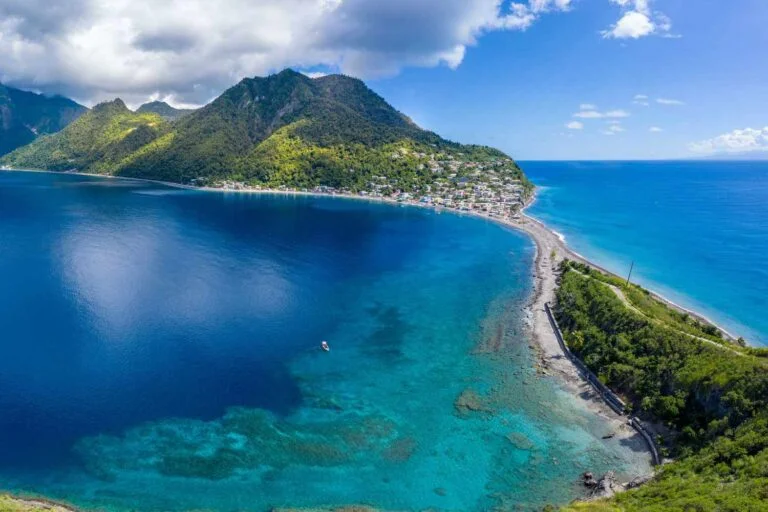
Our Top 5 Best Places to Visit in Dominica
Dominica: Where Adventure Meets Paradise Welcome to Dominica, the “Nature Island” of the Caribbean. If you’re seeking a destination that’s off the beaten path, brimming with natural wonders and adventure, you’ve found it. Here, you’ll explore lush rainforests, soak in rejuvenating hot springs, and dive into sparkling turquoise waters. Let’s embark on a journey to…

Our Top 5 Best Places to Visit in Jordan
My Journey Through Jordan’s Top 5 Destinations If you’re ready to dive into a world of ancient wonders, surreal landscapes, and incredible experiences, then Jordan is calling your name. Let me take you on a ride through my unforgettable journey as I uncovered the 5 best places to visit in this captivating country. Map of…
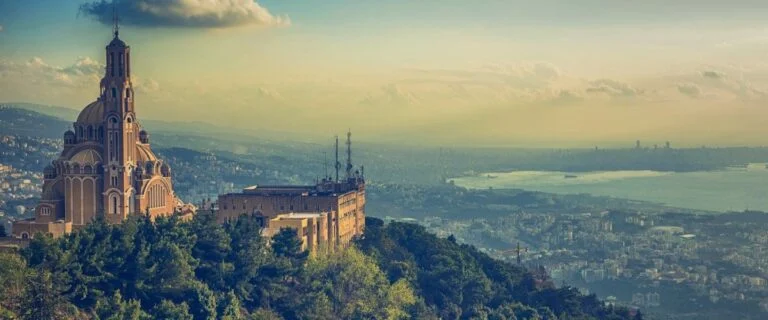
Our Top 5 Best Places to Visit in Lebanon
Lebanon Unveiled: Exploring the Mystique of the Middle East Welcome to the captivating land of Lebanon! Nestled along the Mediterranean Sea, this enchanting country is a treasure trove of history, culture, and natural beauty. Let’s embark on a journey to discover some of the most mesmerizing places that Lebanon has to offer. Map of Lebanon…

Our Top 5 Best Places to Visit in Guinea
Unveiling Guinea’s Hidden Treasures: 5 Must-Visit Places Are you ready for an off-the-beaten-path adventure in West Africa? Guinea, a hidden gem nestled between Guinea-Bissau, Senegal, Mali, Cote d’Ivoire, Liberia, and Sierra Leone, awaits your discovery. Prepare to be captivated by its vibrant culture, stunning landscapes, and welcoming people as we explore some of the must-visit…
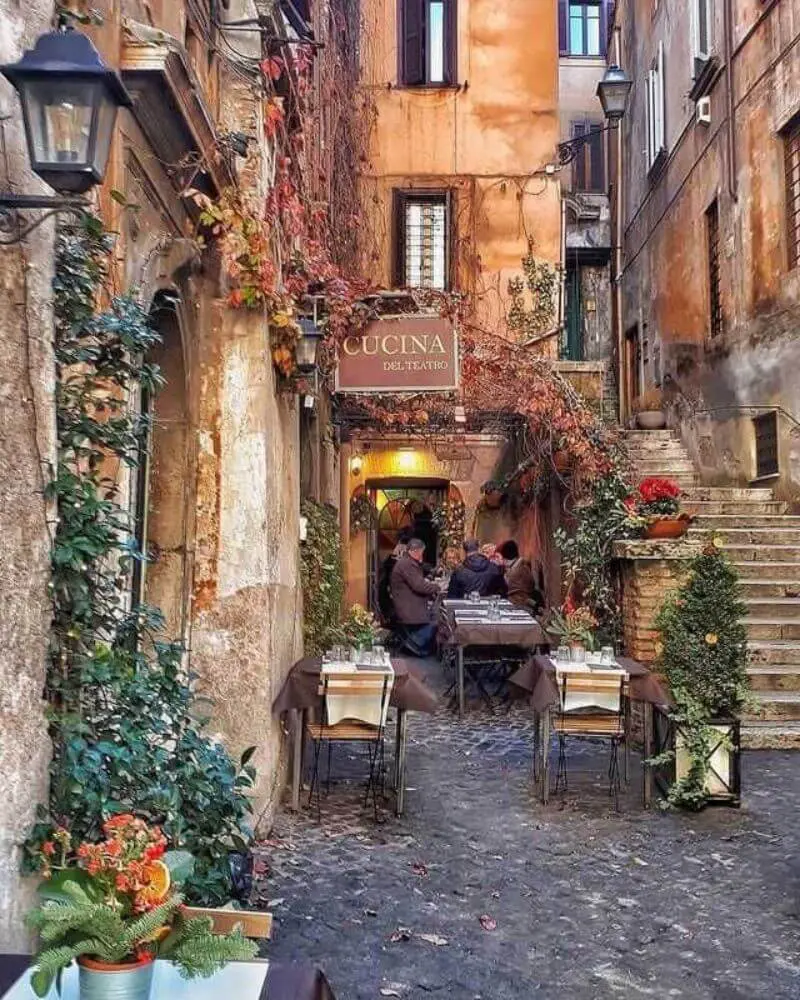
Best Places to Visit in Italy 2023
Italy, a land of romance, rich history, and breathtaking landscapes, beckons travelers with its magnetic allure. From the captivating cities adorned with timeless architecture to the picturesque coastal towns and rolling vineyards, this Mediterranean gem offers a plethora of unforgettable experiences..
Exploring Greece’s Timeless Treasures: Greece Best Places to Visit Top 10
Exploring Italy’s Treasures: The Best Places to Visit in Italy in 2023
Our 10 Best Places to Visit in Venice : Come Explore the Enchanting Floating City
Unveiling the Enchanting Beauty: Our Best Places to Visit in Florence
Our Best Free Places to Visit in New York That are yes, Absolutely FREE!
Our Best 10 Affordable Vacation Destinations if you are on a tight budget.
Our 10 Best Budget Travel Tips : Explore the World Without Draining Your Bank Account.
These are our Top 10 Best Travel Destinations Worldwide 2023
Our Absolute Best list of 10 Less Touristy Places to Travel in Europe 2023
Australia: A Traveler’s Paradise: Best Australian Destinations 2023
Our Top 5 Best Places to Visit in Solomon Islands – By David John
5 Best Places to Visit in Solomon Islands Cover Image Courtesy vt
Best Places to Visit in Solomon Islands flickr images licensed under CC BY 2.0
Additional images adobe · colourbox · istock · pexels · shutterstock · unsplash unless otherwise stated .
Were our Top 5 Best Places to Visit in Solomon Islands helpful to you?
Let us know your thoughts in the comments below..
And if you are looking for a specific piece of information, please do comment below..
Similar Posts
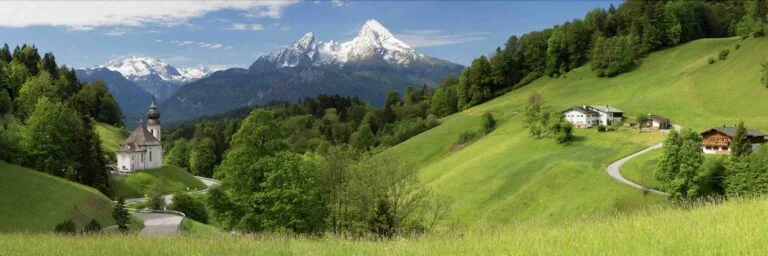
Our Top 7 Best Places to Visit in Austria
Exploring Enchanting Austria: 7 Must-Visit Destinations Austria, with its captivating blend of alpine landscapes, historic cities, and cultural treasures, is a traveler’s dream come true. From charming villages nestled in the mountains to grand architectural wonders, this European gem offers a diverse array of experiences for every type of adventurer. Here are five enchanting places…
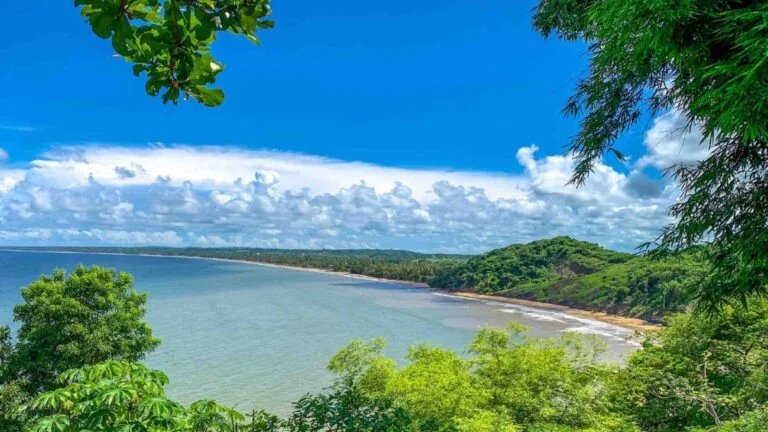
Our Top 5 Best Places To Visit In Trinidad
Unveiling Trinidad’s Treasures: 5 Best Places to Visit on Your Island Escape Trinidad, the dynamic jewel of the Caribbean, is a paradise that beckons with its mix of vibrant culture, breathtaking landscapes, and captivating history. Whether you’re a nature enthusiast, a history buff, or simply seeking an unforgettable getaway, Trinidad has something to offer for…
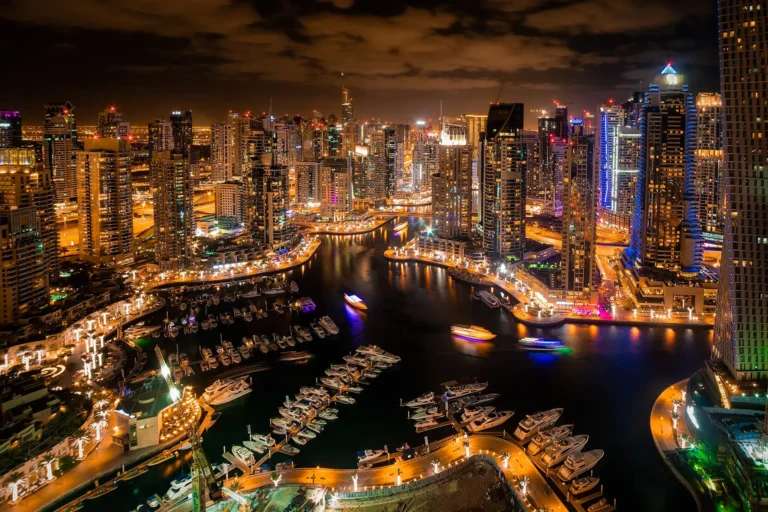
Our Top 5 Best Places To Visit In UAE:
The United Arab Emirates will leave you breathless: Home to historic sites, magnificently designed buildings, lovely mountains, UAE is a destination not to be missed for lovers of fun and excitement. It is also a favorite getaway spot for families and couples. With incredible attractions such as Sheikh Zayeed Mosque and Burj Kahalifa, UAE is…

Our Top 5 Best Places To Visit In Bangladesh:
Exploring the Wonders of Bangladesh: A Traveler’s Paradise Welcome to Bangladesh, a land of natural wonders, cultural richness, and warm hospitality. From bustling cities to serene landscapes, this South Asian gem offers an array of captivating destinations waiting to be discovered. Join us as we embark on a virtual journey to explore some of the…
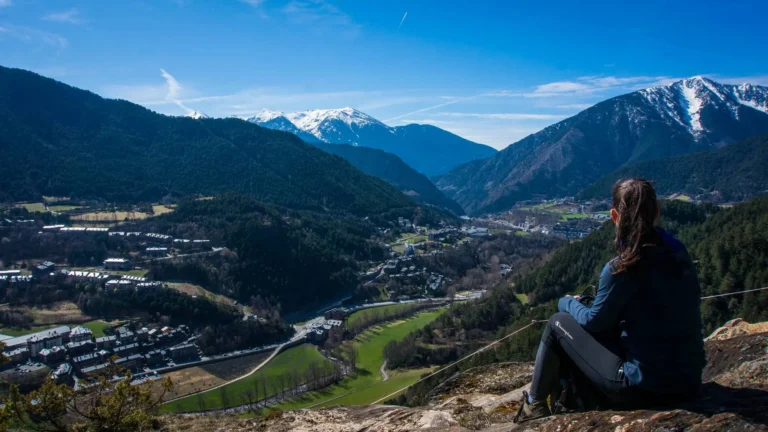
Our Top 5 Best Places To Visit In Andorra
Adventures in Andorra: Hidden Treasures of the Pyrenees If you’re on the lookout for an epic getaway filled with stunning landscapes, thrilling activities, and charming villages, Andorra is the place to be. I recently had the time of my life exploring this hidden gem, and I’m excited to share my top 5 favorite places to…
Leave a Reply Cancel reply
Your email address will not be published. Required fields are marked *
Save my name, email, and website in this browser for the next time I comment.

15 Things to do in the Solomon Islands – That People Actually Do!
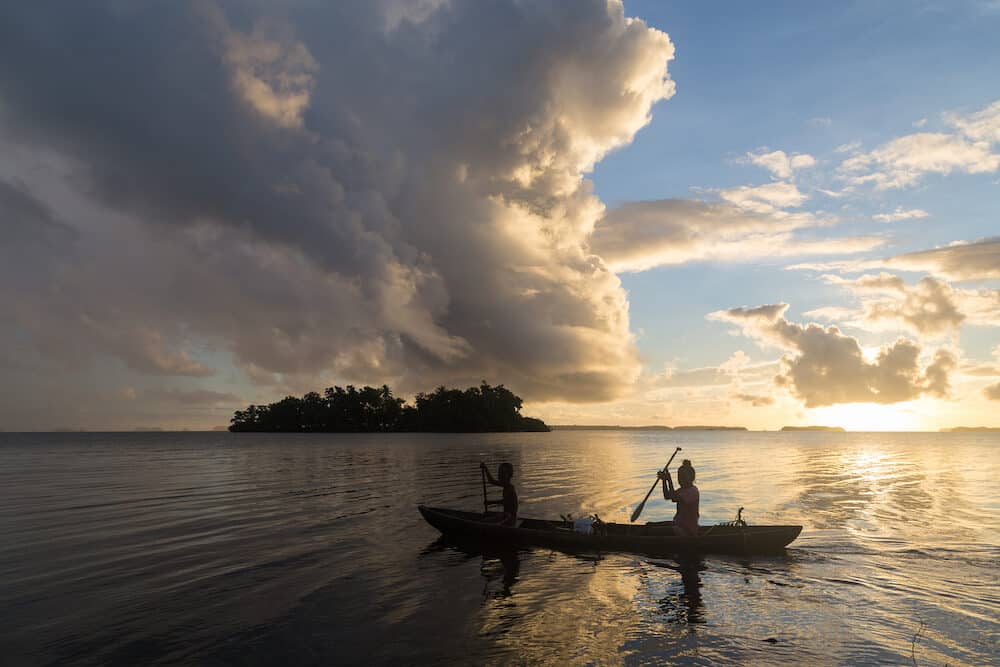
The Solomon Islands are an archipelago of 992 islands in the South Pacific, only 147 of which are currently inhabited. Since gaining independence from Britain in 1978, the islands are considered a unified sovereign state.
Travellers interested in diving, hiking and getting off the beaten path to learn about different cultures will undoubtedly enjoy a trip to the Solomon Islands archipelago. In addition to the countless stunning beaches and traditional villages, there is a lot of war history to learn about as well.
Since visas are not required and everyone can speak English, visiting is incredibly easy. Plus, the flight into the capital city of Honiara is only three hours from Brisbane, Australia. If you’re looking to escape the constant WiFi and take a digital detox, the Solomon Islands couldn’t be more ideal.
Wondering which islands you should go to, and what you can discover and explore there? Here are the top 15 things to do in the Solomon Islands.
Plan your trip?
Avoid hidden fees in the exchange rate while withdrawing from millions of ATMs abroad, paying in restaurants and shops, and buying your accommodation and flights using the Wise Card . You can hold up to 40+ currencies at once to spend in in over 150 countries, and convert them in real time with the free Wise app.
Need help planning your trip from start to finish? Check out these helpful links:
- Cheap flights
- Savings on accommodation from hostels to luxury hotels
- Affordable car rental options
- Affordable sightseeing tours and day trips
- Travel Adapter – All in one so you don’t have to carry a bunch around
This post contains some affiliate links for your convenience. Click here to read my full disclosure policy. You can also read our content/editorial policy here .
Table of Contents
Skull Island
If you’ve heard anything from fellow travellers about the Solomon Islands, you may already know about Skull Island. It is perhaps the most sacred area in the region and one of the most popular spots for tourists to visit.
The small island showcases the fascinating local history of headhunting, and features a collection of skulls, coral shrines and shell money.
These skulls, believed to date back to the 1700s, belonged to tribal chiefs and enemies. They were originally displayed on poles in front of the homes of headhunters.
As local customs were not permitted during British colonization, missionaries ordered the skulls to be moved to this island.
Nusa Kunda, the local name for Skull Island, is near the coast of New Georgia Island. It can be reached via a 30-minute boat ride from Munda, where you’ll pass many other uninhabited islands.
Only the local chief is permitted to take you here, as they will perform a short ritual before you begin exploring.
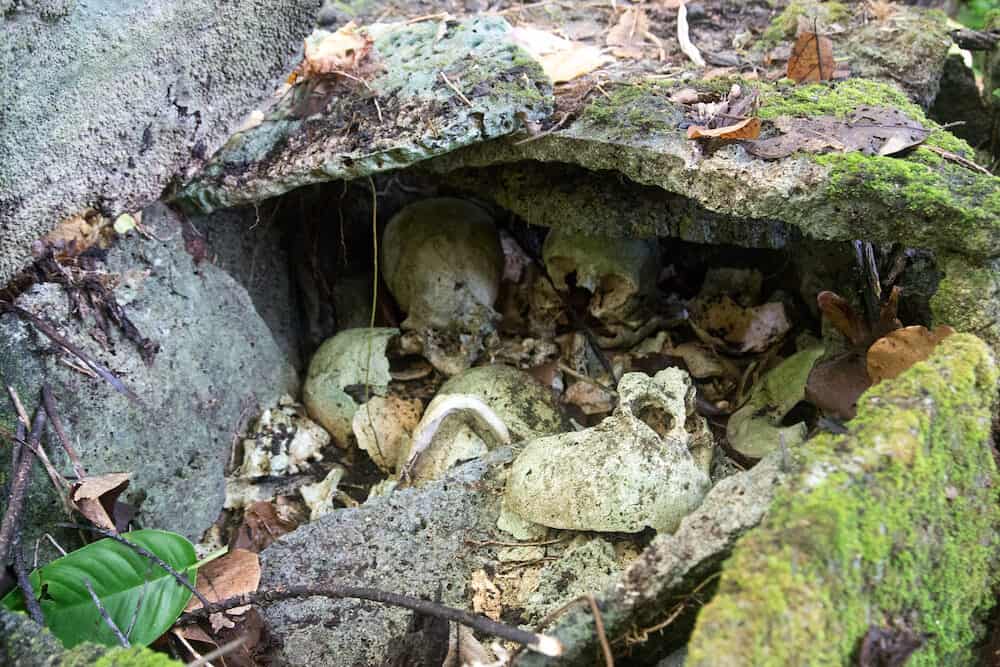
Tenaru Falls
On Guadalcanal, the main island in the archipelago, you’ll find the tranquil Tenaru Falls. Some say this hidden gem is the best waterfall in the South Pacific.
As the area is so remote, you will need a guide to take you to them. Luckily, all you need to do is visit the Solomon Islands Visitors Bureau where you will have a guide selected to lead you.
The water cascades down a 60-metre-high cliff face surrounded by luscious green foliage. The hike to reach the area is mostly flat and very shaded from the sun, although you will need to bring suitable shoes as the terrain can be quite slippery.
Departing from Tenaru Village, walking will take you around four hours there and back. Once reaching the falls, you can enjoy a peaceful and well-deserved swim to cool down.
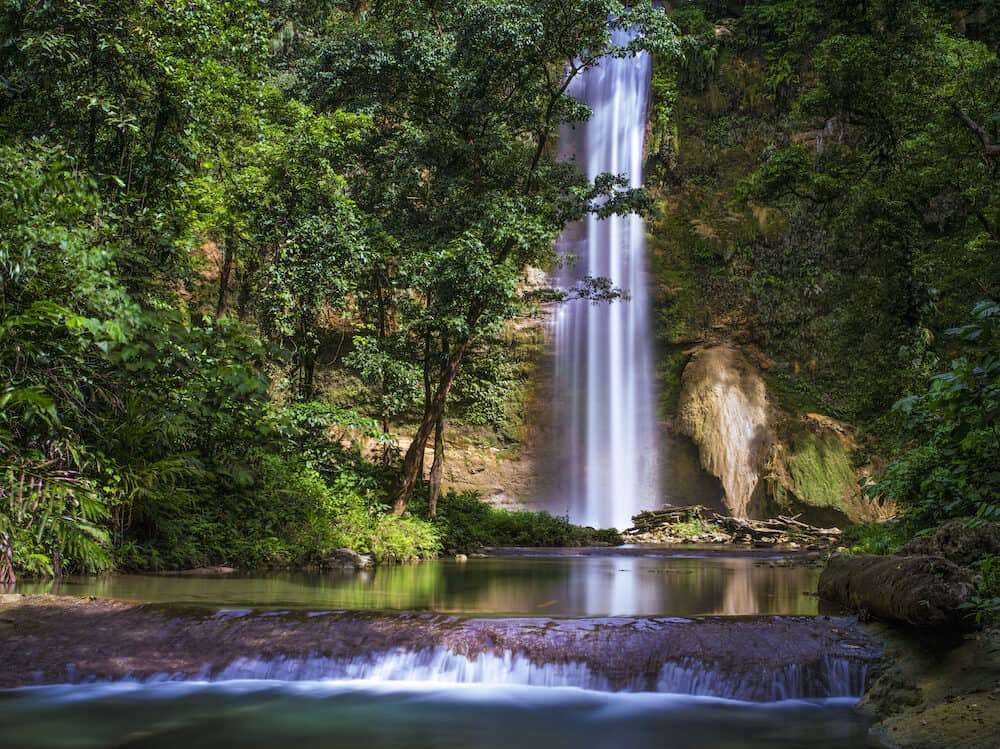
Kennedy Island
Despite being uninhabited, Kennedy Island is a top attraction. During World War II, however, the crystal-clear waters surrounding the island were full of battleships.
Originally called Plum Pudding Island, it was renamed after John F. Kennedy’s boat was wrecked by the Japanese destroyer Amagiri in 1943. Kennedy and his fellow surviving crew members swam to this nearby island for refuge.
The tiny island is a 15-minute boat ride from Gizo, the capital of the Western Province.
Among the shaded palm trees and white sand beaches are pieces of war memorabilia and information about the events in 1943. It’s an excellent location for a day trip of swimming, snorkelling, and digging into a barbecue lunch.
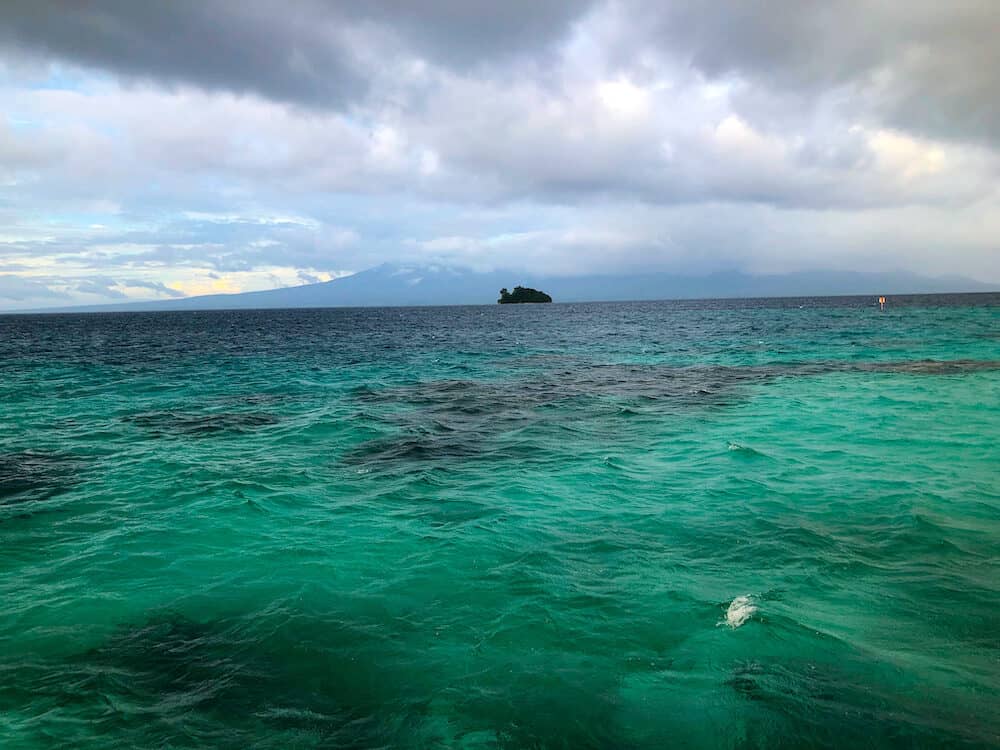
Solomon Islands National Museum
The Solomon Islands National Museum and Cultural Centre in Honiara is the perfect place to learn more about the region. Although the museum is small, it provides some great insights into the development of the Islands, the impact of war, and the influence of missionaries during the 19th century.
Open since 1969, it houses over 2,000 cultural items including audio-visual materials. You’ll find World War II relics, weaponry, old photographs, and natural history specimens.
The museum is open to the public from 9 a.m. to 4 p.m. on Weekdays, closing for an hour-long lunch at midday. You can also visit between 10 a.m. and 1 p.m. on Saturdays, or between 2 p.m. and 4 p.m. on Sundays.
Private tours are also available by appointment outside of these hours. It’s free to visit, although donations are accepted.
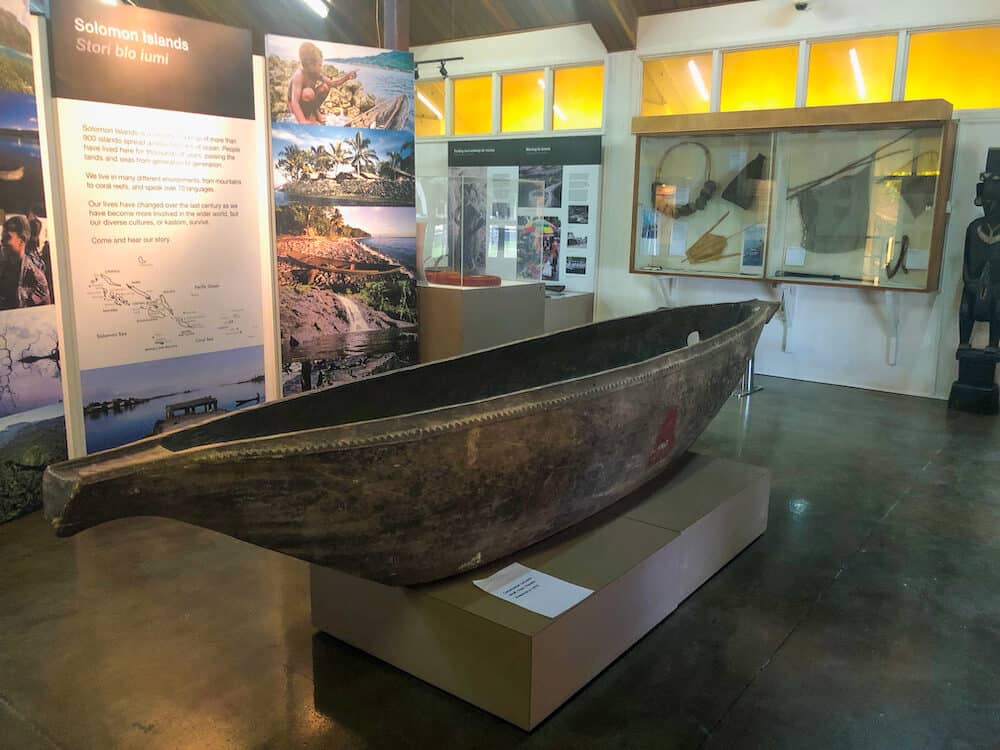
Honiara Central Market
Want to experience daily life in the Solomon Islands? Head to Honiara Central Market on Mendana Avenue, the largest outlet of fresh produce and fish in the country.
The Central Market holds incredible social and cultural significance and is a melting pot of diverse ethnic groups.
There are over a thousand vendors both inside and outside the covered market, with the majority of stalls run by women. Produce from throughout the islands is transported to this market, and many women will move to Honiara just to sell their products here.
Boats pull up at Iron Bottom Sound, the stretch of water at the front of the market, to unload their catches.
You can see how much freshness of fish is valued by those living here! In addition to fish, fruit and vegetables, flowers, clothing and other crafts are sold. While here, you can enjoy a local meal at an affordable price.
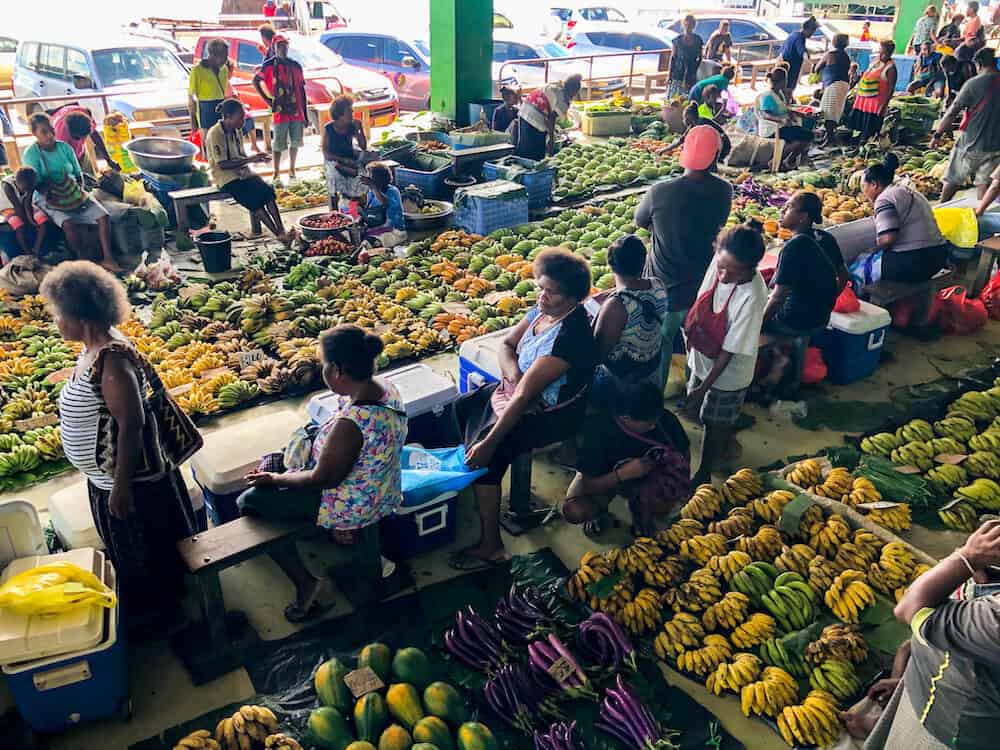
Tavanipupu Private Island Resort
Wondering where to stay? You won’t regret booking a bungalow at Tavanipupu Private Island Resort. It’s widely regarded as one of the best places to stay in the Solomon Islands, hosting such guests as Prince William and Princess Kate in 2012.
This tropical paradise is located in the Marau Sound, a four hour boat ride and a 25-minute flight from Honiara.
The resort is ideal for romantic getaways, honeymoons and even weddings. Experience the height of relaxation and indulge in a four-hand lomilomi massage on the beach, followed by a cocktail at the over water bar.
Once a week, dinners are prepared using traditional cooking methods. A motu, a stone oven heated by fire, draws out unique flavours in your food that you won’t forget. It’s the best way to enjoy fresh ingredients like seafood, sweet potato and cassava, which are wrapped and roasted in banana leaves.
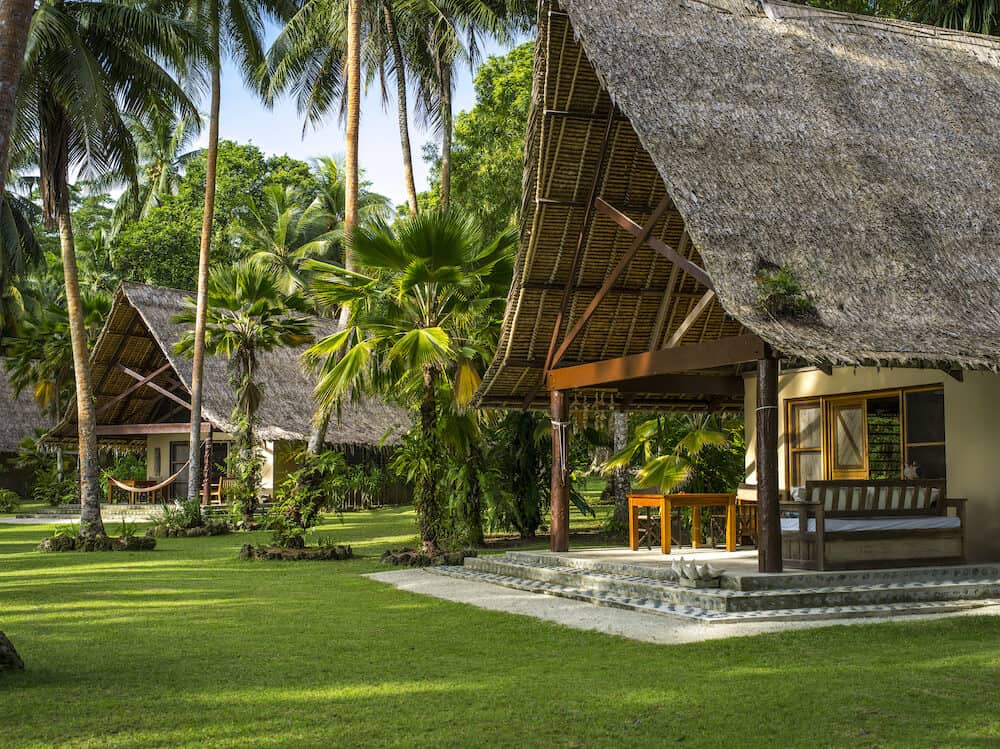
Marovo Lagoon
The Solomon Islands happens to be home to the longest saltwater lagoon in the world. Marovo Lagoon on the east side of New Georgia is 700 square metres of pristine turquoise waters.
The volcanic islands of Vagunu, New Georgia and Gatakae protect the lagoon, which has numerous small islands itself.
The double barrier reef system and its complex marine life make the lagoon an outstanding spot for scuba diving and snorkelling. As a bonus, there are typically few tourists here other than the guests.
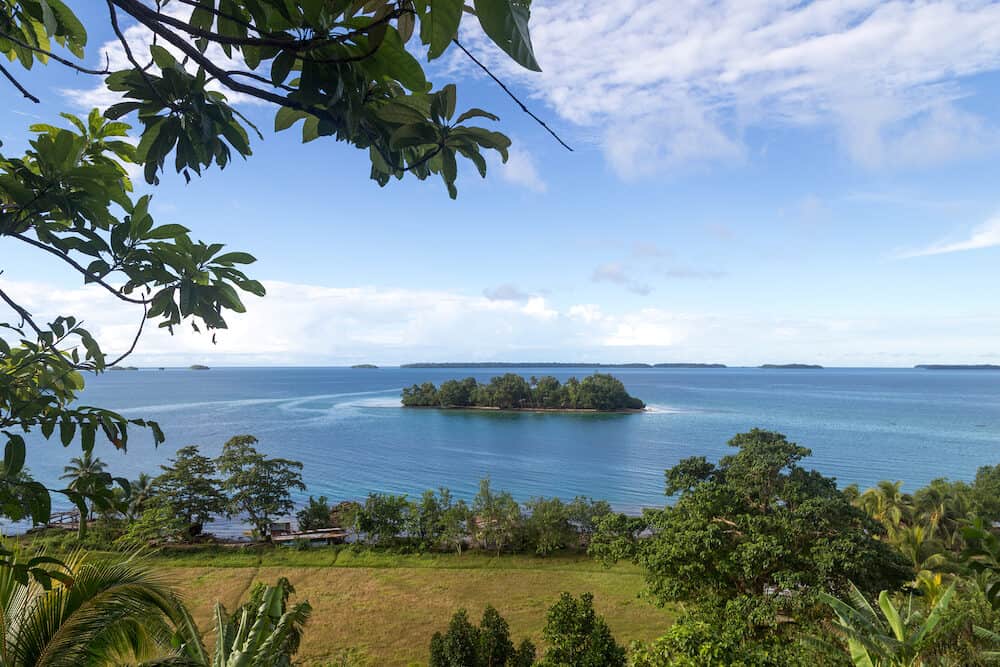
Peter Joseph WWII Museum
Continue learning about the history of the Solomon Islands at the Peter Joseph WWII Museum . This private museum in Munda opens at six in the morning, perfect for an early visit before a day of relaxing.
All World War II relics on display here were left behind by the Americans and the Japanese. See genuine machine guns, shells, helmets, knives and bullets, all from the battlefields.
Alphie Barney Paulsen, who runs the museum, has personally scoured the jungles for these artefacts.
The museum is named after the first dog tag he ever found, belonging to infantryman Peter Joseph Palatini. Paulsen has many fascinating stories to share with you about his discoveries and can tell you about the history behind many of the items.
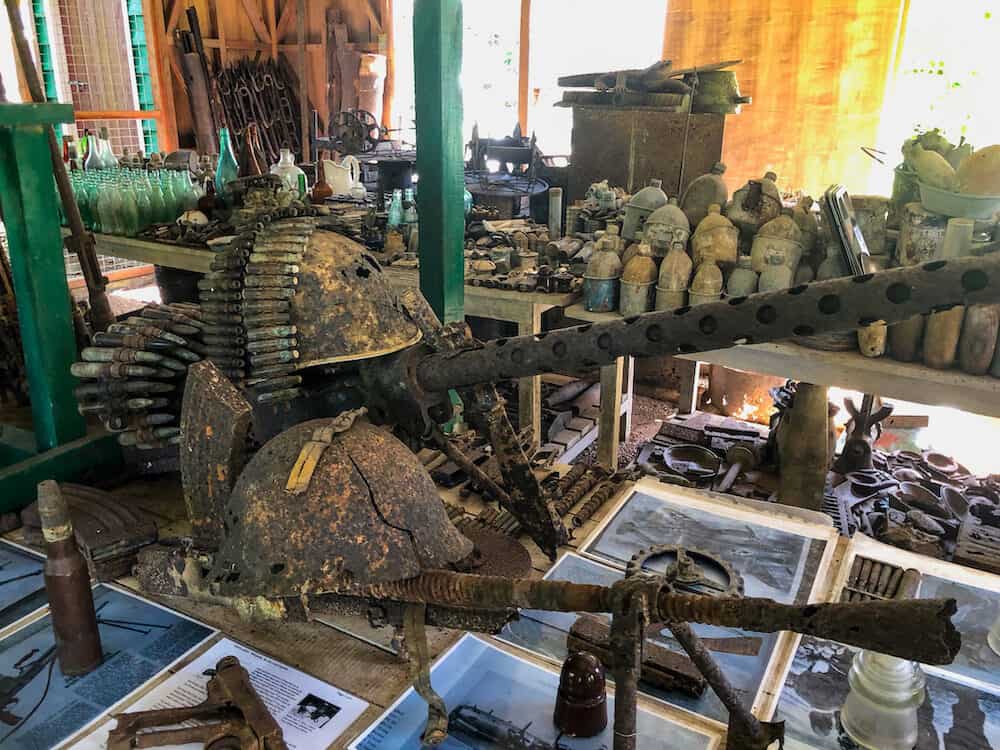
Santa Cruz Islands
The Santa Cruz Islands are 400 kilometres southeast of the main Solomon Islands chain. In fact, they are so far away that they are considered a part of the Vanuatu eco-region. The flight from Honiara to Nendo, the largest island in the area, takes two hours.
From Nendo, a popular place to visit is the Reef Islands. These densely populated islands are pristine and untouched, perfect for snorkelling, swimming and scuba diving.
To the north of the islands is Tinakula, an active conical stratovolcano rising 851 metres above sea level. Following an eruption in 1971, the volcanic island was completely evacuated and remains uninhabited.
As eruptions are regular, tourists enjoy sailing past to watch the volcano in action. Swimming to the shore and exploring on foot, however, isn’t recommended.
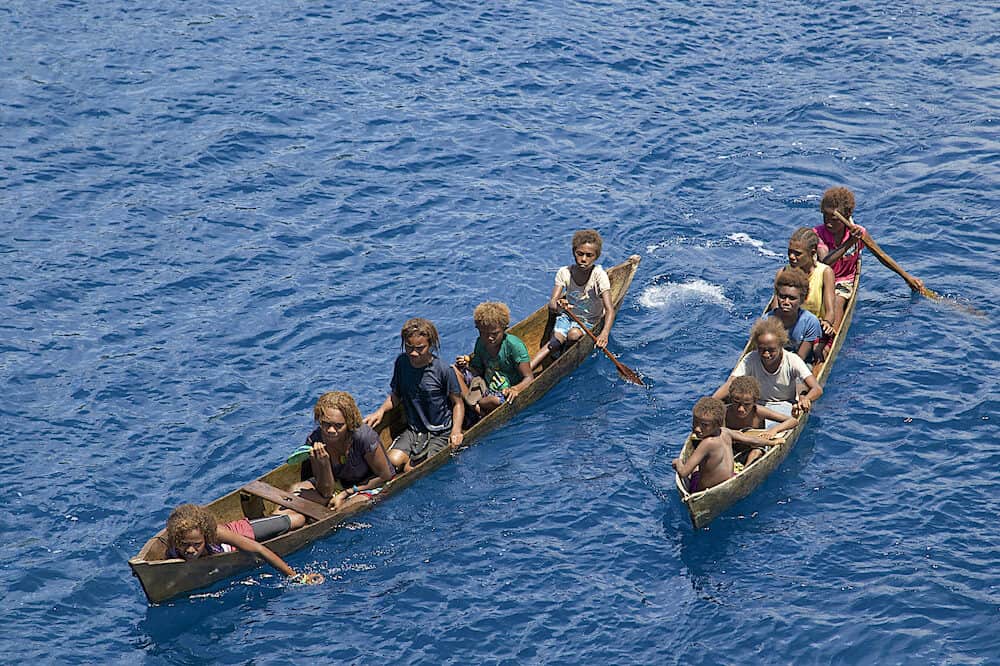
Vilu War Museum
To the west of Honiara is the Vilu War Museum , an open-air space hidden amongst the forest. Once you locate the museum, you’ll quickly notice the wrecks of aeroplanes, machine guns and vehicles abandoned by Japanese and American soldiers.
A Japanese Betty bomber, a Corsair, and well-preserved F4F Wildcat from the Battle of Guadalcanal are some of the pieces you will come across as you wander the grounds.
Anderson Dua, the owner of the museum, speaks with passion and detailed knowledge about each of the artifacts. In fact, he helped his uncle collect many of them as a child. If you wish, he is happy to walk around and have a chat with you.
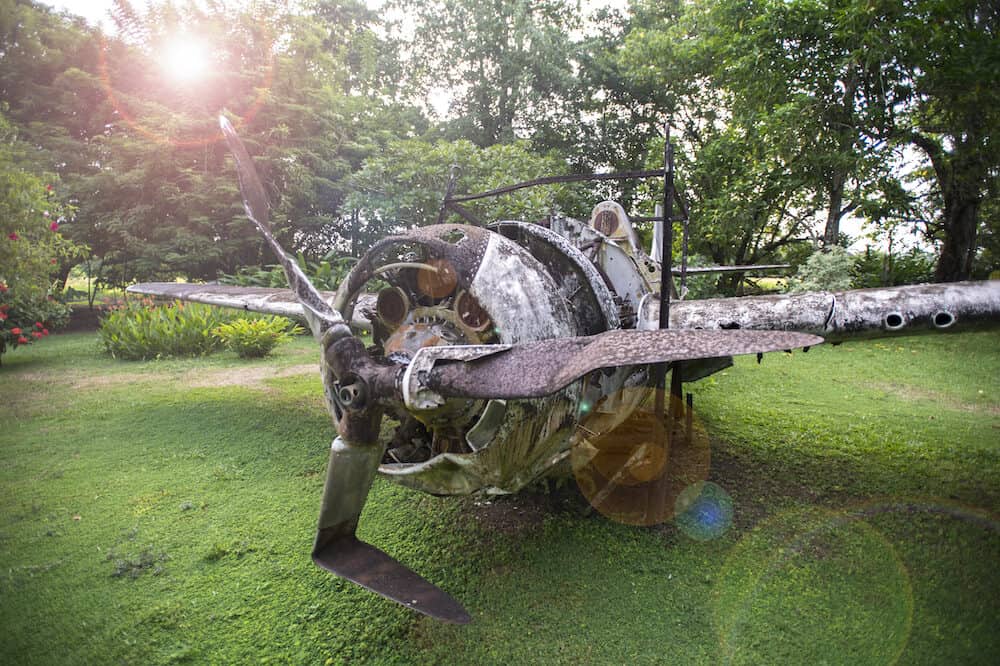
Njari Island
Njari Island may be tiny, but it is undoubtedly one of the best places in the Solomon Islands for snorkelling. Close to Ghizo, it is among the New Georgia Islands.
Due to the labyrinth of coral reefs, swimming up to the shore and approaching by boat can be tricky. Fortunately, there’s a wooden jetty that has you covered, and you can enter the water via the snorkel platform near the shore.
The natural landscape here is so incredible that you will find it difficult to leave! It is reported that up to 279 different species of fish have been spotted during a single dive here. Why not find out how many you can see during your visit?
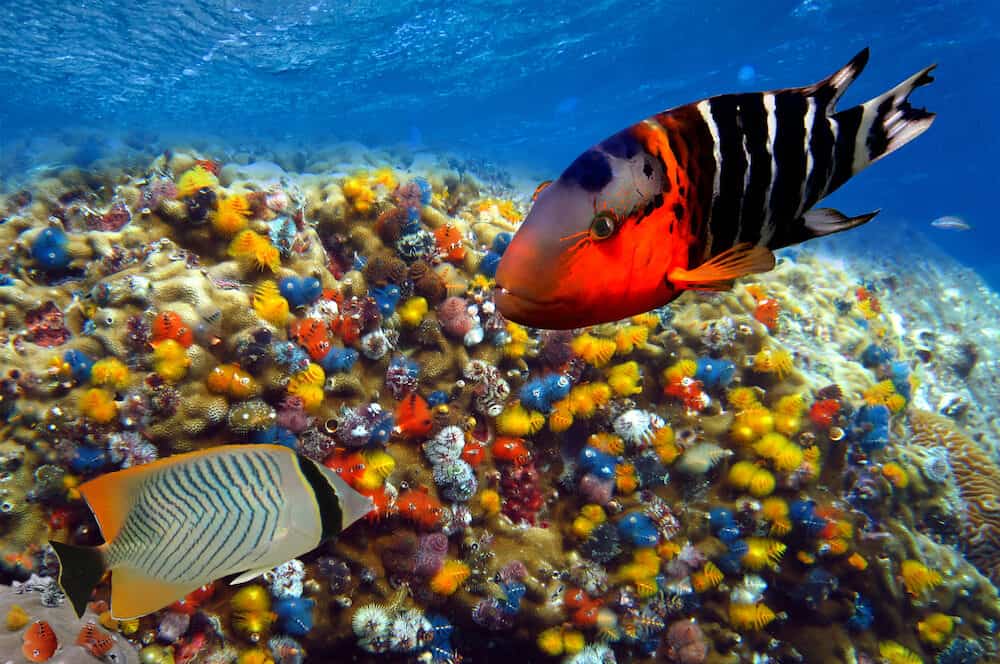
Bonegi Beach
Looking for a unique scuba diving experience? You will absolutely love exploring Bonegi, only a 12-kilometre drive from central Honiara.
Two Japanese freighters, named Bonegi I and Bonegi II , sunk right offshore in 1942 and remain in the same location today. Parts of Bonegi II can be seen poking up above the surface of the water, so you will know exactly where to begin your dive.
You can easily descend 50 metres deep without realising, so be sure to keep track of how far down you are going.
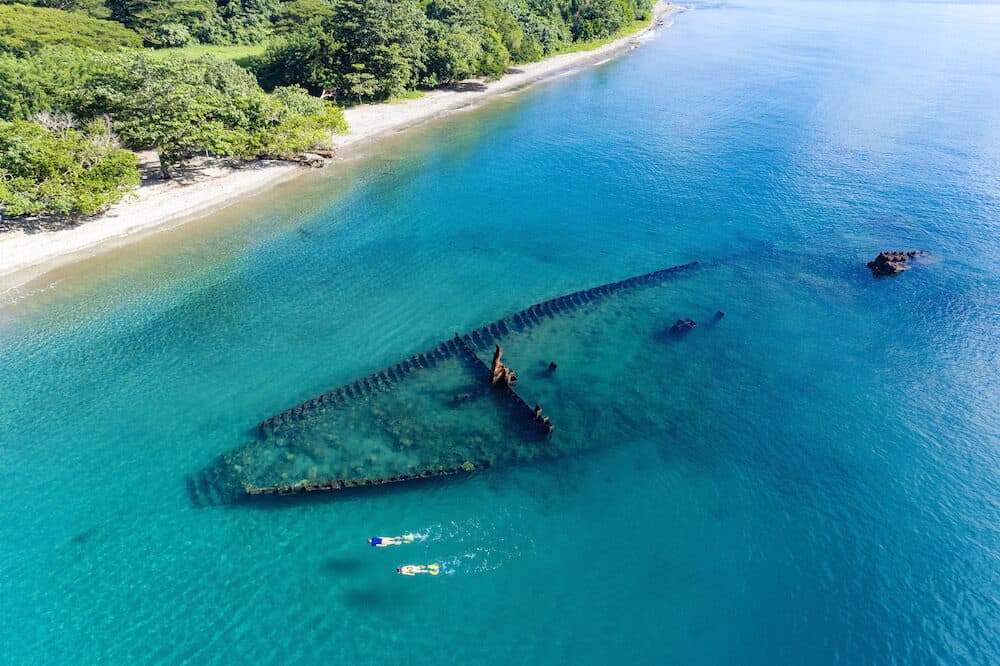
Imagination Island
Imagination Island is one of the most impressive Solomon Islands resorts. Take a 10-minute motor canoe ride from Gizo and you will reach the secluded paradise.
The island has just four reef bungalows built over the shallow waters. They can fit up to four people, ideal for both couples and families.
The bungalows are environmentally friendly too, with complimentary mineral and plant-based beauty products and compositing facilities.
Game fishing and reef trips are available, where you can catch such fish as tuna, marlin and mackerel. From November to April, nearby Pailongge and Titiana have excellent waves for surfers.
If you’re a beginner, you may prefer starting with stand up paddle boarding along the crystal clear waters. Even with your head above water, you’ll be able to spot turtles, manta rays, and maybe even some dolphins.
On land, learn about the local culture on a village tour and enjoy a cold beer, a cocktail or a fresh fruit juice at the Reef Bar.
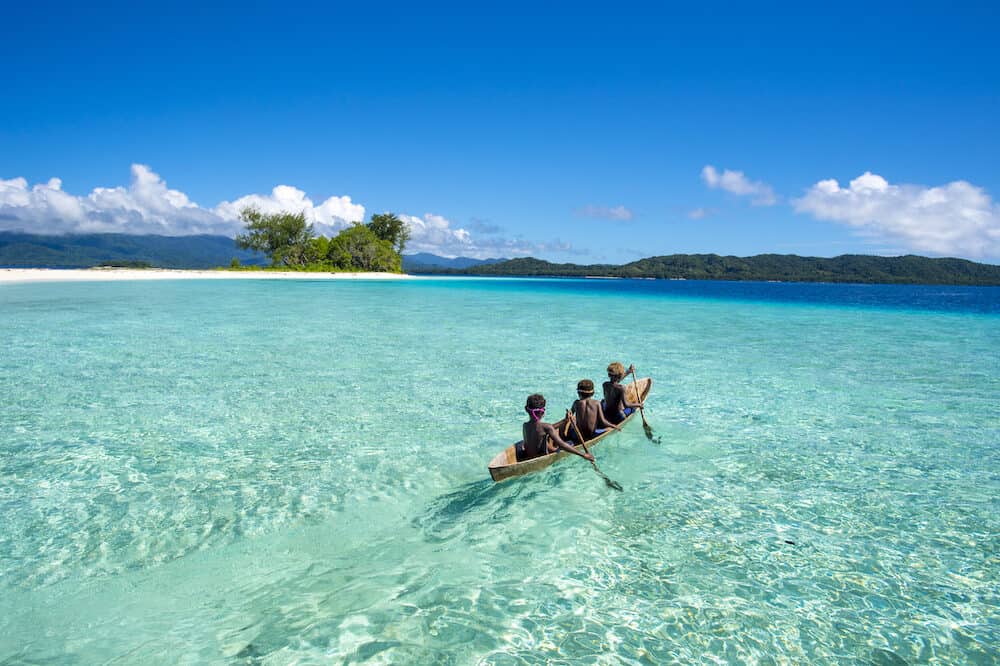
Kahove Waterfall
Also known as the Trenches Creek Falls, the Kahove Waterfall is made up of stunning rock formations and canyons.
The 40-metre-high waterfall can be located by following the river from the village of Kakambona, east of Honiara. Although the walk begins very straightforward, you will begin to climb over many rocks and shallow pools as you continue.
The 14-kilometre hike makes for a wonderful day trip, made even better by the opportunity to stop and take a swim at any point.
Rendova Island
A visit to Rendova Island will show you what a self-sufficient community looks like. The 5,000 or so residents of this tropical bushland have lived the same way for many centuries, fishing and growing their own food and carrying out the same day-to-day activities.
The Titiru Eco Lodge gives you a chance to experience this lifestyle with the friendly Islanders. The lodge doesn’t cater to Western expectations like WiFi, television, air conditioning or fancy cocktails.
Instead, your entertainment on the island takes the form of a cultural village tour, where you will see women weaving baskets from palm fronds and preparing food using traditional methods.
You can also spend your time here bird watching, wandering the mangroves, night crabbing, and watching a bamboo music performance.
As most of the people on this untouched island remain here their whole lives, the children are particularly excited to see and meet tourists. Their smiling faces will certainly make it hard to leave!
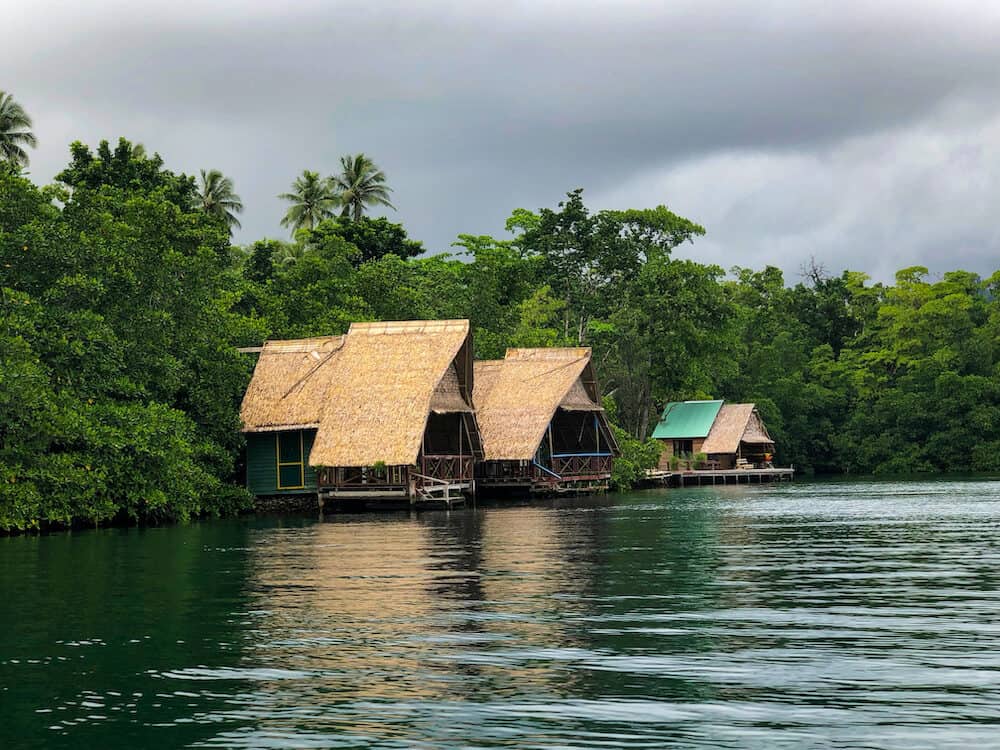
If you’d like to save it for later, please save it to Pinterest.
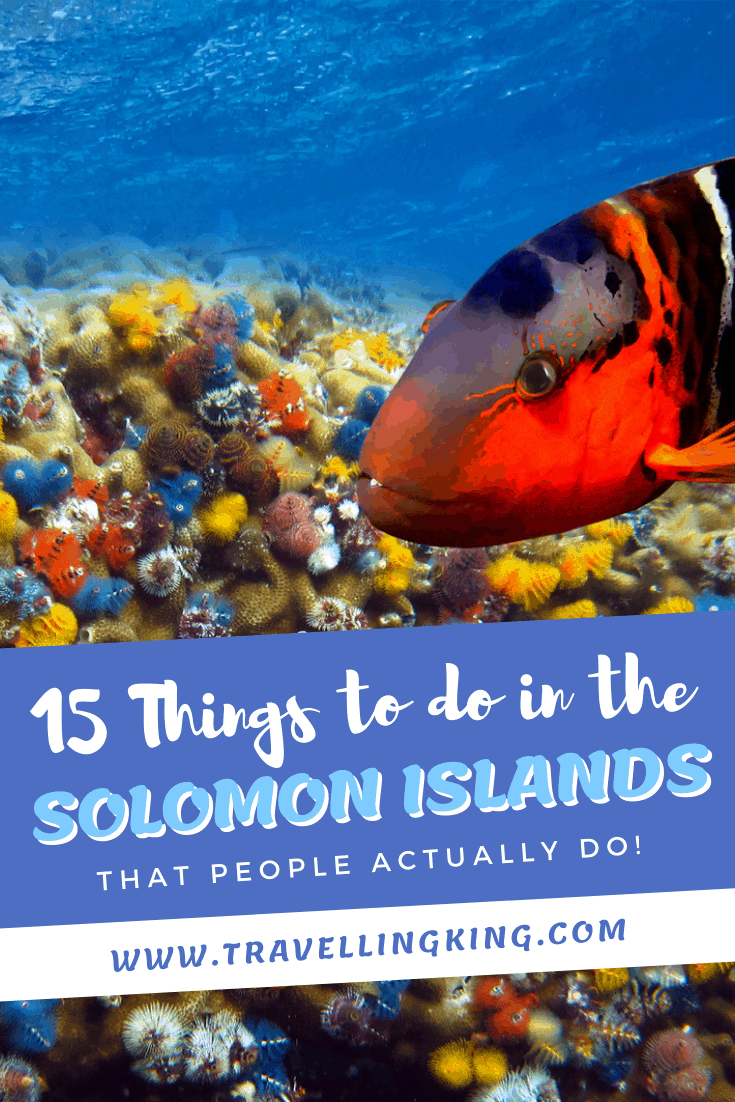
Sam, a seasoned traveler across four continents and 49 countries, is a leading authority in travel planning. Her website, Travelling King, offers tailored itineraries and expert guides for seamless trips. Sam's expertise in luxury travel, fast travel, and destination guides keeps her at the forefront of the travel community.
View all posts
Similar Posts
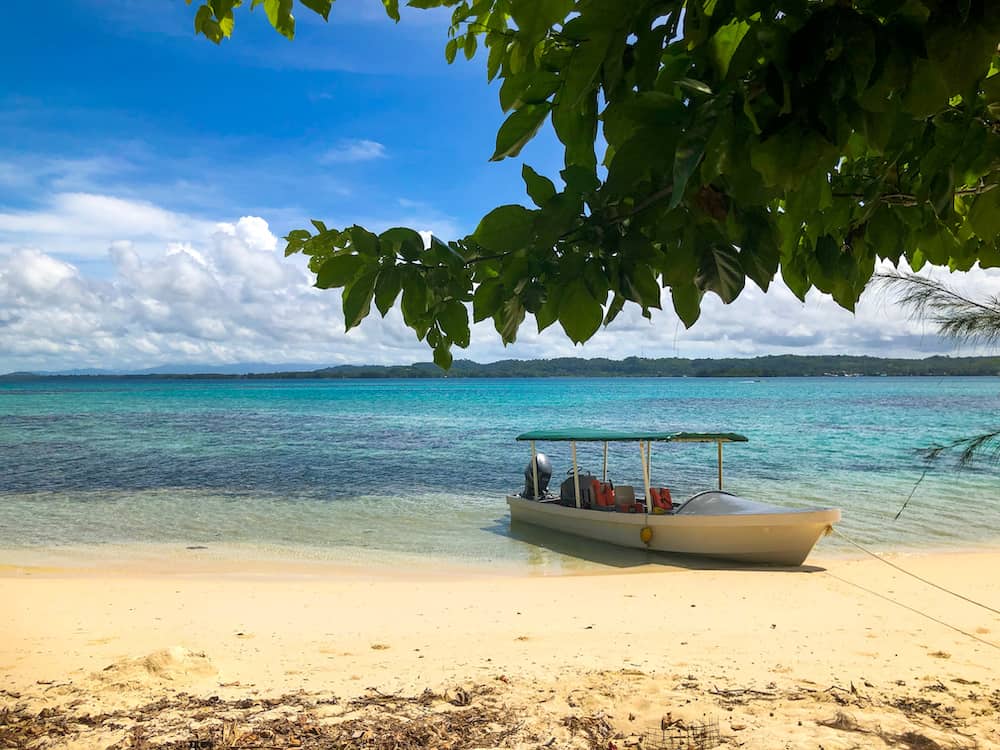
Ultimate Travel Guide to Solomon islands
Imagine you’re on a beautiful tropical island with crystal clear waters teeming with colourful tropical fish, in the distance…
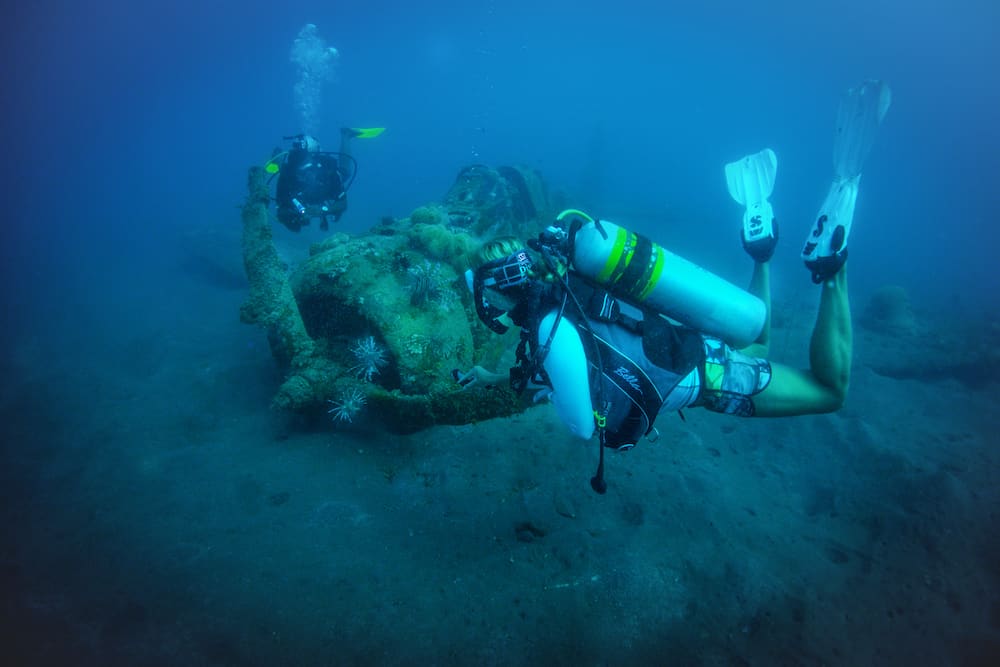
The Best Diving Spots in the Solomon Islands
The Solomon Islands is a South Pacific archipelago of more than 1,000 islands and coral atolls. Though it is…
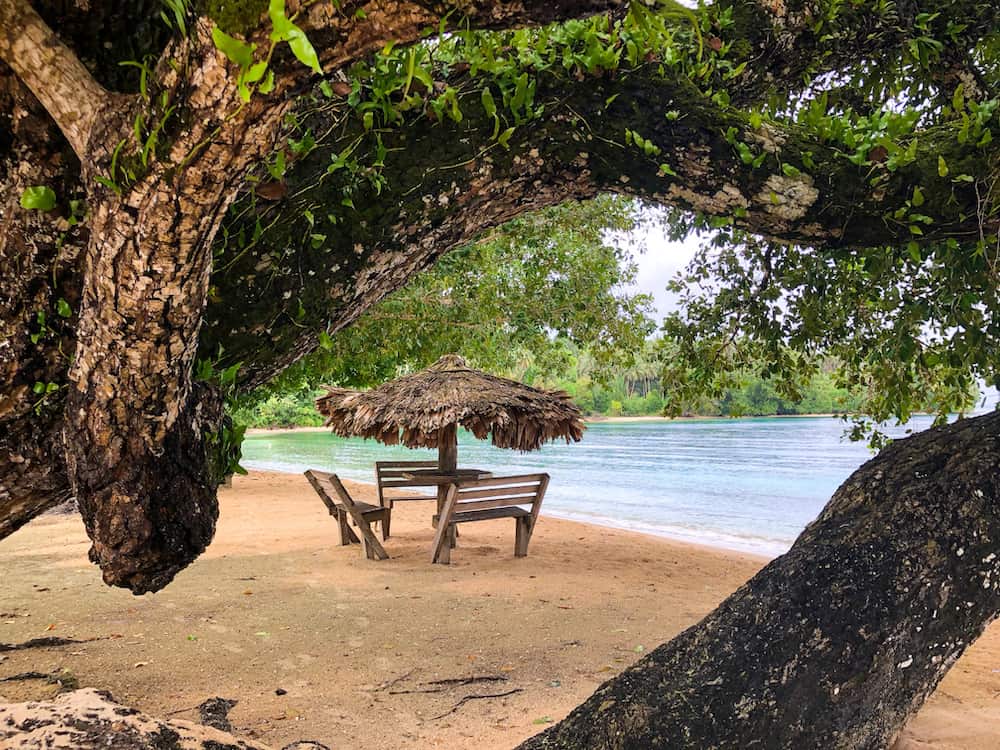
7 Day Itinerary to the Solomon Islands
Imagine crystal clear waters, lively coral, sandy uninhabited beaches lined with palm trees and sweet bungalows in the jungle…….
![how to visit solomon islands Where to stay in Solomon Islands [Best Places to Stay for 2024]](https://www.travellingking.com/wp-content/uploads/2019/08/Solomon-Islands-Fat-Boys-resort-in-Gizo.jpg)
Where to stay in Solomon Islands [Best Places to Stay for 2024]
Whether you are coming for the Scuba diving, historical sites, outdoor adventure, or just the laid-back atmosphere of the…
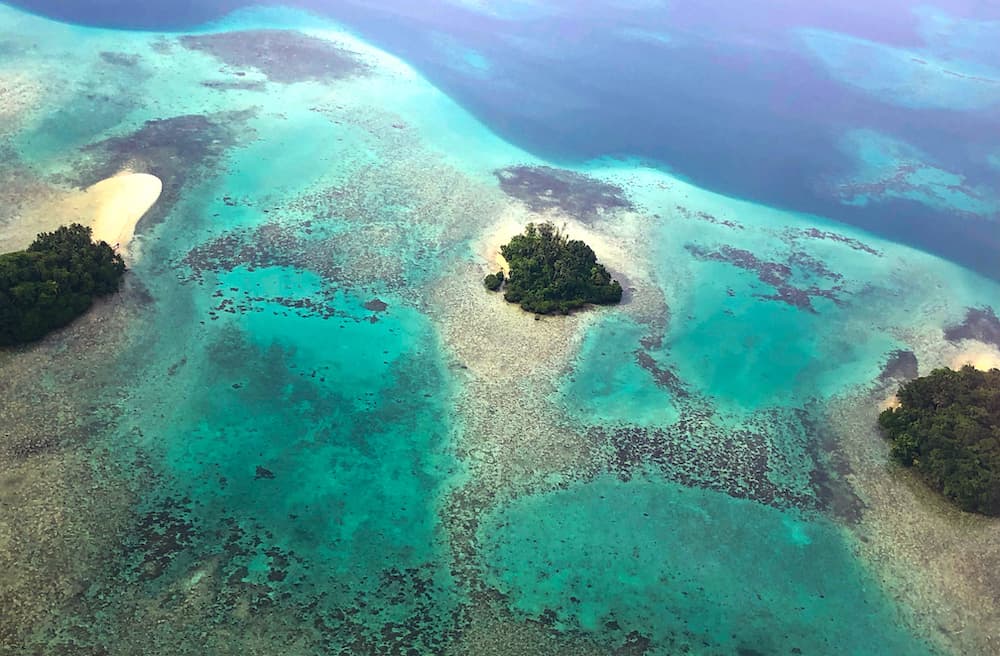
Everything you need to know about the Solomon Islands
The Solomon Islands is made up of 992 Islands and is the seventh least travelled country in the world…
- Travel Planning Guide
Solomon Islands Travel Budget - Visit Solomon Islands on a Budget or Travel in Style
- Solomon Islands Costs

- Is the Solomon Islands Expensive?
- How much does a trip to the Solomon Islands cost?
- Solomon Islands Tour Prices
- How much does it cost to travel to the Solomon Islands? (Average Daily Cost)
- The Solomon Islands trip costs: one week, two weeks, one month
How much do package tours cost in the Solomon Islands?
Is the solomon islands expensive to visit.
- How much do I need for a trip to the Solomon Islands?
- Accommodation, Food, Entertainment, and Transportation Costs
- Travel Guide
How much does it cost to travel to the Solomon Islands?
You should plan to spend around $167 (SI$1,414) per day on your vacation in the Solomon Islands. This is the average daily price based on the expenses of other visitors.
Past travelers have spent, on average for one day:
- $31 (SI$263) on meals
- $22 (SI$184) on local transportation
- $129 (SI$1,089) on hotels
A one week trip to the Solomon Islands for two people costs, on average, $2,339 (SI$19,796) . This includes accommodation, food, local transportation, and sightseeing.
All of these average travel prices have been collected from other travelers to help you plan your own travel budget.
- Travel Style: All Budget (Cheap) Mid-Range Luxury (High-End)
- Average Daily Cost Per person, per day $ 167 SI$ 1,414
- One Week Per person $ 1,170 SI$ 9,898
- 2 Weeks Per person $ 2,339 SI$ 19,796
- One Month Per person $ 5,013 SI$ 42,419
- One Week For a couple $ 2,339 SI$ 19,796
- 2 Weeks For a couple $ 4,679 SI$ 39,591
- One Month For a couple $ 10,026 SI$ 84,838
How much does a one week, two week, or one month trip to the Solomon Islands cost?
A one week trip to the Solomon Islands usually costs around $1,170 (SI$9,898) for one person and $2,339 (SI$19,796) for two people. This includes accommodation, food, local transportation, and sightseeing.
A two week trip to the Solomon Islands on average costs around $2,339 (SI$19,796) for one person and $4,679 (SI$39,591) for two people. This cost includes accommodation, food, local transportation, and sightseeing.
Please note, prices can vary based on your travel style, speed, and other variables. If you're traveling as a family of three or four people, the price per person often goes down because kid's tickets are cheaper and hotel rooms can be shared. If you travel slower over a longer period of time then your daily budget will also go down. Two people traveling together for one month in the Solomon Islands will often have a lower daily budget per person than one person traveling alone for one week.
A one month trip to the Solomon Islands on average costs around $5,013 (SI$42,419) for one person and $10,026 (SI$84,838) for two people. The more places you visit, the higher the daily price will become due to increased transportation costs.
Organized tours are usually more expensive than independent travel, but offer convenience and peace of mind that your trip has been planned by a travel expert.
The average price for an organized tour package in the Solomon Islands is $350 per day. While every tour varies by total price, length, number of destinations, and quality, this is the daily average price based on our analysis of available guided tours.
- Cultural Solomon Islands 8 Days - 1 Destinations $ 2,800
Independent Travel
Traveling Independently has many benefits including affordabilty, freedom, flexibility, and the opportunity to control your own experiences.
All of the travel costs below are based on the experiences of other independent travelers.
The Solomon Islands is a moderately priced destination to visit. It's about average with most other countries for travel costs. The prices for food, accommodation, and transportation are all fairly reasonable.
Within the Pacific, which is known to be an expensive region, the Solomon Islands is moderately priced compared to the other countries. The overall cost of travel here is comparable to French Polynesia or Fiji.
For more details, see Is the Solomon Islands Expensive?
How much money do I need for a trip to the Solomon Islands?
The average Solomon Islands trip cost is broken down by category here for independent travelers. All of these Solomon Islands travel prices are calculated from the budgets of real travelers.
Accommodation Budget in the Solomon Islands
Average daily costs.
Calculated from travelers like you
The average price paid for one person for accommodation in the Solomon Islands is $64 (SI$544). For two people sharing a typical double-occupancy hotel room, the average price paid for a hotel room in the Solomon Islands is $129 (SI$1,089). This cost is from the reported spending of actual travelers.
- Accommodation 1 Hotel or hostel for one person $ 64 SI$ 544
- Accommodation 1 Typical double-occupancy room $ 129 SI$ 1,089
Hotel Prices in the Solomon Islands
Looking for a hotel in the Solomon Islands? Prices vary by location, date, season, and the level of luxury. See below for options.
Find the best hotel for your travel style.
Kayak helps you find the best prices for hotels, flights, and rental cars for destinations around the world.
Local Transportation Budget in the Solomon Islands
The cost of a taxi ride in the Solomon Islands is significantly more than public transportation. On average, past travelers have spent $22 (SI$184) per person, per day, on local transportation in the Solomon Islands.
- Local Transportation 1 Taxis, local buses, subway, etc. $ 22 SI$ 184
Food Budget in the Solomon Islands
While meal prices in the Solomon Islands can vary, the average cost of food in the Solomon Islands is $31 (SI$263) per day. Based on the spending habits of previous travelers, when dining out an average meal in the Solomon Islands should cost around $12 (SI$105) per person. Breakfast prices are usually a little cheaper than lunch or dinner. The price of food in sit-down restaurants in the Solomon Islands is often higher than fast food prices or street food prices.
- Food 2 Meals for one day $ 31 SI$ 263
Entertainment Budget in the Solomon Islands
Entertainment and activities in the Solomon Islands typically cost an average of $24 (SI$204) per person, per day based on the spending of previous travelers. This includes fees paid for admission tickets to museums and attractions, day tours, and other sightseeing expenses.
- Entertainment 1 Entrance tickets, shows, etc. $ 24 SI$ 204
Alcohol Budget in the Solomon Islands
The average person spends about $11 (SI$91) on alcoholic beverages in the Solomon Islands per day. The more you spend on alcohol, the more fun you might be having despite your higher budget.
- Alcohol 2 Drinks for one day $ 11 SI$ 91
The Solomon Islands On a Budget
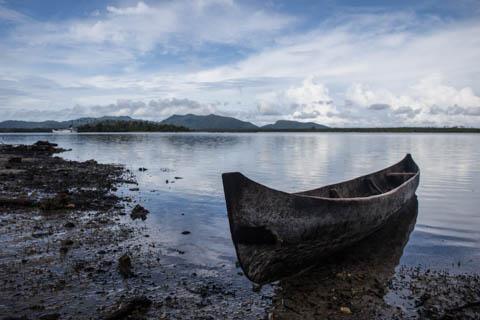
At a Glance
Top tourist attractions, popular foods.
We've been gathering travel costs from tens of thousands of actual travelers since 2010, and we use the data to calculate average daily travel costs for destinations around the world. We also systematically analyze the prices of hotels, hostels, and tours from travel providers such as Kayak, HostelWorld, TourRadar, Viator, and others. This combination of expenses from actual travelers, combined with pricing data from major travel companies, gives us a uniqe insight into the overall cost of travel for thousands of cities in countries around the world. You can see more here: How it Works .
Subscribe to our Newsletter
By signing up for our email newsletter, you will receive occasional updates from us with sales and discounts from major travel companies , plus tips and advice from experienced budget travelers!

Search for Travel Costs
Some of the links on this website are sponsored or affiliate links which help to financially support this site. By clicking the link and making a purchase, we may receive a small commission, but this does not affect the price of your purchase.
Travel Cost Data
You are welcome to reference or display our travel costs on your website as long as you provide a link back to this page .
A Simple Link
For a basic link, you can copy and paste the HTML link code or this page's address.
Travel Cost Widget
To display all of the data, copy and paste the code below to display our travel cost widget . Make sure that you keep the link back to our website intact.
- Privacy / Terms of Use
- Activities, Day Trips, Things To Do, and Excursions

10 Least Visited Countries Around The World
- Tonga: Remote island nation with untouched beauty, clear waters perfect for snorkeling and whale watching, and a chance to experience a traditional way of life. Authentic and intimate, away from mass tourism. Total visitors yearly: 94,000.
- Comoros: African archipelago untouched by mass tourism, offering dramatic volcanic landscapes, pristine beaches, and a unique cultural tapestry. Rich history, friendly locals, and hidden beauty. Total visitors yearly: 45,100.
- Sao Tome and Principe: Smallest country off the western coast of Africa, known for its rich biodiversity, volcanic islands, and Portuguese colonial history. Ideal for eco-conscious travelers, with gorgeous beaches, hidden waterfalls, and a peaceful atmosphere. Total visitors yearly: 34,900.
Readers should prepare to venture off the beaten path and discover the world's least visited countries where the footprints of tourism are scarcely seen. In contrast to some of the most visited natural wonders of the world , these remote and often overlooked destinations offer a unique allure, untouched by mass tourism and brimming with undiscovered beauty.
In these lesser-known corners of the globe, the reasons for their sparse visitation are as varied as the landscapes themselves. Some are nestled in the most remote parts of the world, while others have remained under the radar, shrouded in mystery and intrigue.
It should be noted that the visitor statistics used in this article were taken from just before the COVID-19 pandemic as, for obvious reasons, travel was limited around the globe during that period. Also, as is expected, even in 2023, many places around the world are only just starting to bounce back from the impact of the pandemic. Here are the 10 least visited countries around the world.
Related: The 11 Least-Visited Countries In Asia (& Why You Should Go)
Total Number Of Visitors Yearly: 94,000
Tonga, an archipelago in the South Pacific, remains a hidden treasure on the world travel map. Known as the "Friendly Islands," Tonga provides a rare glimpse into a slower, more traditional way of life. This Polynesian kingdom is the only Pacific nation never fully colonized by foreigners, allowing its ancient culture and customs to flourish. Tonga’s clear waters are perfect for snorkeling and whale watching, offering one of the few places in the world where visitors can swim with humpback whales . Its scenic beaches, volcanic landscapes, and lush rainforests are ideal for explorers seeking a peaceful yet adventurous retreat. Tonga’s lack of commercial tourism adds to its charm, offering visitors a truly authentic and intimate experience in search of serenity and cultural richness.
- Total Country Population: 108,156
- When To Visit: Tonga’s dry season lasts from May to November , making this period the ideal time to visit if wanting to experience the beach life while on vacation
Total Number Of Visitors Yearly: 45,100
Comoros, an archipelago off the east coast of Africa, remains largely untouched by mass tourism. Its blend of African, Arab, and French influences creates a unique cultural tapestry. The islands offer dramatic volcanic landscapes, including the active Mount Karthala volcano , as well as pristine beaches and coral reefs. Comoros is known for its production of ylang-ylang and other aromatic plants, contributing to its nickname “The Perfume Isles.” The country’s friendly locals and rich history, including sultanate palaces and ancient ruins, provide a captivating experience for those seeking an off-the-beaten-path adventure .
- Total Country Population: 858,591
- When To Visit: May to October is when Comoros is the most dry and temperatures are coolest , making this the recommended period to visit
Sao Tome and Principe
Total number of visitors yearly: 34,900.
Sao Tome and Principe, located off the western coast of Africa, is the region’s smallest country . These volcanic islands are known for their rich biodiversity, including endemic bird species and lush rainforests. The islands’ Portuguese colonial history is evident in its architecture, cuisine, and coffee plantations. Sao Tome and Principe offers gorgeous beaches, hiking through the jungle to discover hidden waterfalls and a peaceful atmosphere. The country’s commitment to sustainable tourism makes it an ideal destination for eco-conscious travelers.
- Total Country Population: 233,754
- When To Visit: While the numbers might suggest otherwise, this nation has a long period when it could be advantageous to visit, including the Summer and Spring seasons
Related: Remote & Tourist-Less: This Is The World's Least Visited Country
Solomon Islands
Total number of visitors yearly: 28,930.
The Solomon Islands, a nation of hundreds of islands in the South Pacific , is largely unexplored by tourists. Its rich biodiversity, both on land and underwater, makes it a haven for nature lovers and divers. The islands played a significant role in World War II , and relics from the war can be seen both on land and underwater. The Solomon Islands’ diverse culture, with traditional customs and languages, adds depth to the visitor experience. The islands offer pristine beaches, world-class surfing, and opportunities to engage with local communities, providing a blend of adventure, history, and cultural immersion.
- Total Country Population: 747,313
- When To Visit: The temperature and humidity are at their lowest from May to October , making this period the best time to visit
Total Number Of Visitors Yearly: 20,976
Montserrat, a British Overseas Territory in the Caribbean, is known as the “Emerald Isle of the Caribbean” due to its lush, green mountains and Irish heritage. The island’s population and infrastructure were significantly impacted by the Soufrière Hills volcano eruptions in the 1990s, leading to a decline in tourism . Today, Montserrat offers a unique opportunity to witness the effects of volcanic activity with guided tours of the buried city of Plymouth. Beyond the curiosity of the volcano, there is much worth experiencing in this Caribbean paradise . The island's untouched beaches, hiking trails, and vibrant cultural scene, including calypso music and festivals, make it an intriguing destination for adventurous travelers.
Visitors checking out Montserrat are in for a treat. They can discover the striking black sand beaches created by volcanic activity. Guests can also visit places like Woodlands Beach or Black Sand Beach for a different beach experience.
- Total Country Population: 4,380
- When To Visit: Montserrat’s dry season lasts from December to June . Because of this, visitors will likely be able to make the most of the natural beauty on display if vacationing during this period
Total Number Of Visitors Yearly: 12,000
Kiribati, spread across the equator in the central Pacific Ocean, is one of the world’s least visited countries, primarily due to its remoteness. This nation of 33 atolls is known for its vibrant culture, unspoiled beaches, and abundant marine life . The Phoenix Islands Protected Area, one of the largest marine protected areas in the world , offers exceptional opportunities for diving and wildlife observation. Kiribati’s rich history and traditions are evident in its music, dance, and handicrafts. There’s also much more to this nation than meets the eye of visitors and tourists . The threat of rising sea levels makes Kiribati a poignant and vital destination for travelers looking to understand the impacts of climate change.
- Total Country Population: 134,458
- When To Visit: Kiribati’s dry season lasts from June to October , making this period the best time to visit
Related: Belize's El Pilar Was One Of The Largest Mayan Cities (But Is Now One Of The Least Visited)
Nauru, the third smallest country in the world , is located in Micronesia in the Central Pacific. Its lack of tourist infrastructure and remote location make it one of the least visited nations. This tiny island nation, encircled by a coral reef, has a unique landscape that includes limestone formations and white sandy beaches. The country’s tumultuous history, primarily shaped by phosphate mining , is reflected in its environment and culture. Nauru offers a rare glimpse into a country finding its way after ecological and economic hardships, providing an unusual but insightful travel experience.
- Total Country Population: 12,824
- When To Visit: As with most of the Pacific nations mentioned thus far, the best time to visit is the dry season, which, for Nauru, lasts from May to October
The Marshall Islands
Total number of visitors yearly: 10,771.
The Marshall Islands, situated in the central Pacific Ocean, remain largely off the tourist map due to their remote location. This archipelago of coral atolls and volcanic islands is known for its rich marine biodiversity, making it a paradise for scuba divers. The Bikini Atoll, a UNESCO World Heritage site, is particularly famous among wreck divers . The islands also hold significant historical importance due to their role in World War II and nuclear testing. Visitors can explore local Marshallese culture and learn about the island’s complex history. The Marshall Islands offer an authentic and untouched Pacific experience away from the crowds.
- Total Country Population: 42,172
- When To Visit: December to April is typically when the Marshall Islands experience a dry season , making it the best time to travel and experience the best of what the nation has to offer
Total Number Of Visitors Yearly: 3,600
Tuvalu, a Polynesian island nation located in the Pacific Ocean, makes this list of the least visited countries in the world due, like Niue, to its isolation and lack of tourist infrastructure. This unspoiled paradise boasts a serene environment with pristine beaches, turquoise lagoons, and loads to do . Visitors can experience the traditional Polynesian lifestyle, witness local crafts, and enjoy the hospitality of the Tuvaluan people. The country's low-lying atolls and reef islands are a haven for diverse marine life, offering excellent opportunities for fishing and diving. Despite its beauty, Tuvalu’s future is threatened by rising sea levels , adding a sense of urgency to visit this disappearing paradise.
Understand that Tuvalu is a small and remote nation with limited infrastructure. Expect basic facilities and plan accordingly.
- Total Country Population: 11,431
- When To Visit: Tuvalu’s dry season lasts from May to October , making this the best time to visit
Total Number Of Visitors Yearly: 1,725
Niue, a small island nation in the South Pacific, is one of the world's least visited countries, mainly due to its remote location and limited accessibility. This hidden gem offers crystal-clear waters, rugged limestone cliffs, and a diverse underwater world perfect for snorkeling and diving enthusiasts. Niue is one of the few places visitors can swim up close with humpback whales. However, these things are just the tip of the iceberg, as this beautiful country is full of unforgettable experiences . The island's unique culture, a blend of traditional Polynesian customs and modern influences, can be explored through village tours and cultural festivals. Niue's commitment to sustainability has led it to become the world’s first ‘Dark Sky Nation,’ offering spectacular stargazing opportunities . The lack of mass tourism here provides a tranquil environment for a genuinely off-the-grid escape.
- Total Country Population: 1,935
- When To Visit: Summer is one of the best times to visit as it is peak whale-watching season
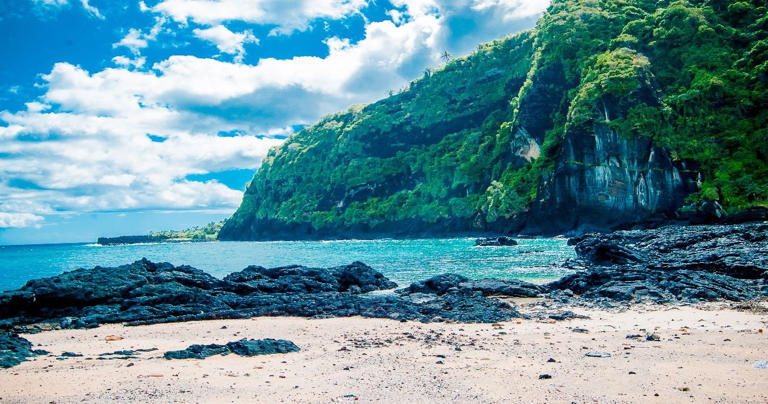
Barana Nature Park Visit Reinforces Conservation Lessons for Solomon Islands stakeholders

4 April 2024, Honiara Solomon Islands – Stakeholders from Government ministries, provincial councils, NGOs and the private sector in the Solomon Islands experienced biodiversity conservation in action first-hand during animmersive excursion to Barana Nature Park recently. Spanning over 300 hectares of intact lowland rainforest, Barana Nature Park showcases the rich natural heritage of the Solomon Islands. It provides critical habitat for endemic and threatened species like the iconic Guadalcanal monkey-faced bat. The park is managed jointly by the local landowning communities and The Nature Conservancy.
The field trip was on the final day of the 5-day environmental governance training by the Secretariat of the Pacific Regional Environment Programme (SPREP).
The field trip allowed participants to observe sustainable eco-tourism practices and community-based conservation initiatives in action.
"Visiting this stunning forest reserve reinforced the importance of protecting biodiversity through sustainable practices," said Ms Julia Aimaea, an Officer with the Ministry of Forestry. "As we apply environmental assessment tools, it's vital to truly understand the ground realities."
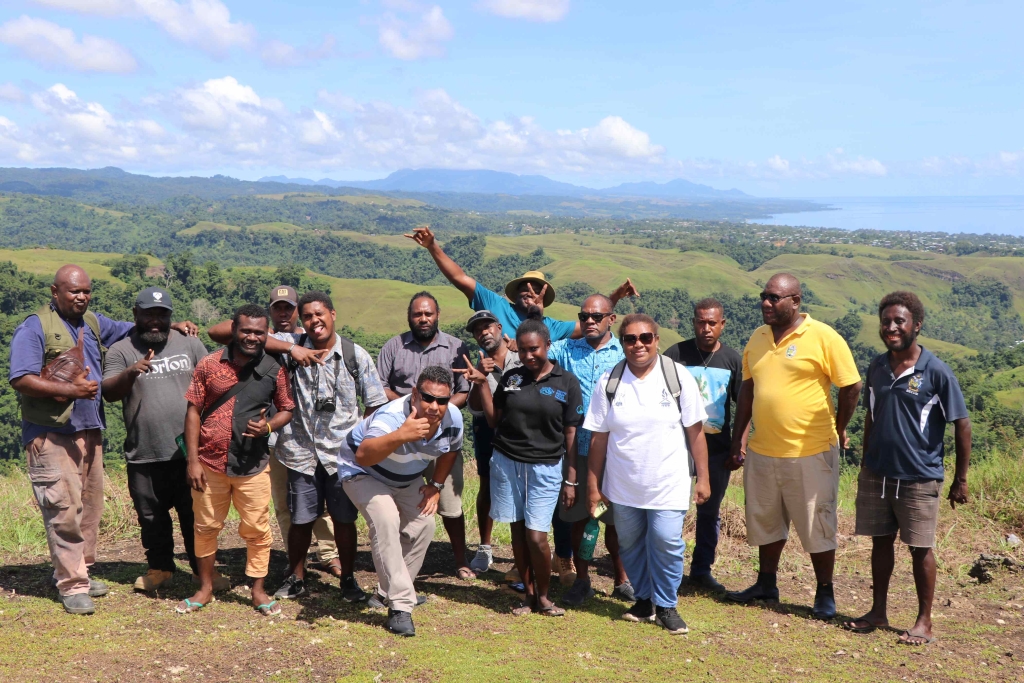
Guided by local a community guide, participants trekked and were driven through the park to learn of the Barana community’s conservation initiatives and the challenges of curbing threats like illegal logging and encroachment.
"This direct exposure enables environmental officers and decision-makers to appreciate the incredible natural assets we are tasked with preserving through robust governance processes," said Mr Puta Tofinga, SPREP's Environmental Assessment and Planning Officer.
The field experience complemented workshop sessions on utilising spatial data from GIS mapping to identify and safeguard sensitive ecological areas when evaluating development proposals through Environmental Impact Assessment (EIA) processes.
By enhancing skills in enforcing the Solomon Islands' Environment Act and EIA regulations, SPREP's capacity building initiative has strengthened environmental guardianship and governance capabilities among key stakeholders responsible for the nation's unrivalled natural heritage.
The training workshop was supported through the Pacific BioScapes Programme, ACPMEAs3 project and EREPA project in partnership with the Solomon Island Ministry of Environment, Climate Change and Environment.
Chinese security delegation visits Tonga to provide police 'assistance' ahead of Pacific Islands Forum
China is maintaining its policing push into the Pacific, sending a delegation from the Ministry of Public Security (MPS) to Tonga ahead of a critical regional leaders meeting in the capital Nuku'alofa later this year.
Australian officials say the visit is another sign that China remains intent on embedding officers and training teams in police forces across the Pacific, despite public criticism from the US and Australia.
Tonga's Police Commissioner, Shane McLennan, told the ABC that the delegation of six officers came from Shandong Province and were "following up" the meeting China hosted with Pacific police ministers and chiefs in December last year .
The Commissioner said while the MPS delegation had a "broader" agenda on police cooperation, the main discussions were on how Chinese police could help Tonga host the Pacific Islands Forum (PIF) leaders' meeting in August.
"At the moment it is totally focused on what assistance they can provide to assist us as Tonga police to deliver the PIF leaders meeting," Mr McLennan told the ABC.
He said China was also willing to donate police vehicles and motorbikes to Tonga -- much like it has in Solomon Islands — to help ensure the event ran smoothly.
"We are looking at assistance with resources ... primarily centred around vehicles and motorcycles for Tonga police, and potentially some training in motorcade operations, all focused on security operations for PIF," he said.
The ABC has also been told that China has offered to help Tonga refurbish and develop venues for the PIF leaders' meetings, as well as offering to assist with transport for visiting dignitaries, and potentially providing audiovisual equipment.
Tonga's Prime Minister Hu'akavameiliku Siaosi Sovaleni told journalists in Nuku'alofa that China's support for the event would be welcome.
"We've discussed the numbers of police motorcycles and supporting vehicles (to be handed over)," he said.
The prime minister also played down the significance of China's offer to assist, suggesting that Australia and other nations had "no reason to be concerned".
"If it's training and if (Tonga) police deem it to be necessary, of course we will take up the offer," he said.
Australia sceptical of China's motives
Australia remains deeply suspicious of China's attempts to embed itself as a regional policing partner, warning Pacific nations privately that Beijing could use its presence to monitor both Chinese expatriates and local elites, as well as shaping the political and security environment in its favour.
Pacific Minister Pat Conroy declared last month that China should have "no role" policing Pacific island states, saying that security assistance was best provided by other members of the "Pacific family" including Australia and New Zealand.
Shadow Foreign Affairs Minister Simon Birmingham told the ABC's Afternoon Briefing that Tonga should not need to turn to countries outside the Pacific Islands Forum for help with security for the meeting.
"It is deeply concerning [that there's] any suggestion that security or other resources for the event would be supplied by any country outside the Pacific Islands Forum membership," he said.
"This demands some urgent explanation and action from the Albanese government."
Across the region Beijing has embedded a China Police Liaison Team (CPLT) in Solomon Islands, and uniformed Chinese officers are now working with their counterparts in Kiribati.
Last week Fiji's Prime Minister Sitiveni Rabuka told the ABC that he had ordered Chinese officers embedded in his country's police force to leave, despite his decision not to tear up a broader policing agreement with Beijing.
Some police chiefs in the region have also responded cautiously to China's most recent push to deepen police and security ties in the Pacific.
In the wake of the Beijing meeting late last year, Commissioner McLennan told Tonga radio that New Zealand and Australia already offered "good, structured" assistance and training to his officers, and suggested that he would only allow China to embed police among his officers if they provided help that wasn't already available.
The ABC asked the commissioner if, after his meetings with the MPS this week, he still believed there were assistance "gaps" that China could fill.
The commissioner said his position had not changed.
"That remains my assessment, but there are discussions around what the MPS may still be able to assist with," he told the ABC.
He declined to comment when asked if the MPS representatives had directly pressed him or the government in Tonga to set up Chinese police liaison or training teams similar to the ones operating in Solomon Islands.
Some in Tonga's government have welcomed China's support for the flagship regional meeting, and are keen to draw in more help from Beijing — including on the policing front — to ensure the event runs smoothly.
Australia already runs several training and cooperation programs with police in Tonga, including a recent program in collaboration with Samoan police to help local officers develop close personal protection skills.
'Choose your friends and take sides'
The policing discussions in Tonga come in the wake of Nauru President David Adeang's high profile visit to China last week, which has also been closely monitored by Australian officials.
Mr Adeang was feted in Beijing, and met with Chinese President Xi Jinping, as well as several senior officials, signing a host of agreements across multiple fields.
The president heaped praise on President Xi and told Chinese state television that some of Nauru's "traditional partners" — a clear reference to Australia — had "challenged" his country to "choose your friends and take sides".
But he said China's approach to global politics was "refreshing" and that Nauru saw "a lot of potential" to build a substantial new relationship with Beijing.
While Nauru only broke diplomatic ties with Taiwan in January, Mr Adeang used the interview to echo the Chinese government's language on the politically sensitive topic, saying his country had severed its "so-called relations with the Taiwan region" and saying the island democracy would inevitably be "rejoined" with the mainland.
The president also held meetings with representatives from the Bank of China, which has flagged it might be willing to open an office in Nauru to replace the outgoing Bendigo Bank — a prospect that has caused discomfort in Canberra.
Mr Adeang also met with the President of the Asian Infrastructure Investment Bank Jin Liqun, saying his government was keen on gaining membership of the organisation in order to "realise Nauru's infrastructure and development targets".
Nauru's government added that the meeting would "lay the foundation for cooperation and collaboration and finding solutions to Nauru's current financial problems."
- X (formerly Twitter)
Related Stories
Australia 'aware' of policy initiative as beijing brings seven pacific delegates to china for police talks.
Australia signs sweeping security pact with PNG as China continues push for policing influence in Pacific
'Progressively displacing Australia': China beefs up police presence in Solomon Islands for Pacific Games
- Foreign Affairs
- Papua New Guinea
- Solomon Islands
- World Politics

IMAGES
COMMENTS
The Solomon Islands, however, march to a very different drum, abandoning these all too common stereotypes in favour of a raw, rustic and more authentic island experience. Pristine reefs, dreamy castaway islands and soaring volcanic peaks sit alongside slow-paced village life, a strong cultural identity and a rich, sometimes turbulent past.
10 Reasons Why You Must Visit Solomon Islands. Join us as we take you through 10 reasons why you should visit us. Immerse yourself. This is the Solomon Islands. Explore Our Culture. Explore Our World. The culture of Solomon Islands is modern tradition intertwined with a colourful and profound history.
2.6 Where to go diving in the Solomon Islands. In general, basically anywhere in the Marovo or Roviana Lagoon (near Munda, Gizo, etc.) will be spectacular. This area is known for its WWII wrecks, often submerged in shallow, crystal-clear water. There's great reef diving, too.
Solomon Islands Climate: There are basically two seasons in 'the Sollies,' the dry (and cooler) season April to October and the wet (and warmer) season the other part of the year. The temperatures remain quite temperate year-round, with averages of 27 degrees Celsius (about 80F) year round. Solomon Islands Language: The official language in ...
Solomon Islands. Australia & Pacific. Forget what travelling the Pacific used to be like - around the Solomon Islands it's still that way. These islands are laid-back, welcoming and often surprisingly untouched. From WWII relics scattered in the jungle to leaf-hut villages where traditional culture is alive, there's so much on offer.
1) Best Time to Visit the Solomon Islands. 2) Visa Free for Most Nationalities. 3) COVID-19 travel restrictions have been lifted. 4) Malaria is a Risk - Bring Antimalarial Medicine. 5) There are limited ATMs once you leave the capital city. 6) An Underwater Wonderland. 7) Small Aircraft and Banana Boats to Get Around.
The Solomon Islands, a sovereign state in the South Pacific of more than 900 islands, offers an unspoiled paradise for adventurers and culture enthusiasts alike. This archipelago is renowned for its rich biodiversity, both above and below the water, its significant World War II history, and the vibrant cultures of its Melanesian inhabitants.
Plan your ultimate adventure in the Solomon Islands. Get essential travel information, tips, and advice to make your trip seamless and unforgettable. ... Travelling around the Solomon Islands can be done by air, sea or road. Honiara is the national hub for transport and can be easier to move around in. Most operators will only accept cash.
Papua New Guinea. Discover the best attractions in Solomon Islands including Central Market, Bonegi, and Vilu War Museum.
Things to Do in Solomon Islands, South Pacific: See Tripadvisor's 4,992 traveler reviews and photos of Solomon Islands tourist attractions. Find what to do today or anytime in April. We have reviews of the best places to see in Solomon Islands. Visit top-rated & must-see attractions.
Things to do in Solomon islands Visit Tenaru Falls. Despite its remote location in Honiara, a visit to the Tenaru falls is well worth it. A guided tour is a must as hikers require permission to access the falls and they can only be found by local guides. Visit the Solomon Islands Visitors bureau, which organises daily trips and tour guides.
The Solomon Islands is a nation of hundreds of islands in the South Pacific, aka paradise! Below I have curated a 7 day Solomon Islands Itinerary for you to enjoy your time, based on my recent Solomon Islands trip. Why 7 days you may ask? There is a lot to see and do in this region of the world, 3 days or 5 days just isn't enough and honestly ...
Which Island should you visit? Out of the 992 islands in the Solomons, there are six major islands. Most travellers visit the main island Guadalcanal, which is home to the country's capital city Honiara, and the staging place for the Guadalcanal campaign (also known as the Battle of Guadalcanal) during World War II.. Tourists also visit New Georgia Island, for the cities of Seghe, Munda (the ...
Avoid all protests and public gatherings. Keep an eye on local media reports (or ask hotel staff) about potential conflict. Trouble brews quickly here. Honiara is also the crime capital of The Solomons, and wealthy-looking visitors are often a target. Leave the expensive watches and expensive jewelry at home.
Solomons Top 10 Must Dos. Watch the spectacular display of Kavachi's underwater volcano in south of Ngatokae, Western Province. Visit Honiara's cosmopolitan and colourful food market in downtown Honiara, a vibrant and living melting pot of the Solomons! Treat yourself to watching the wild antics of frocking dolphins out of a cove on Savo ...
Call us in Washington, D.C. at 1-888-407-4747 (toll-free in the United States and Canada) or 1-202-501-4444 (from all other countries) from 8:00 a.m. to 8:00 p.m., Eastern Standard Time, Monday through Friday (except U.S. federal holidays). See the State Department's travel website for the Worldwide Caution and Travel Advisories.
There is always more to explore, discover and experience when you are diving, snorkelling and visiting the Solomon Islands. 4. Surfing and Watersports. The islands are great for both beginners and more experienced surfers. There are many areas with different size waves to please everyone.
The Solomon Islands are just a three hour flight from Brisbane, Australia but provide a unique opportunity to experience a genuine wild and unspoiled South Sea paradise - a well-kept secret and something totally original. Honiara International Airport on the island of Guadalcanal is the main port of arrival.
Hidden Paradise: Must-Visit Places in the Solomon Islands Courtesy: st The 5 best places to visit in Solomon Islands: My journey through the Solomon Islands was a revelation of unspoiled beauty, rich culture, and unforgettable experiences. This South Pacific archipelago holds treasures that few have discovered.
The Santa Cruz Islands are 400 kilometres southeast of the main Solomon Islands chain. In fact, they are so far away that they are considered a part of the Vanuatu eco-region. The flight from Honiara to Nendo, the largest island in the area, takes two hours. From Nendo, a popular place to visit is the Reef Islands.
An archipelago nation in the South Pacific, the Solomon Islands are not a haven of resorts and pristine beaches, but a paradise for the eco-tourist with opportunities to explore island volcanoes, kayak through vast lagoons, trek deep into green forests, and snorkel amongst untouched reefs. There are many things to see and do for the outdoor adventurer with a smattering of traditional ...
Solomon Islands Travel GuideThe beauty of the Solomon Islands lies in the fact that it is a completely natural island, everything it offers is only the resul...
Solomon Islands Total Number Of Visitors Yearly: 28,930. The Solomon Islands, a nation of hundreds of islands in the South Pacific, is largely unexplored by tourists. Its rich biodiversity, both ...
4 April 2024, Honiara Solomon Islands - Stakeholders from Government ministries, provincial councils, NGOs and the private sector in the Solomon Islands experienced biodiversity conservation in action first-hand during animmersive excursion to Barana Nature Park recently. Spanning over 300 hectares of intact lowland rainforest, Barana Nature Park showcases the rich natural heritage of the ...
The visit comes ahead of a critical meeting of Pacific leaders later this year, with officials seeing the meeting as yet another sign that China is intent on pushing its presence in the region.